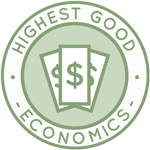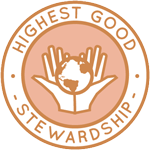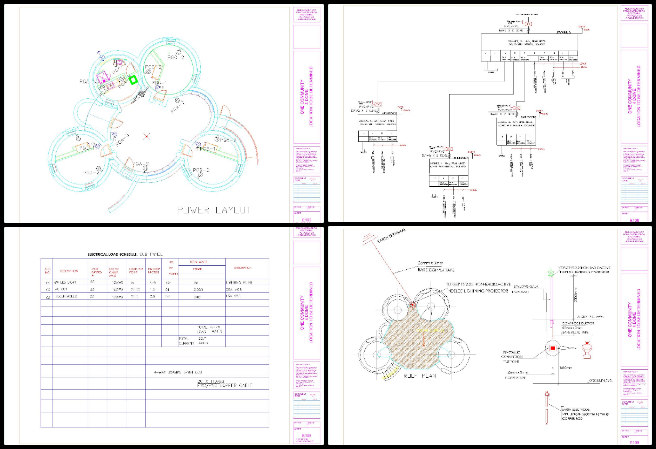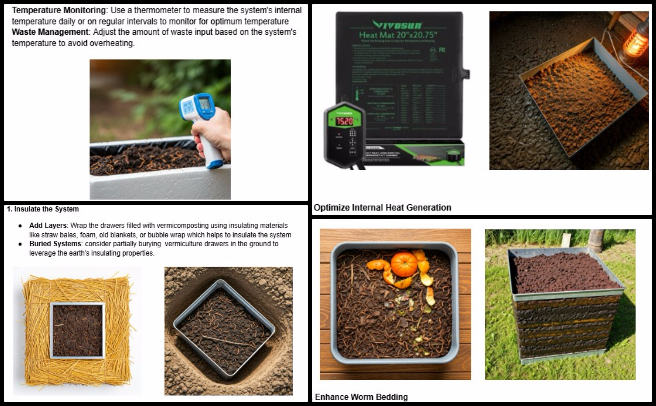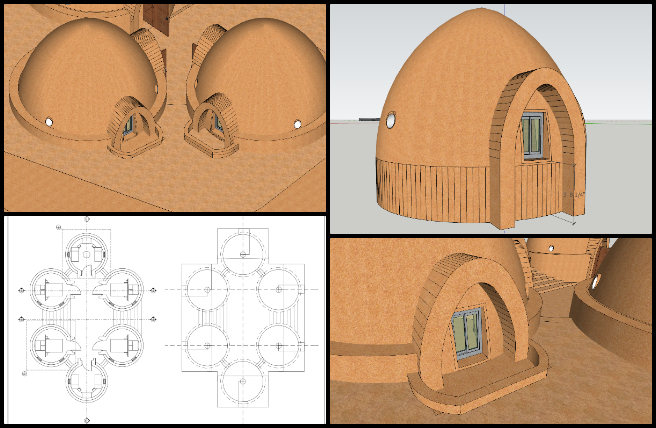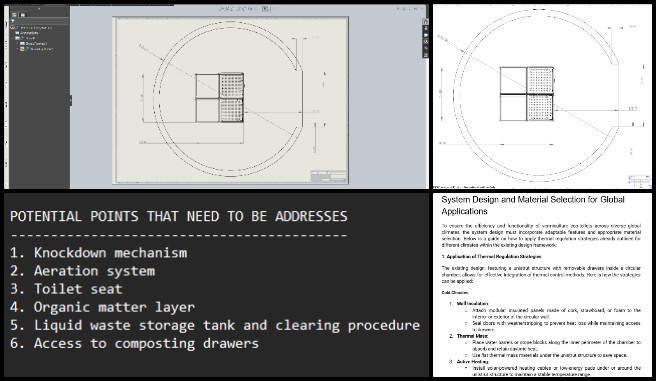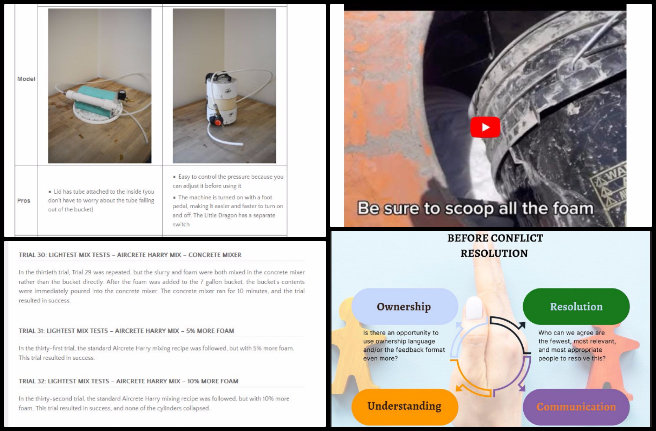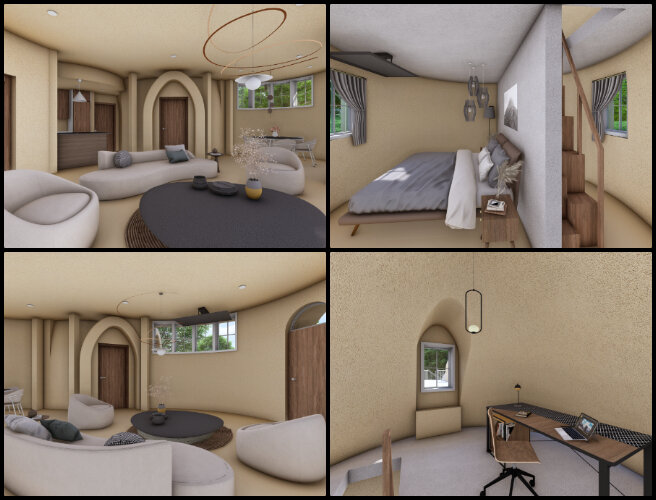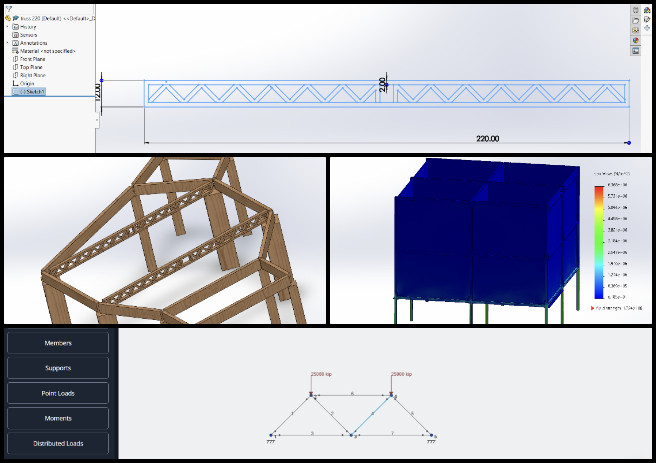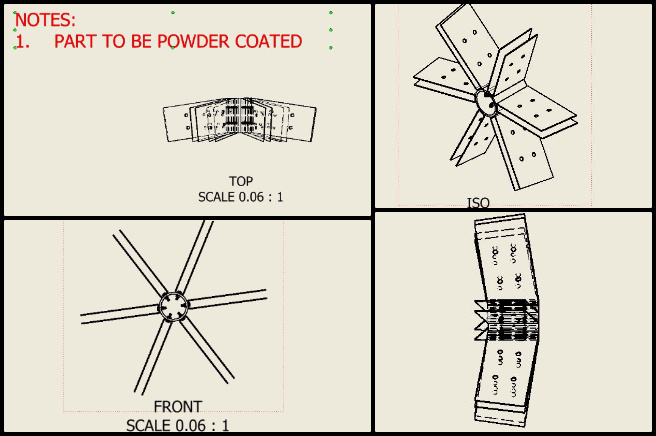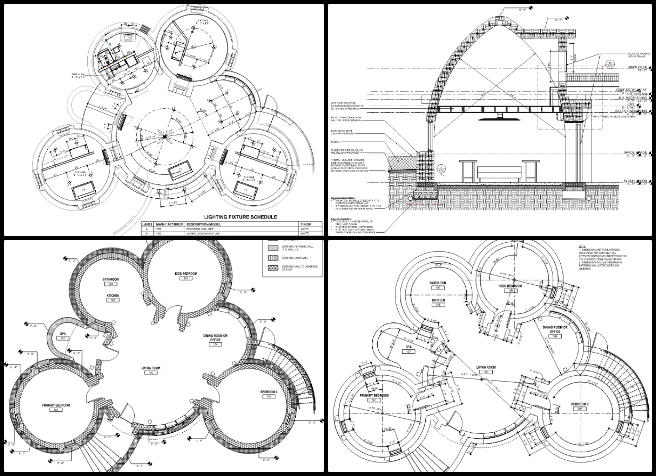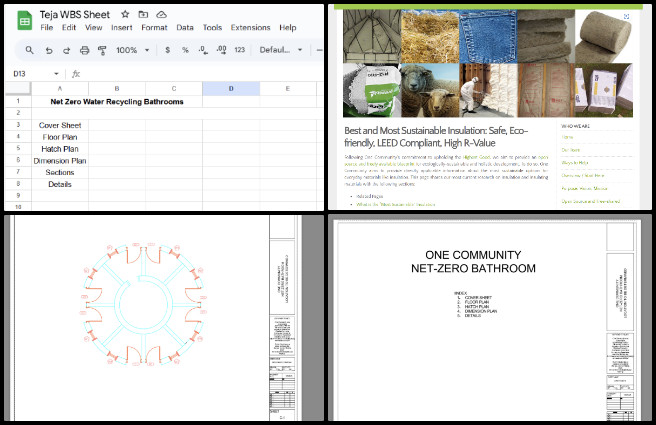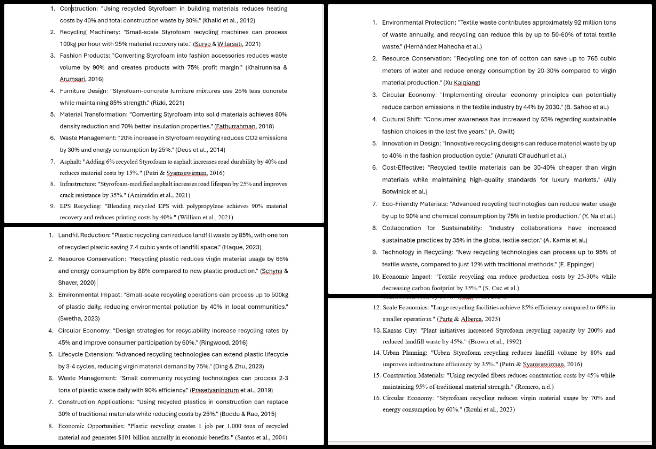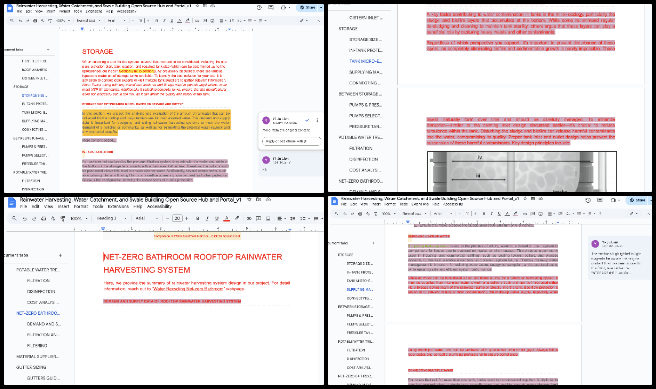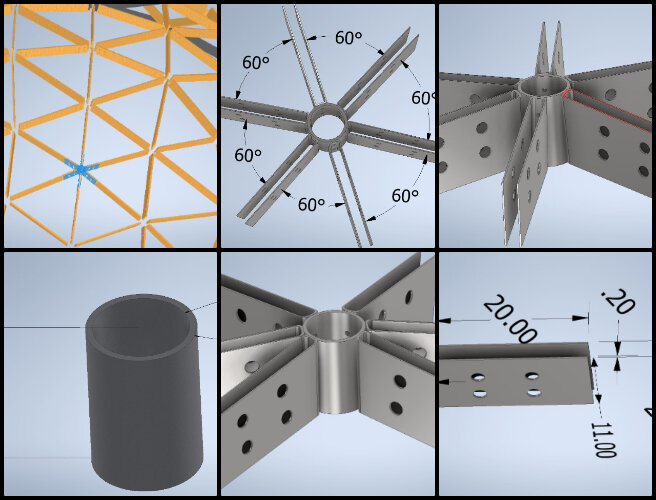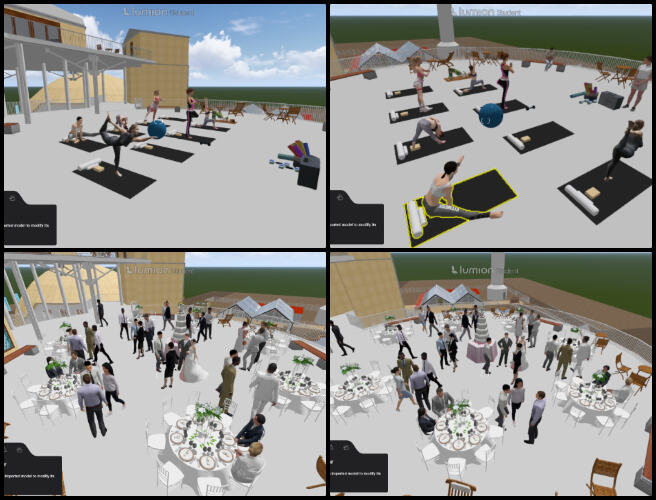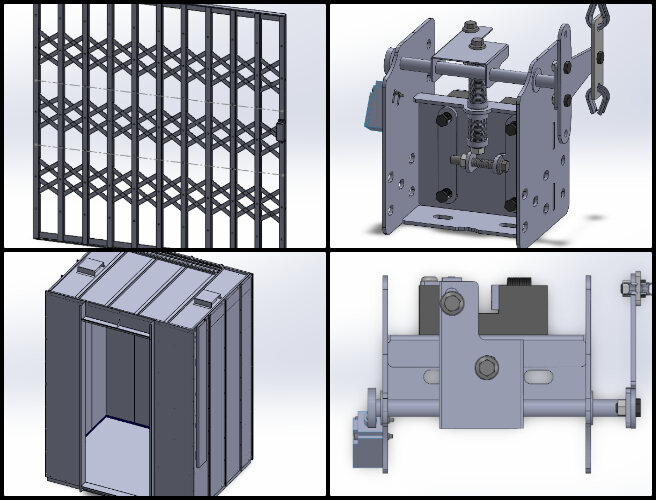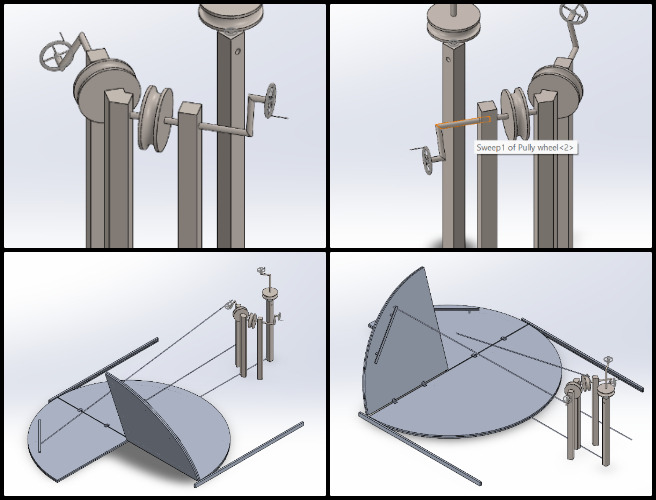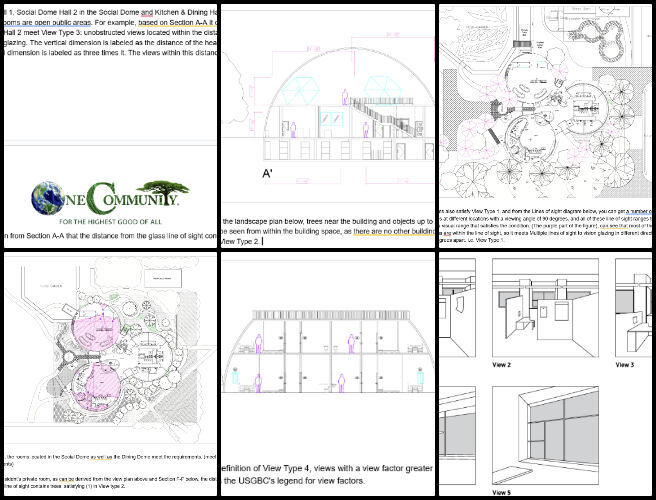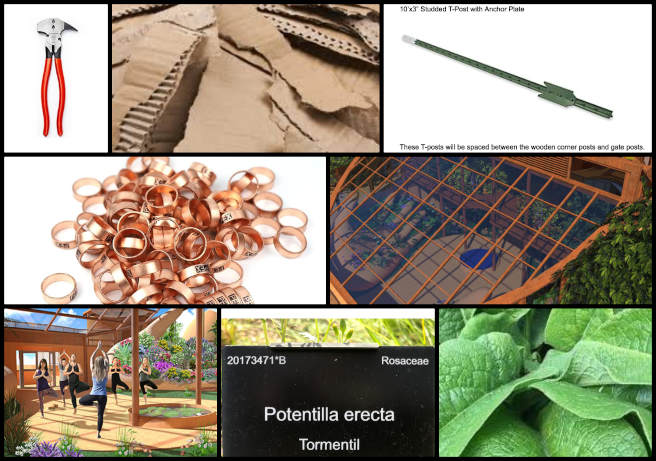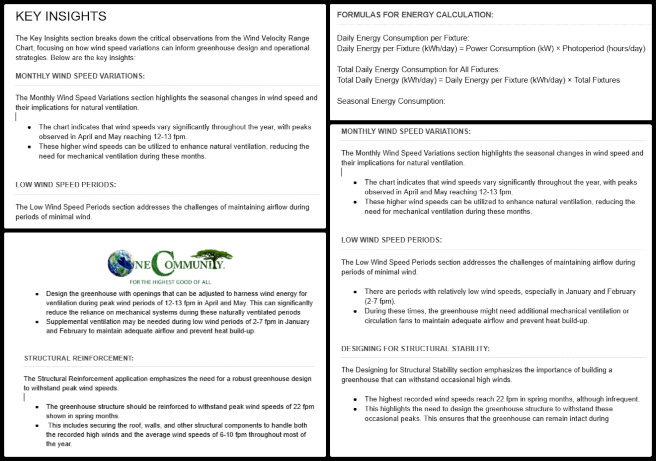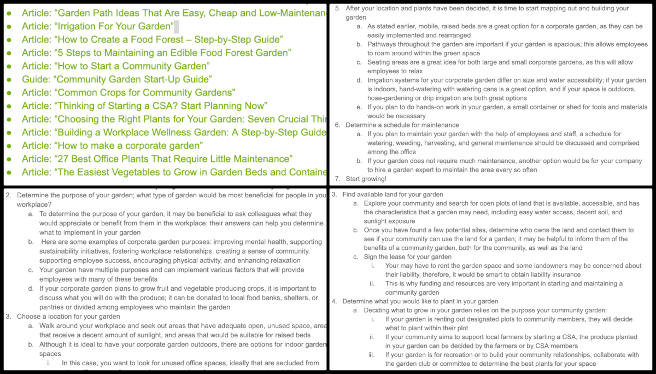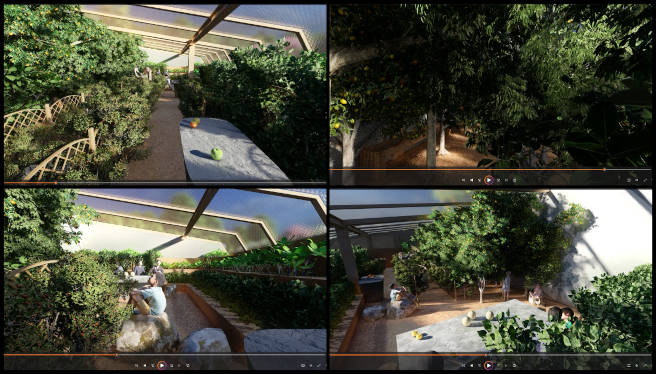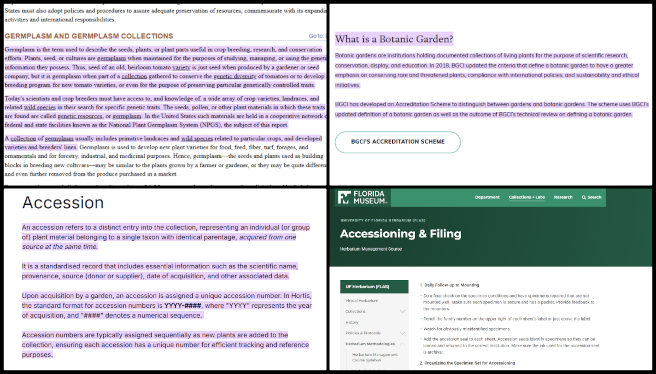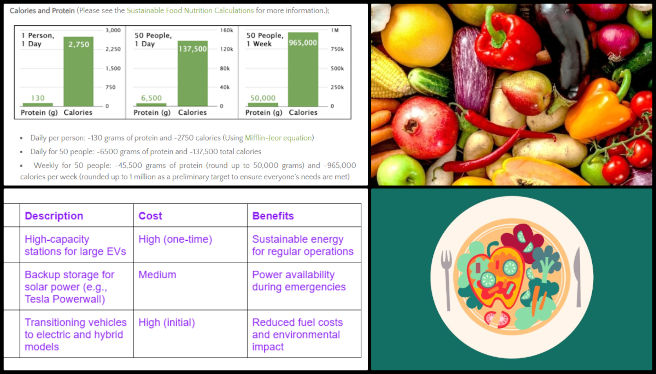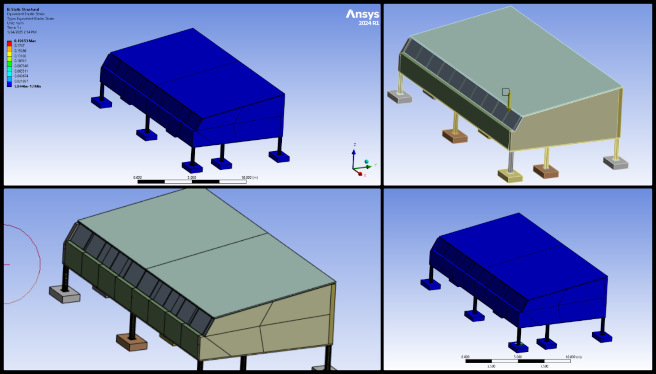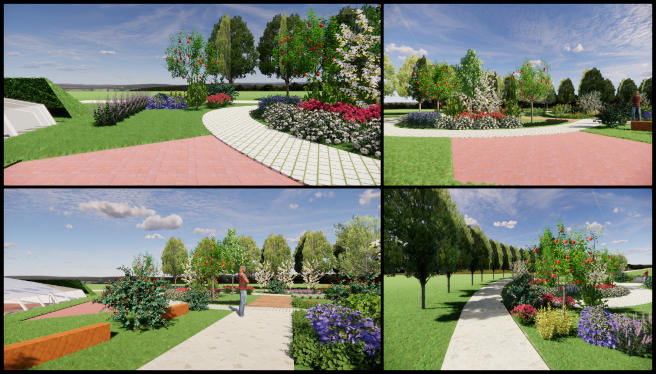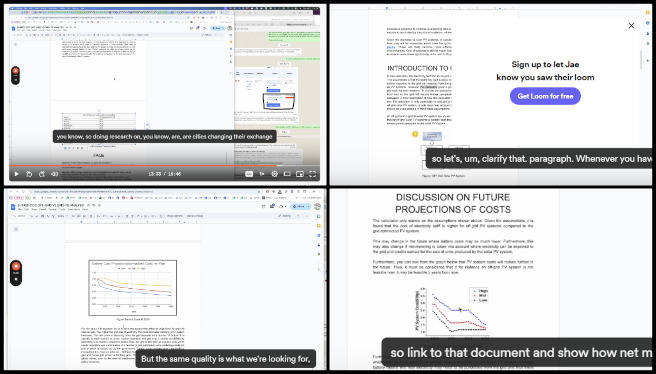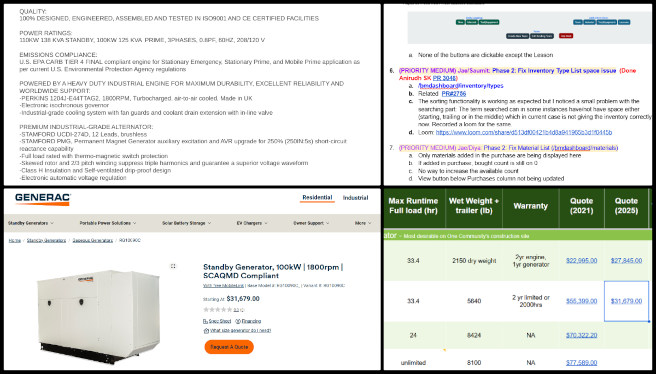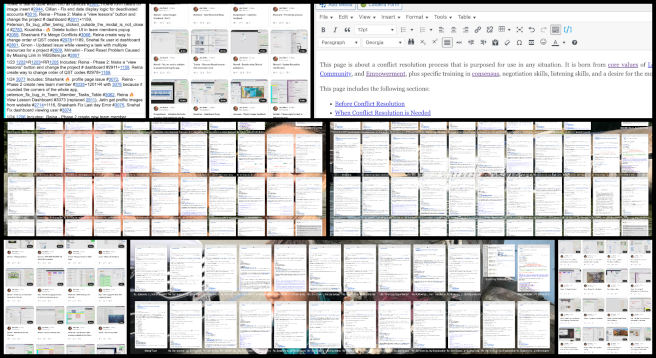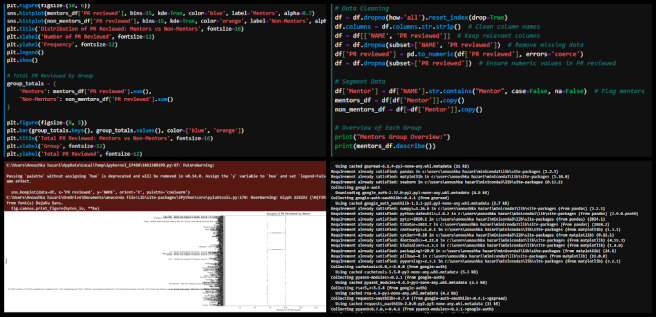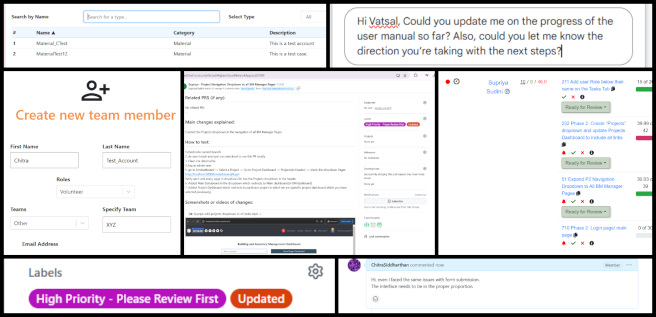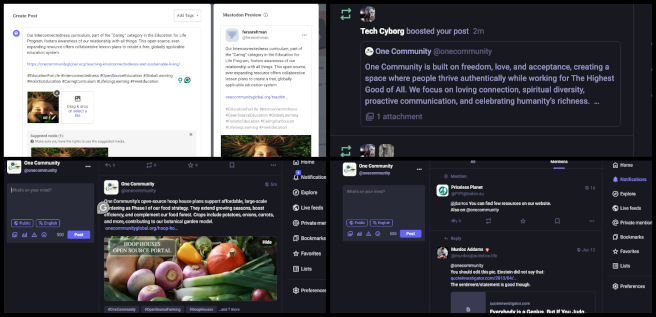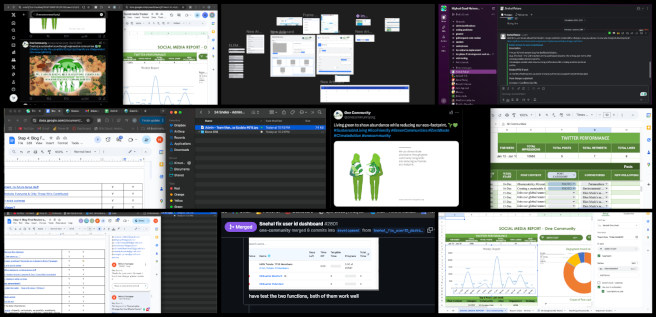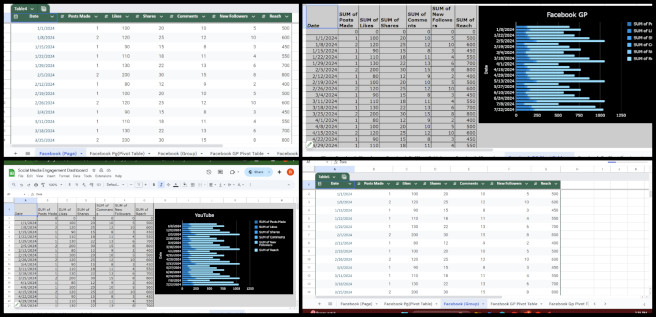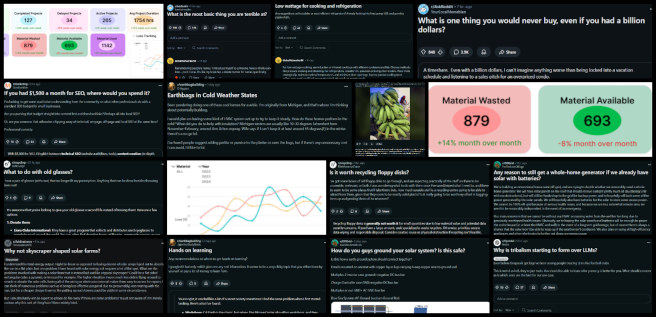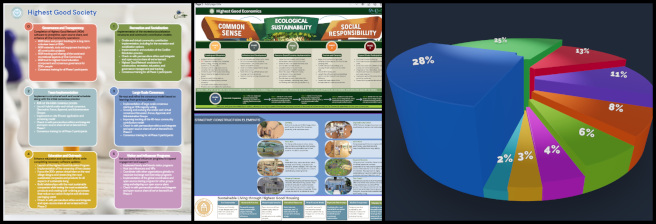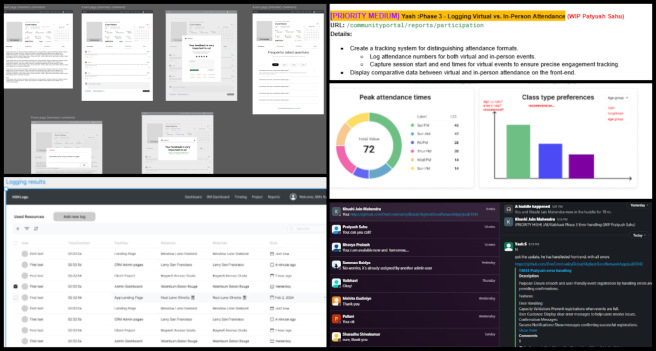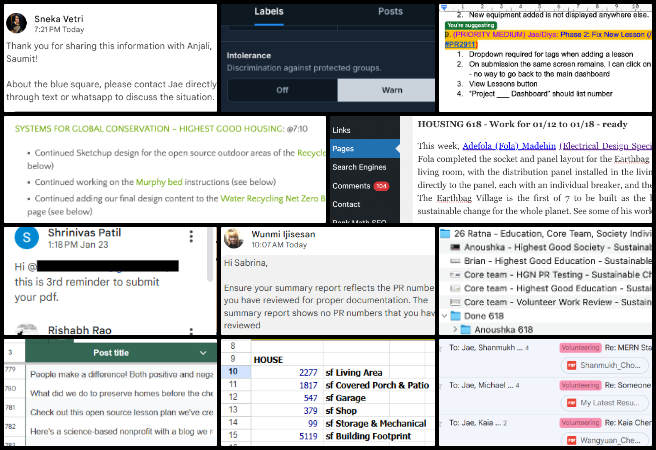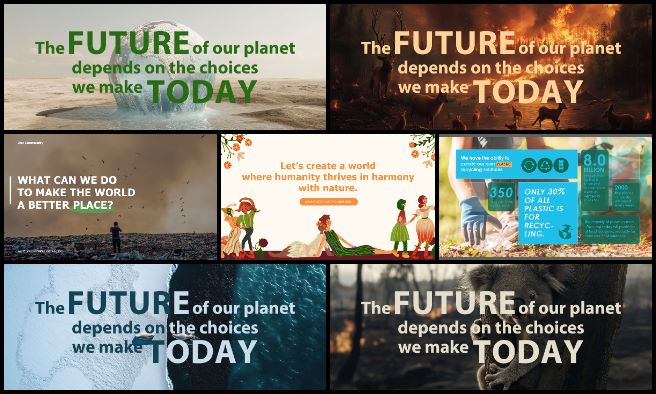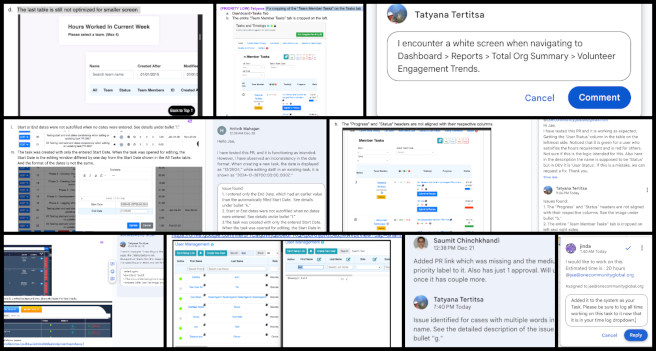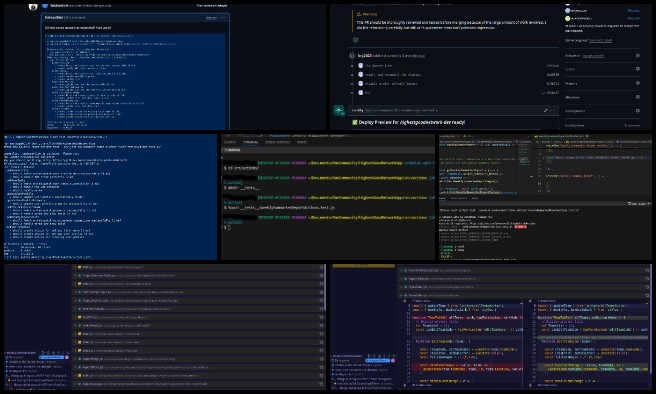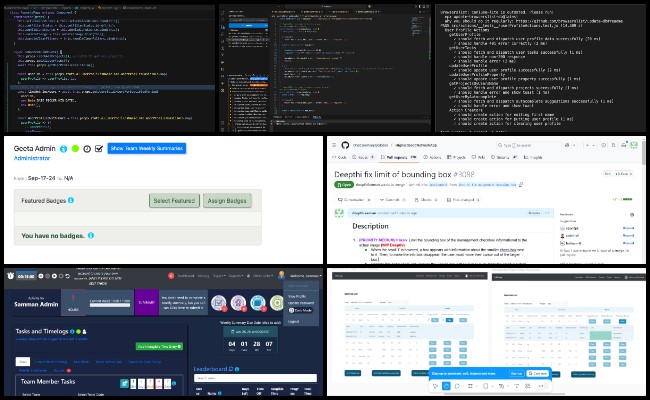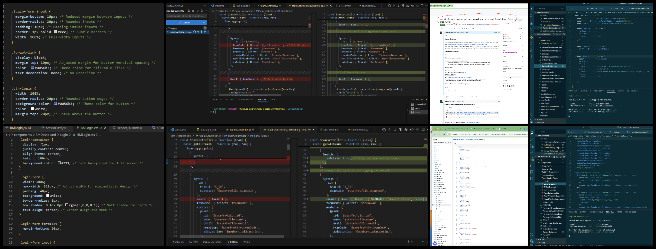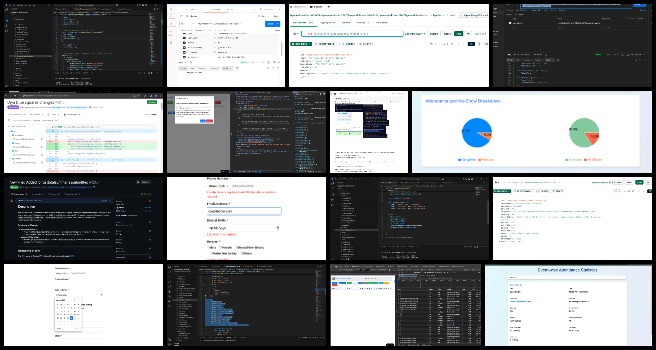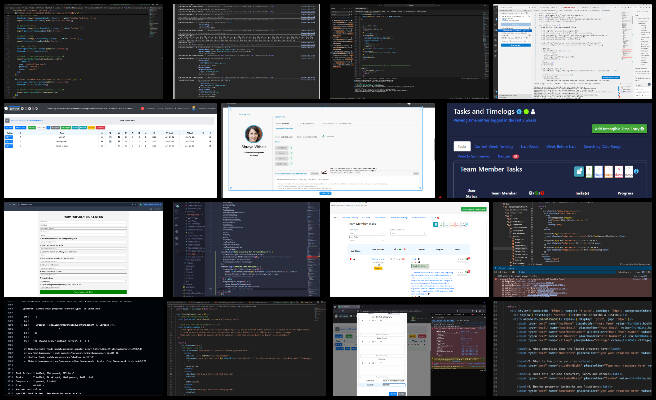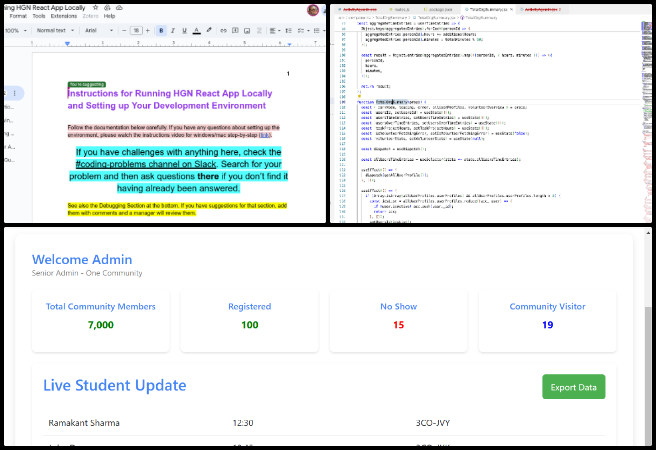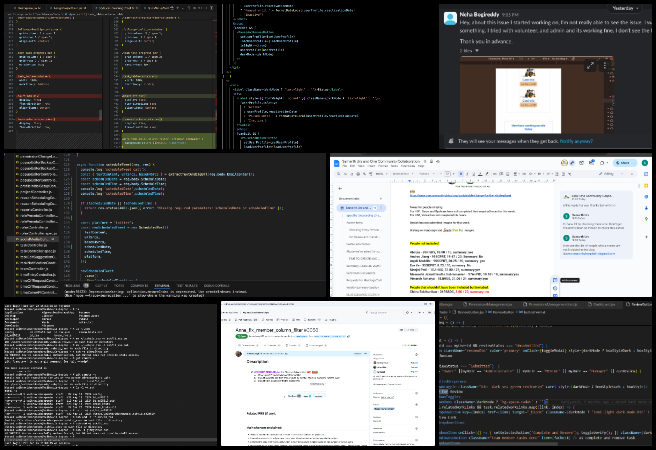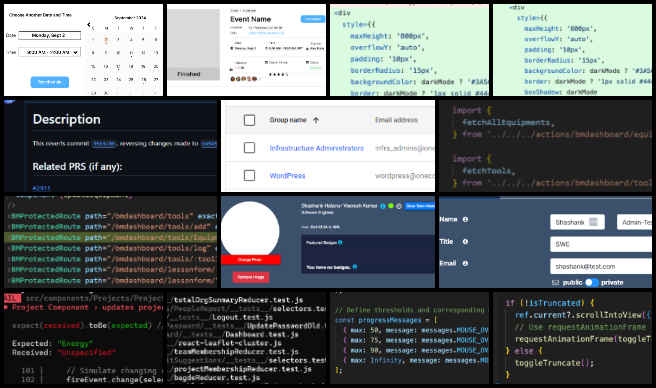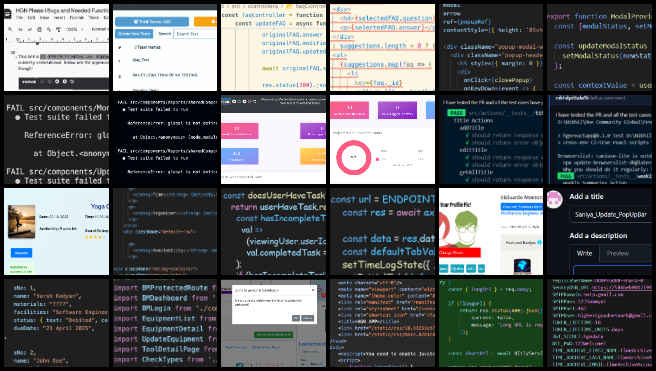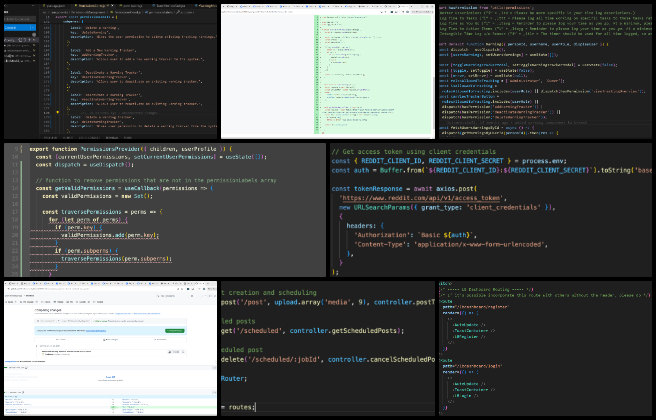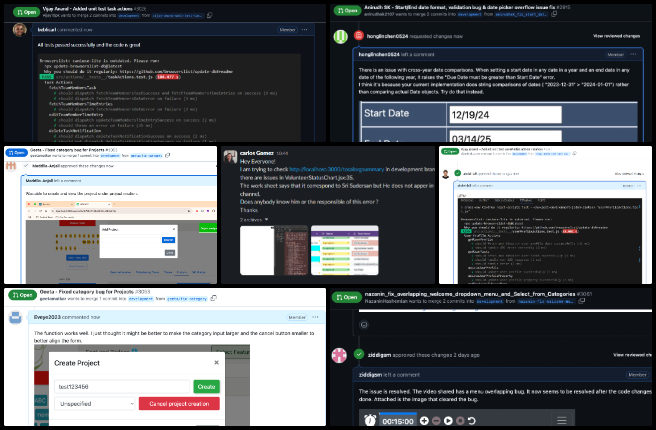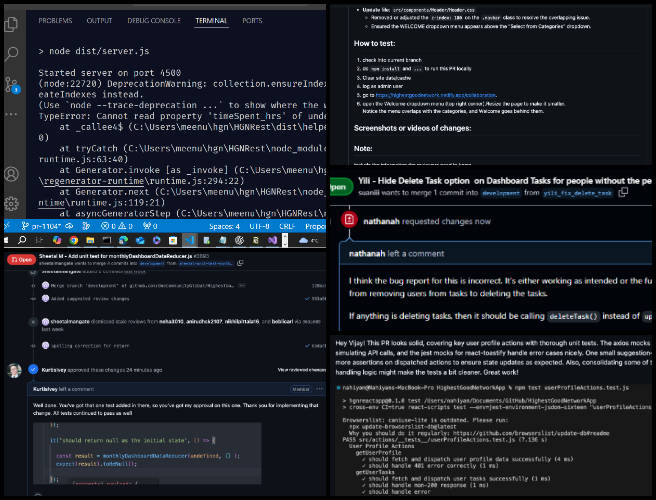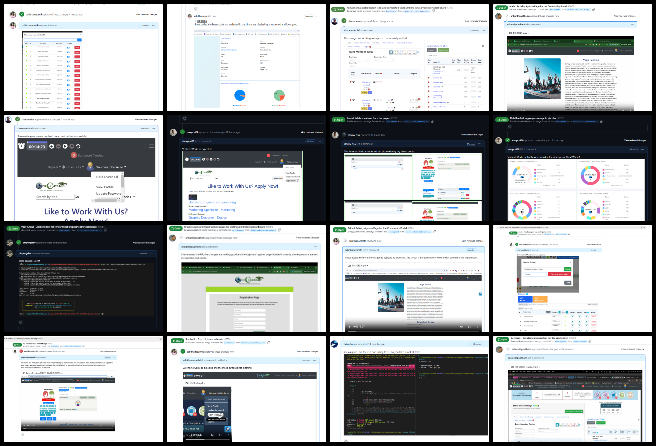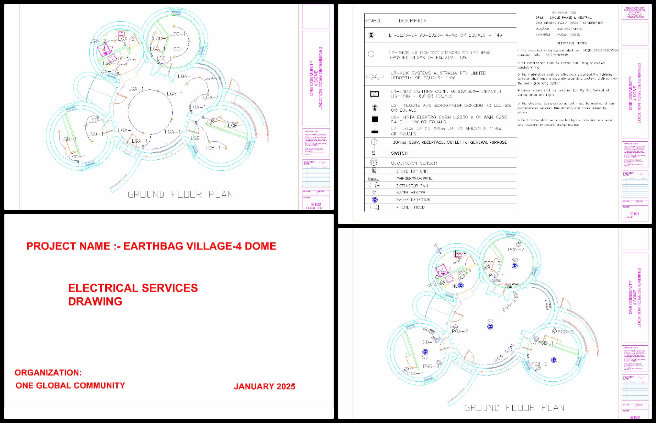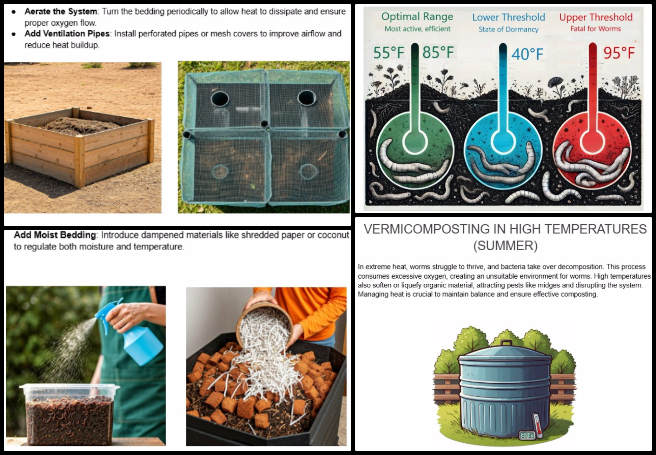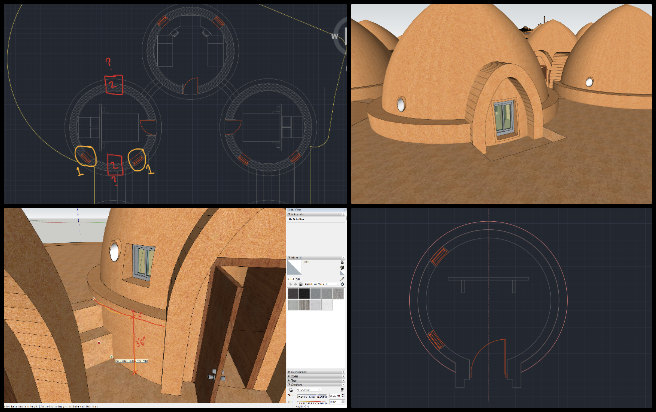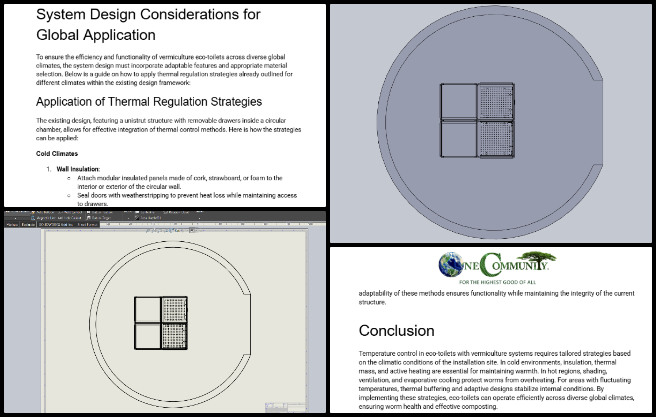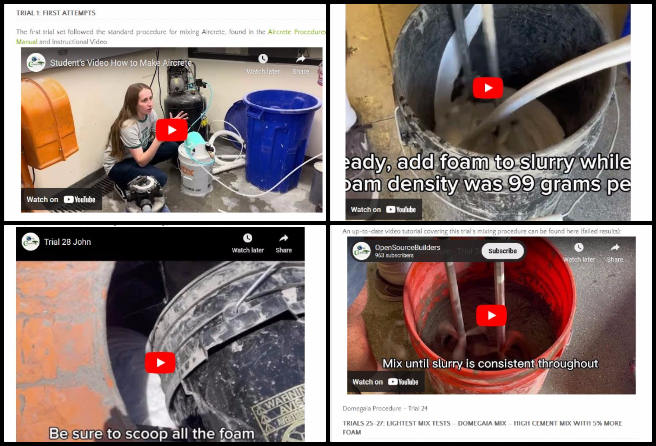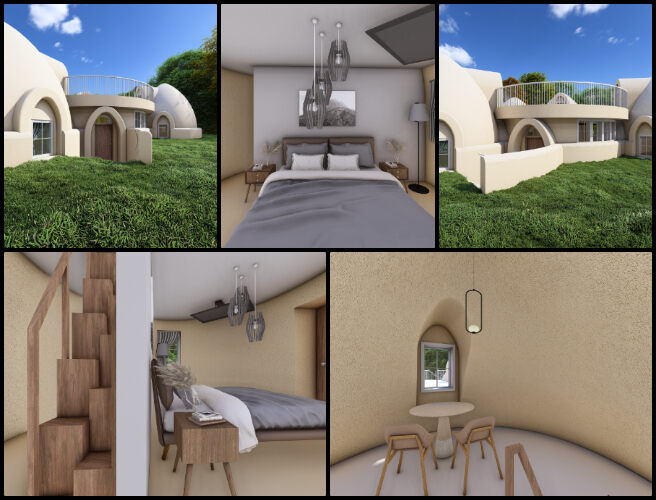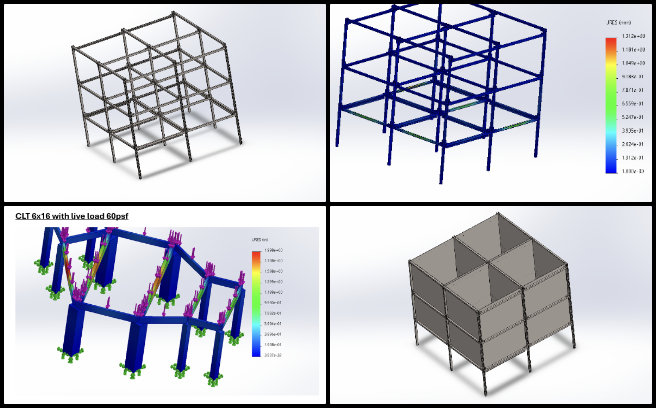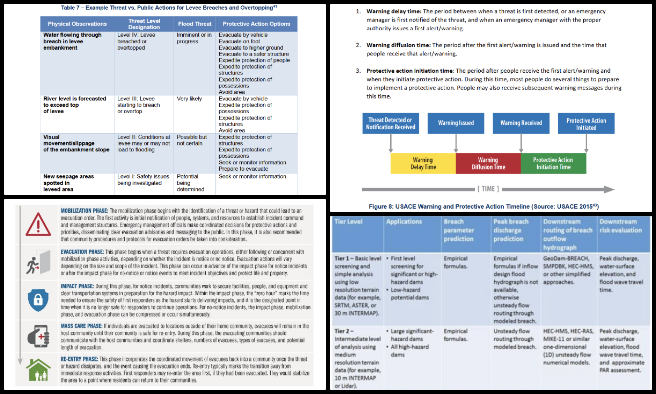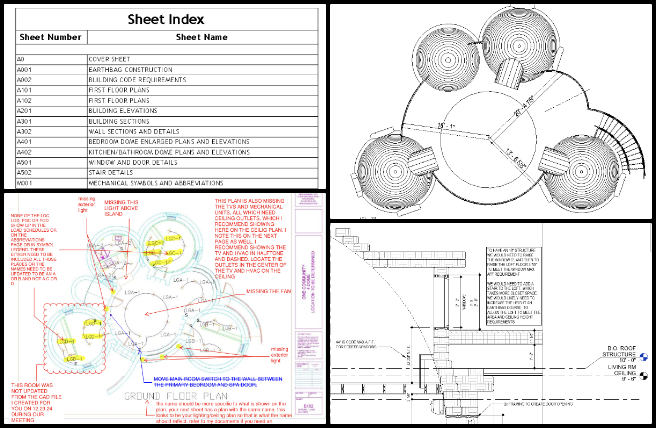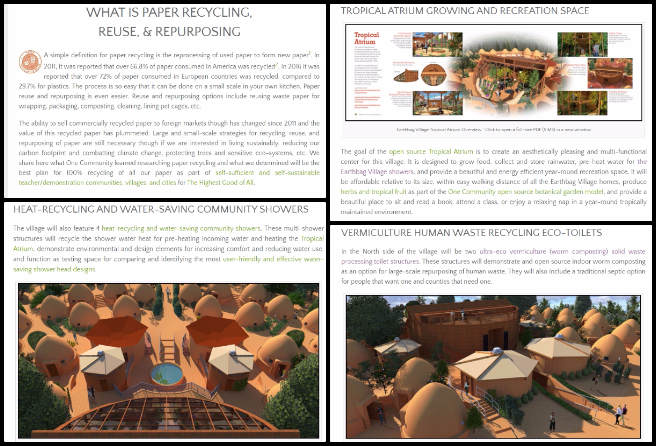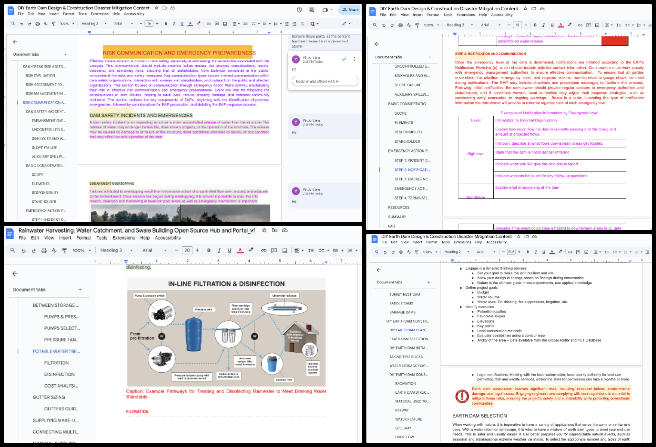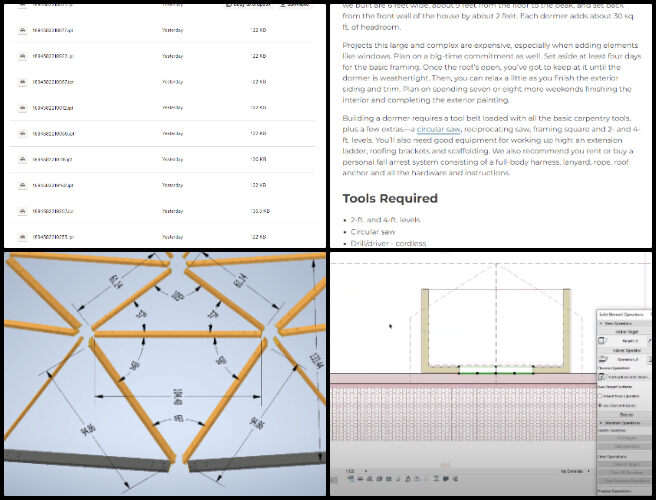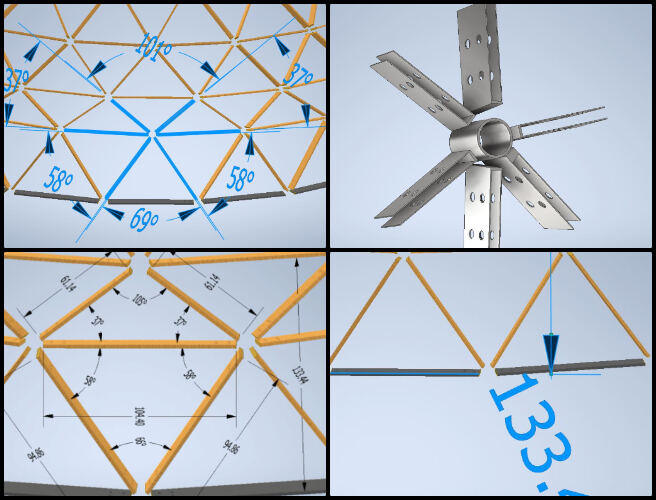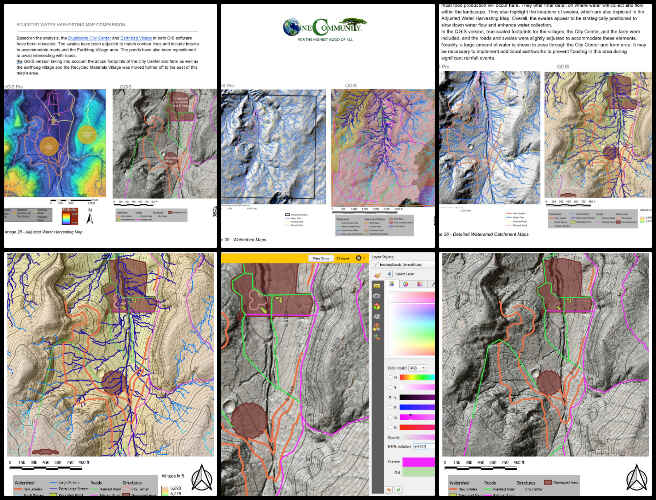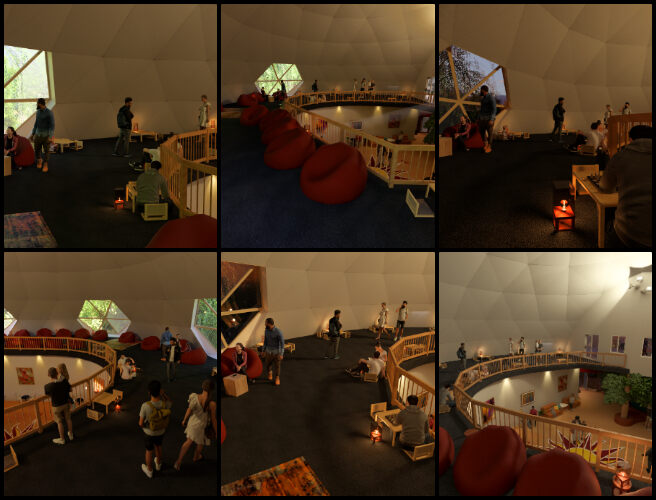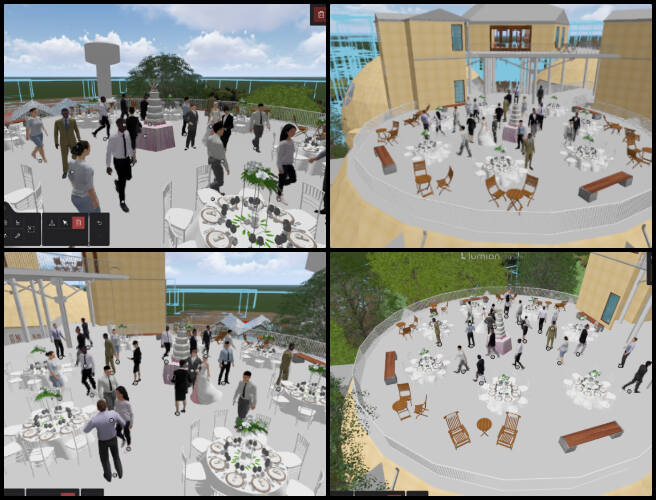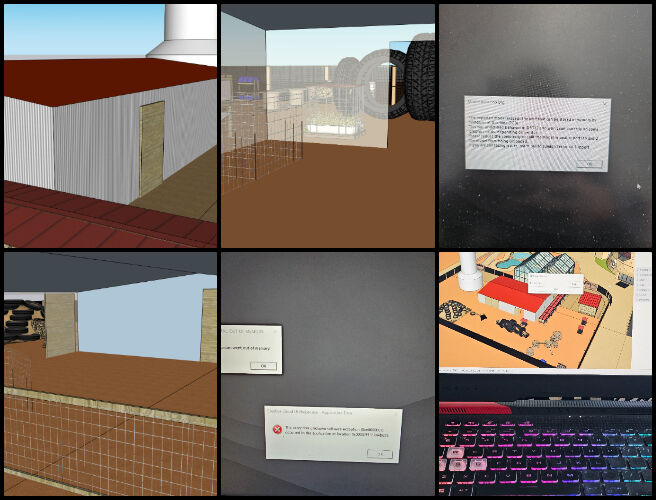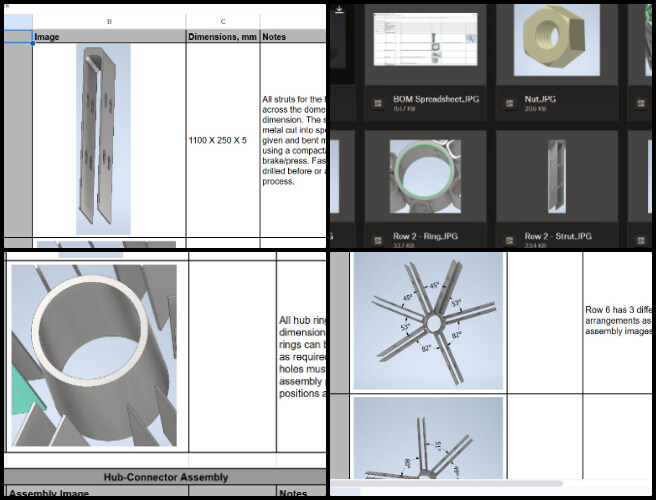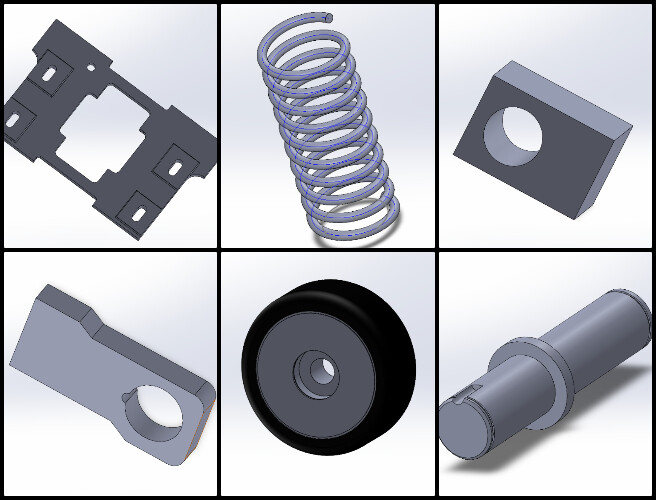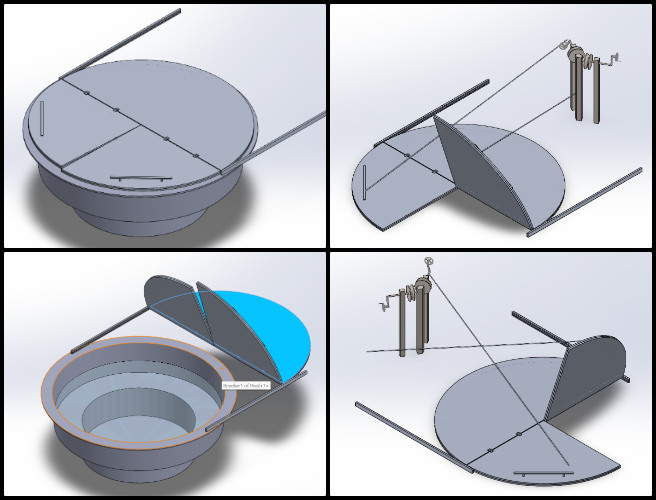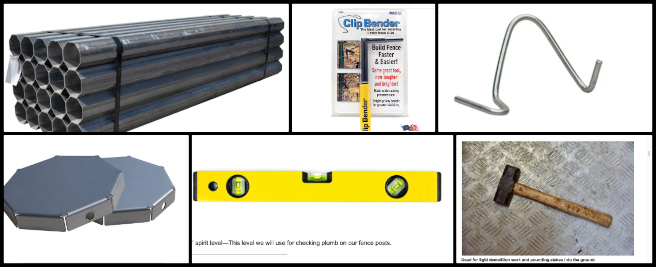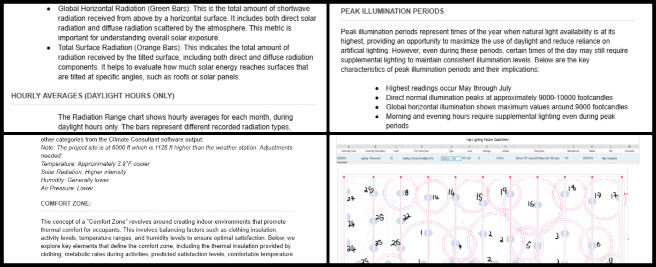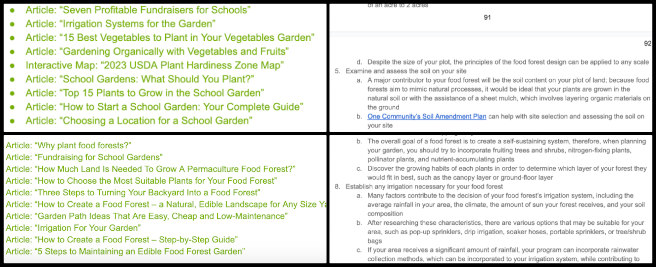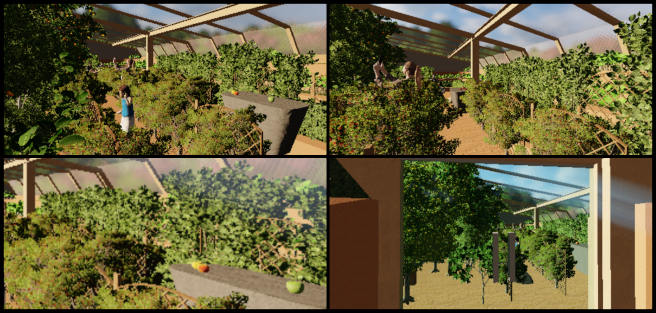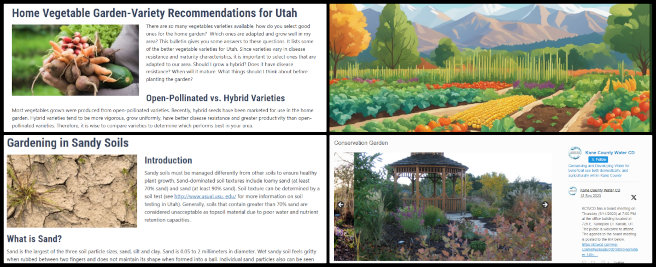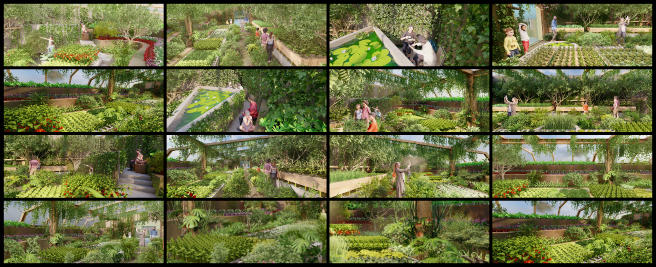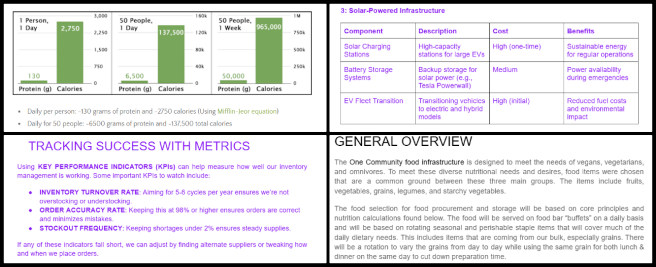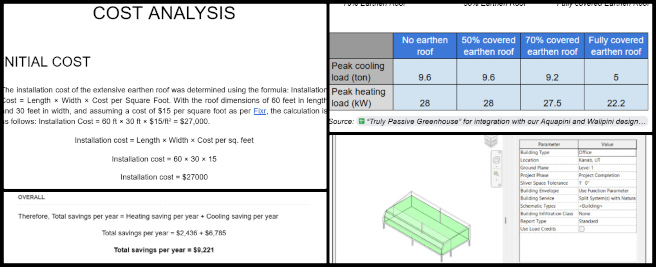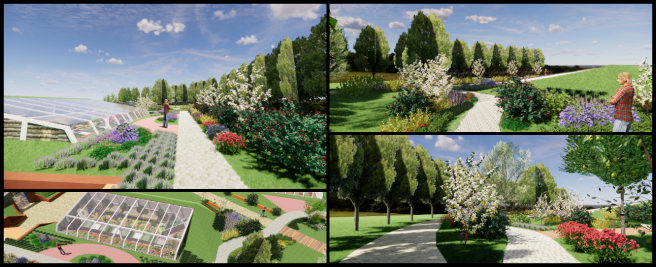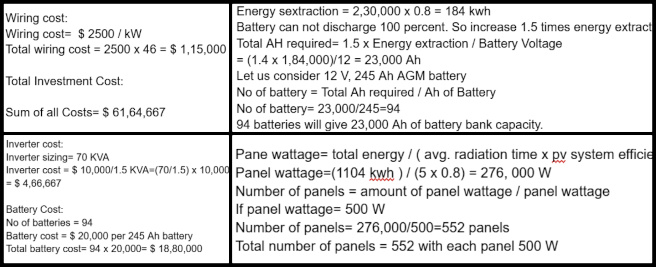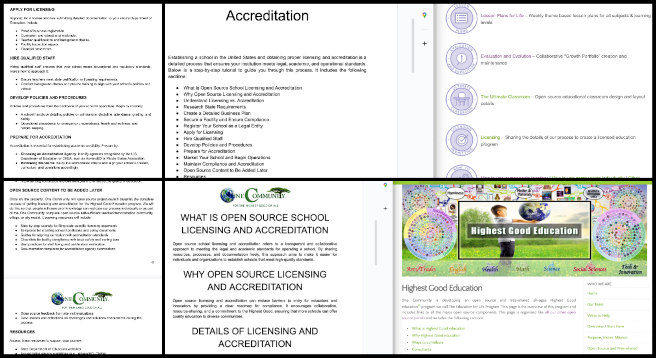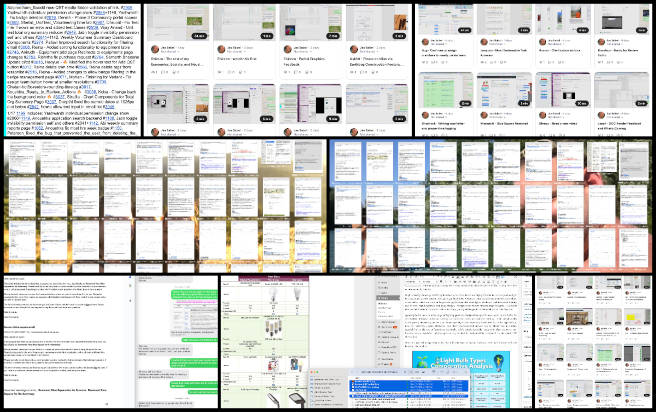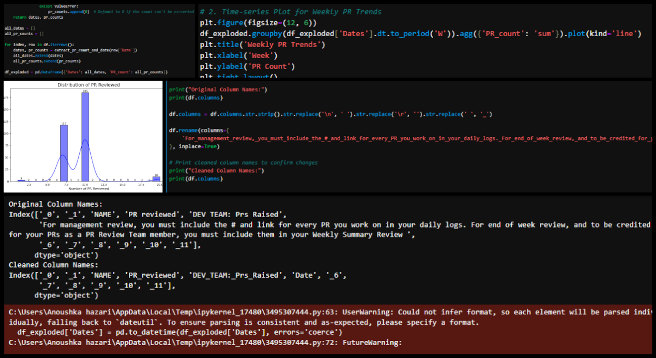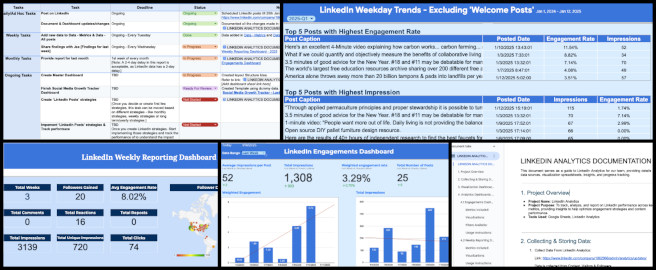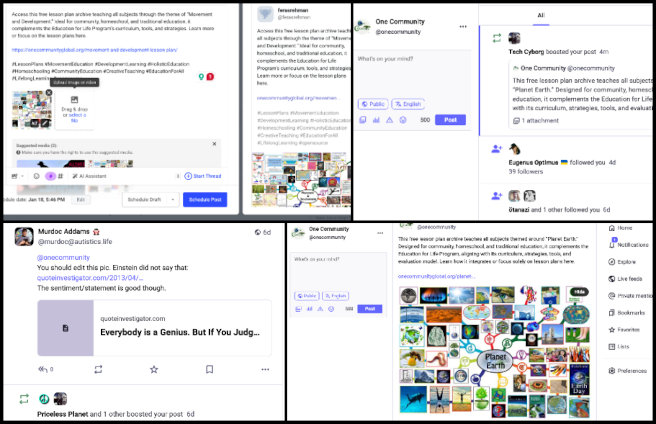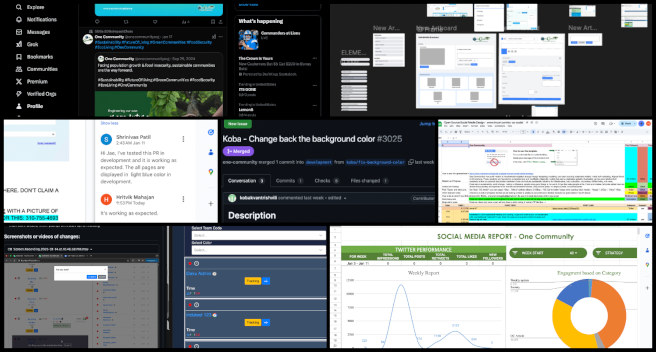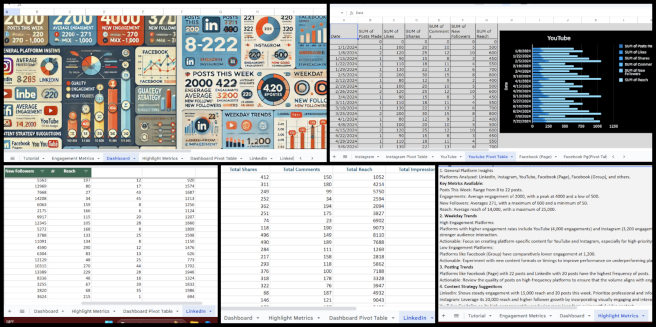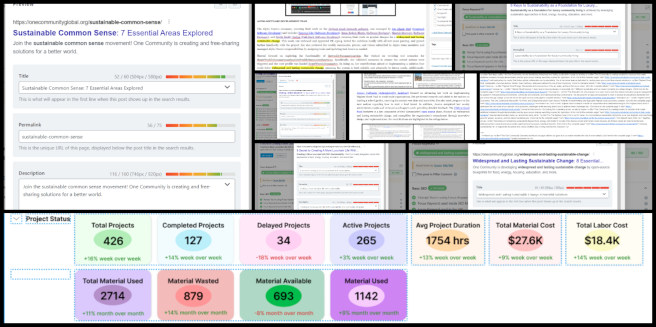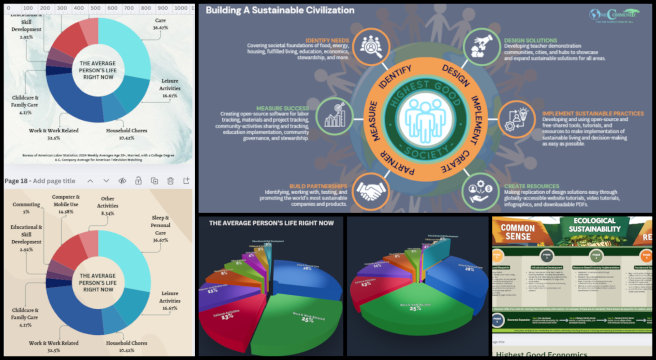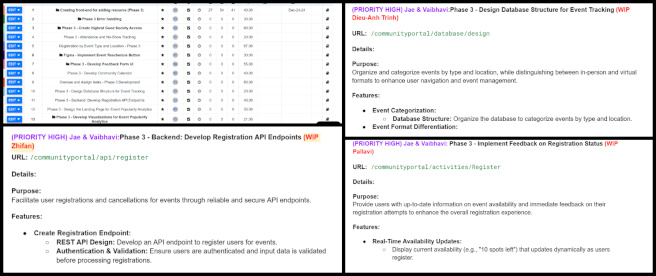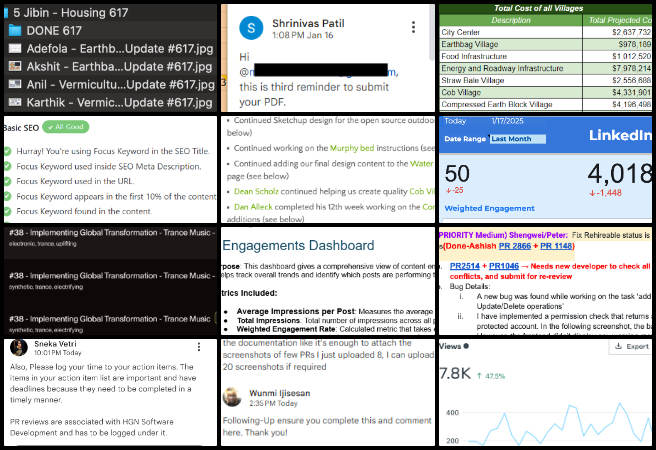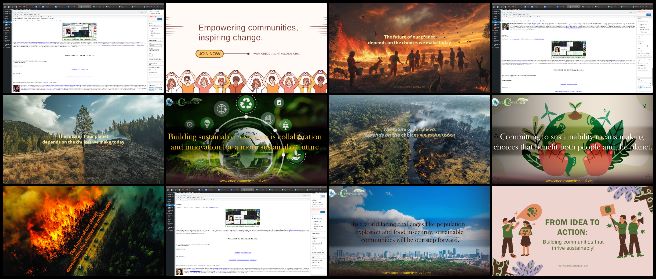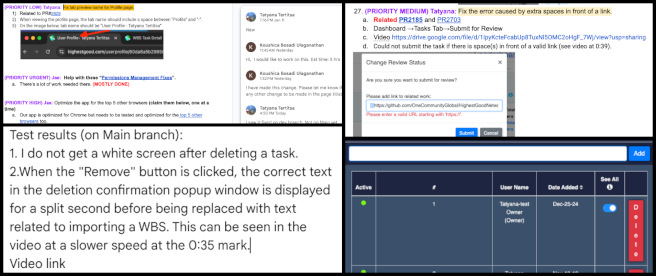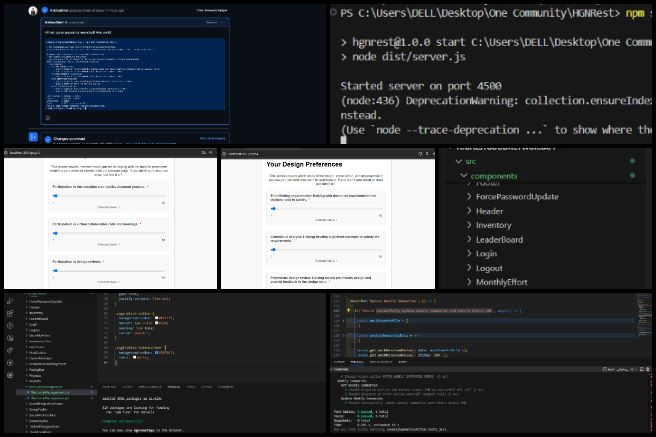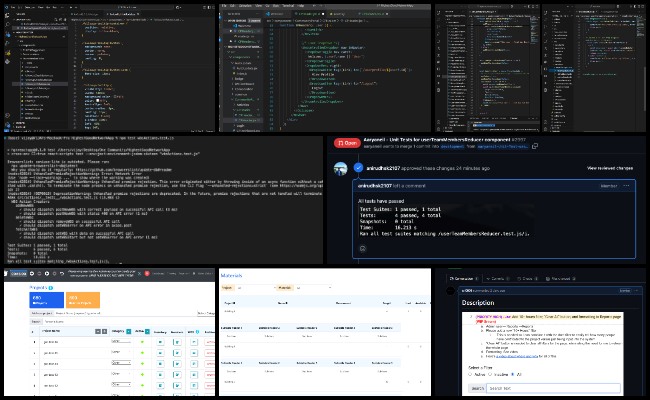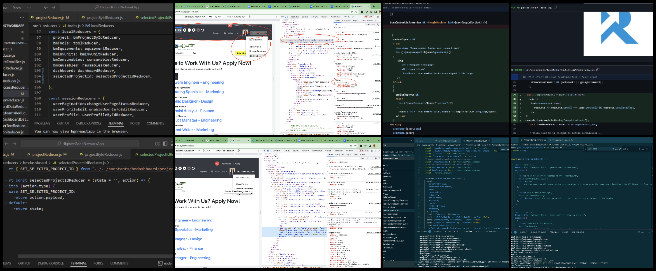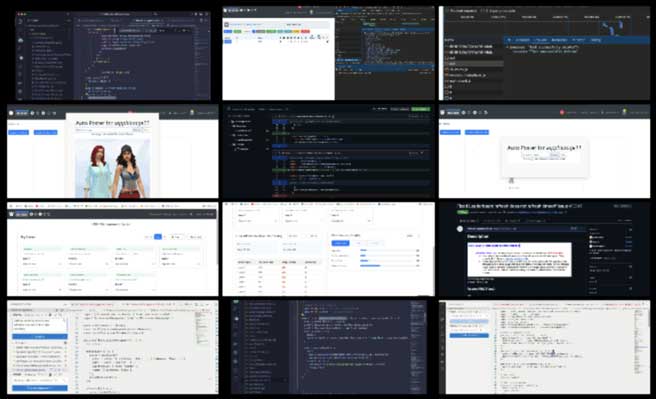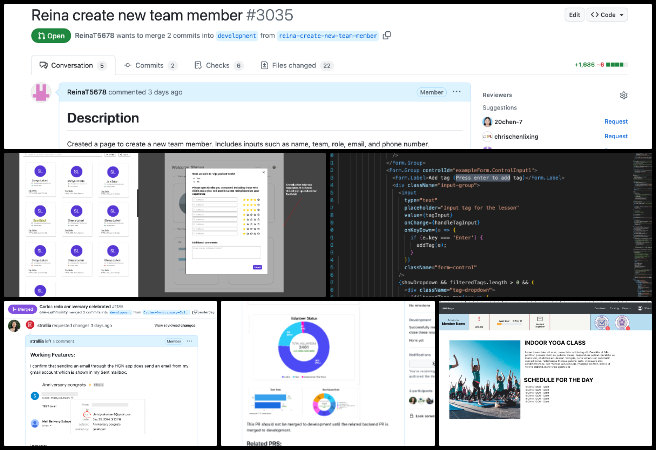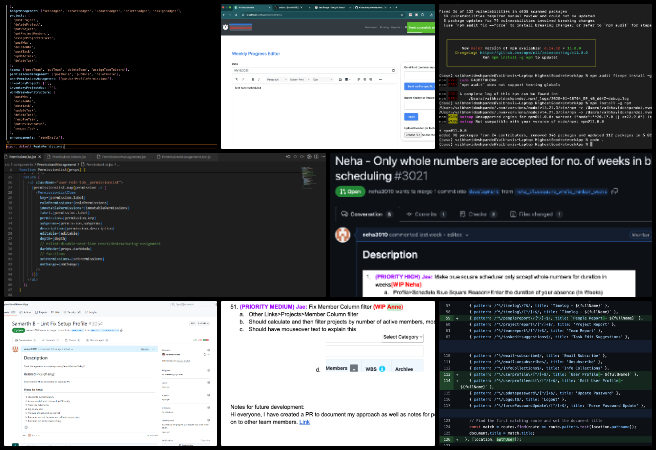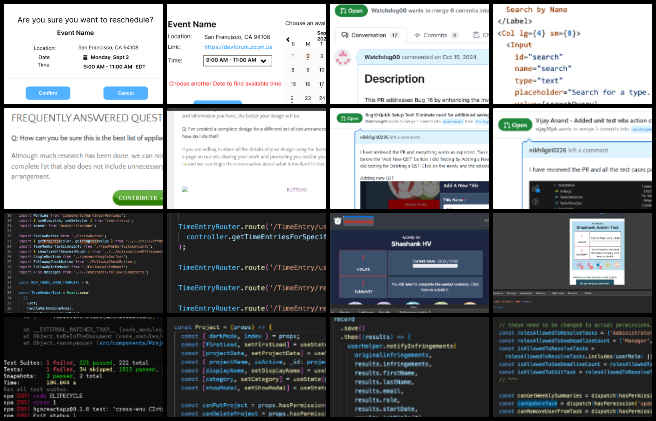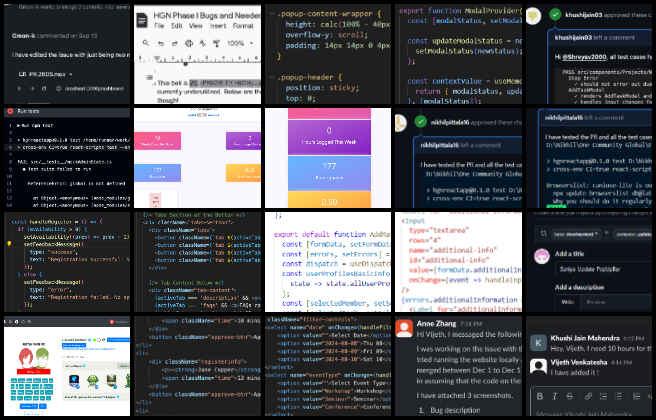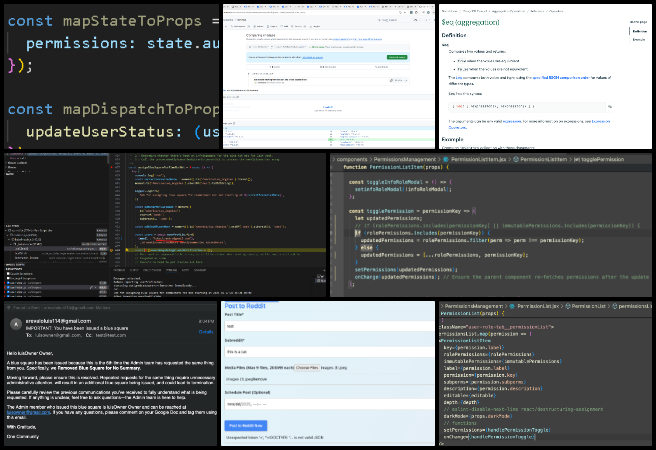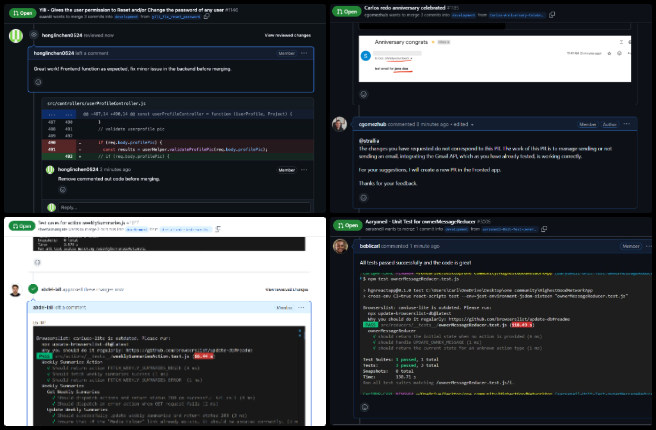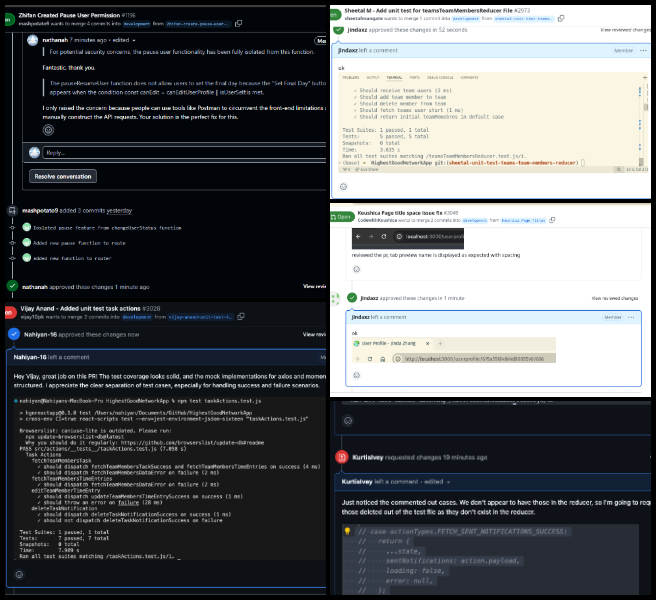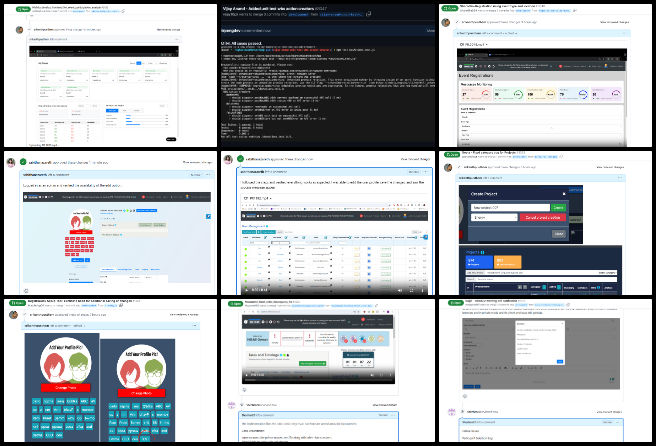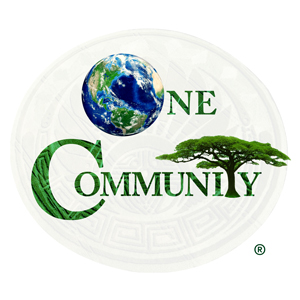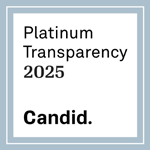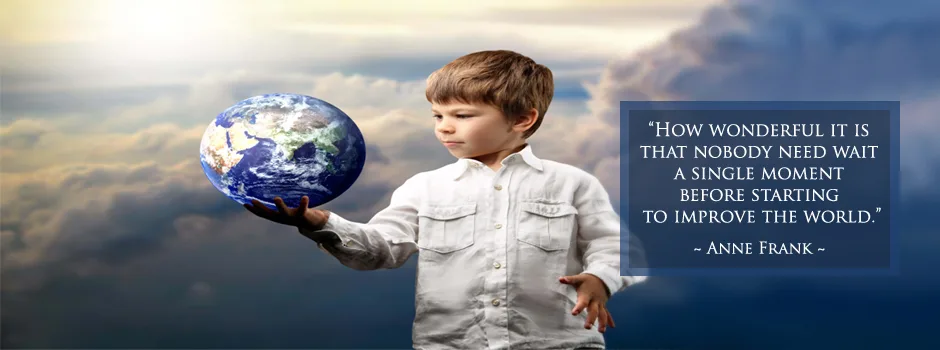
Earth-Care Communities – One Community Weekly Progress Update #619
Posted on January 27, 2025 by One Community Hs
At One Community, we are designing earth-care communities in the journey to regenerate our planet and create a world that works for everyone. Our all-volunteer team is building a self-replicating model focused on sustainable approaches to food, energy, housing, education, economics, and social architecture. By open sourcing and free sharing the entire process, we aim to inspire a global network of teacher/demonstration hubs, all for “The Highest Good of All.” Together, we are evolving sustainability and fostering fulfilled living through global stewardship practices designed to last for generations.
- Here’s our project overview
- Here’s our world-change methodology
- Here’s how this becomes self-replicating
- Here’s how we are open source and free-sharing all the do-it-yourself designs
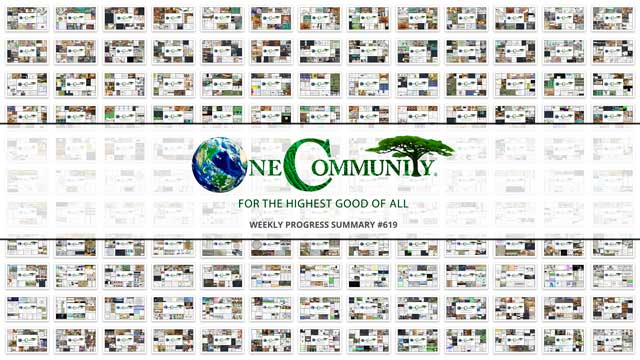
OUR MAIN OPEN SOURCE HUBS
Click on each icon to be taken to the corresponding Highest Good hub page.
One Community’s physical location will forward this movement as the first of many self-replicating teacher/demonstration communities, villages, and cities to be built around the world. This is the January 27th, 2025 edition (#619) of our weekly progress update detailing our team’s development and accomplishments:
Earth-Care Communities
One Community Progress Update #619
DONATE | COLLABORATE | HELP WITH LARGE-SCALE FUNDING
CLICK HERE IF YOU’D LIKE TO RECEIVE AN EMAIL EACH WEEK WHEN WE RELEASE A NEW UPDATE
YOU CAN ALSO JOIN US THROUGH SOCIAL MEDIA
ONE COMMUNITY WEEKLY UPDATE DETAILS
HIGHEST GOOD HOUSING PROGRESS
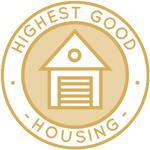 One Community is designing earth-care communities through Highest Good housing that is artistic and beautiful, more affordable, more space efficient, lasts longer, DIY buildable, and constructed with healthy and sustainable materials:
One Community is designing earth-care communities through Highest Good housing that is artistic and beautiful, more affordable, more space efficient, lasts longer, DIY buildable, and constructed with healthy and sustainable materials:
- Learn about: Our Upcoming Crowdfunding Campaign
- Learn about the different village models: 7 Sustainable Village Models
- Visit the open source portals for the first two: Earthbag Village OS Hub | Straw Bale Village OS Hub
This week, Adefola (Fola) Madehin (Electrical Design Specialist) continued his work with Earthbag Village electrical designs. Fola completed the lighting circuit and cable wiring for the ground floor of the Earthbag 4 Dome Village project. Switches were installed and connected to the wiring for the lighting fixtures as part of the electrical design. Additionally, the lettering for the electrical circuit was finalized for inclusion in the schematic diagram for the distribution board design. The Earthbag Village is the first of 7 to be built as the housing component of One Community’s open source model for earth-care communities. See some of his work in the collage below.
Adil Zulfiquar (Engineer) continued working on the Vermiculture Toilet engineering designs. The vermiculture operating conditions and schedule report was revised to incorporate feedback, with added sections to improve clarity and detail in the operating conditions. Additional images were included to provide better guidance on composting operations and illustrate emergency measures, making the report more practical and aligned with end-user needs. The Earthbag Village is the first of 7 to be built as the housing component of One Community’s open source model for earth-care communities. See below for some of the pictures related to work.
Akshit Sethi (Architectural Designer) continued working on updating the Earthbag Village SketchUp and AutoCAD layouts. Work involved updating the SketchUp model to align with the design document for the domes. Tasks included refining the window design for the below-grade four-cluster dome and ensuring accuracy in both AutoCAD and SketchUp files. Updates focused on adjusting window placements and dimensions to meet project specifications, improving the overall accuracy and consistency of the design representation. The Earthbag village is the first of 7 villages to be built as part of One Community’s open source model for earth-care communities. See his work in the collage below.
Anil Karathra (Mechanical Engineer) continued advancing the engineering and design of the Vermiculture Toilet for the Earthbag Village project. Screenshots of previous work were uploaded to Dropbox, and progress was reviewed to identify and address a list of issues. The creation of 2D drawings for the vermiculture toilet structure in SolidWorks was completed, and layouts were further refined. Research findings on solar heating and cooling solutions for the vermiculture chamber were documented and formatted. Participation in the weekly team meeting included gathering updates, assigning tasks, and aligning project goals with team members. This commitment to earth-care communities drives the development of innovative, eco-friendly solutions that balance environmental responsibility with high standards of functionality. See below for pictures related to this work.
Charles Gooley (Web Designer) continued working on the Aircrete Engineering and Research: Compression Testing, Mix Ratios, R-value, and More page. Charles contributed to the Aircrete Engineering and Research project by focusing on compression testing, mix ratios, and R-value analysis. Videos were uploaded to the One Community YouTube channel, with some flagged for potential replacement due to black borders. Comments on the associated page were addressed, and tools for the Materials section are pending addition to the Master Tools and Equipment page for proper linking. The “Before Conflict Resolution” image on the Conflict Resolution page was replaced and linked to an enlarged version, and the related pages are now ready for review. Aircrete is an alternative being explored for the Earthbag Village, a foundational part of One Community’s open-source model for earth-care communities. Take a look at some of the work in the images below.
Faeq Abu Alia (Architectural Engineer) continued his work on the Earthbag Village 4-dome home renders. He focused on progressing the modeling of a 4-dome home using SketchUp and Lumion, addressing both interior and exterior design elements. The exterior modeling was completed in SketchUp, while work on the interior design continued to ensure it aligned with the overall concept. A walkthrough video was rendered, showcasing Room 1, the living room, and the dining room, reflecting the current stage of development and the details incorporated into the project. The Earthbag Village represents a fundamental element of One Community’s open-source approach, dedicated to the mission of designing earth-care communities. View examples of this work in the pictures provided below.
Karthik Pillai (Mechanical Engineer) continued helping finish the Vermiculture Toilet engineering and helping with the Earthbag Village 4-dome home roof plan. Karthik focused on finite element analysis (FEA) for the four-dome cluster project, specifically assessing the deflection of I-section beams under an updated live load based on Michaela’s directions. The analysis initiated discussions about potential alternatives, including replacing the I-section beams with steel beams or using wooden truss beams to better meet structural requirements, with further evaluation needed. Additionally, Karthik worked on refining the design of the vermiculture toilet, addressing challenges related to the complexity of its components and intricate design requirements, with ongoing efforts aimed at finalizing the design. The Earthbag Village is the first of 7 to be built as the housing component of One Community’s open source model for earth-care communities. See the work in the collage below.
Manjiri Patil (Mechanical Design Engineer) continued helping to complete the Vermiculture Toilet engineering and designs. Manjiri focused on finalizing the ventilation system for the vermiculture project, ensuring it aligns with required specifications and functionality. She also reviewed all components of the City Center Hub Connector’s dome and prepared detailed 2D drawings to support the design of the connectors, contributing to the accuracy and development of the project. This approach for earth-care communities supports the development of innovative solutions that are both environmentally friendly and effective. See below for pictures related to this work.
Michaela Silva (Architect) continued working on the interior details for the Earthbag Village 4-dome home design. Michaela updated the Revit model and construction documents, reviewing and adjusting views to ensure proper dimensions and incorporating a third window in the primary bedroom. She also aligned the secondary beams with the dimensions used by Karthik in the structural study, as they were confirmed to meet the updated load requirements. The Earthbag Village is the first of 7 villages to be built as part of One Community’s open source model for earth-care communities. See her work in the collage below.
Sai Subhash Teja Deevi (Civil Engineer) continued working with the Earthbag Village electrical designs. Teja analyzed the completed design plan of the four dome houses to develop comparable plans for Net-zero water recycling bathrooms. He created a Google spreadsheet to organize key project elements and began drafting a cover sheet and floor plan sheet for the Net-zero Bathrooms. Additionally, he reviewed the section on Best and Most Sustainable Insulation as part of the sustainable processing of non-recyclables. The Earthbag Village is the first of 7 to be built as the housing component of One Community’s open source model for earth-care communities. See the work in the collage below.
Vimarsh Acharya (Engineering Manager and Technical Reviewer) continued working on identifying sustainability-related arguments covering the Highest Good Lifestyle Considerations and sourcing quality research to support each one. Vimarsh focused on creating quotes that incorporate numerical data to improve clarity and credibility. Topics such as environmental sustainability, textile recycling, and leadership principles were examined, with an emphasis on integrating statistics and measurable insights. The use of numbers in the quotes was prioritized to provide a stronger factual foundation and enhance their persuasive impact. The One Community model, which combines forward-thinking education with sustainably built classrooms like this, is an excellent example of earth-care communities. See the collage below for his work.
Yi-Ju Lien (Environmental Engineer) continued her work on the Earthbag Village LEED points related to stormwater retention. Yi-Ju worked on integrating content for the Rainwater Harvesting system. She divided the storage-related content into two sections: general instructions and project examples. The general instruction section was added to the system component introduction of the Rainwater Harvesting for Potable Use section for clarity, while the project example, based on the net-zero bathroom project design, was placed at the end of the section. During the process, she identified inconsistencies in the design calculations and sought clarification from various sources, highlighting the importance of maintaining collaboration and unity within earth-care communities. See some of the work done in the collage below.
DUPLICABLE CITY CENTER PROGRESS
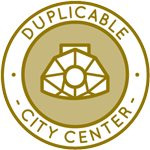 One Community is designing earth-care communities through a Duplicable and Sustainable City Center that is LEED Platinum certified/Sustainable, can feed 200 people at a time, provide laundry for over 300 people, is beautiful, spacious, and saves resources, money, and space:
One Community is designing earth-care communities through a Duplicable and Sustainable City Center that is LEED Platinum certified/Sustainable, can feed 200 people at a time, provide laundry for over 300 people, is beautiful, spacious, and saves resources, money, and space:
- Learn about this building and it’s function: Duplicable City Center Open Source Hub
Arnob Mutsuddi (Mechanical Engineer) continued working on Duplicable City Center structural engineering model and details. His work focused on Row 7 and Row 9 of the BOM spreadsheet, including starting and continuing efforts on dimensions and analysis. Side views were added for all parts, along with an integrated view for Row 9. A team meeting was held to discuss the remaining tasks on the spreadsheet and to provide the new engineer on the team with an overview of the project. The Duplicable City Center is a foundational part of One Community’s open-source model, which excels in the mission of designing earth-care communities. This approach is integral to their mission of designing earth-care communities through innovative and scalable solutions. See some of this work in the pictures below.
Mohammed Maaz Siddiqui (Architect) continued working on the cupola renders for the Duplicable City Center project. He focused on improving the scenes of a workout session on the sun deck by refining their composition and enhancing the visuals. He also worked on the wedding scene, adding more people and arranging them to create a realistic setting, addressing the previous issue where individuals appeared scattered. Additionally, Mohammedd optimized the file to make it shareable, resolving earlier challenges that had prevented it from being saved effectively. Within One Community’s open-source framework, the Duplicable City Center plays a central role in the mission of designing earth-care communities. The images below showcase some of this work.
Rudrani “Sravya” Mukkamala (Mechanical Engineer) continued researching the structural components of a hydraulic elevator, focusing on the framework, guide rails, and load-bearing elements. Her focus was on the roller assembly and elevator car assembly, along with research into the spring system at the pit bottom and various available systems and products. The research included identifying efficient, widely used, and sustainable solutions in the market. Work involved analyzing different options and evaluating their strengths and weaknesses to determine a system that meets the necessary technical and functional requirements. Within One Community’s open-source framework, the Duplicable City Center plays a central role in the mission of designing earth-care communities. The images below showcase some of this work.
Sanket Basannavar (Mechanical Engineer) continued working on the Duplicable City Center spa cover as part of the City Center Natural Pool and Eco-spa Designs. A new design of the spa pool was completed, including the assembly of the spa cover, to enable better analysis of heat flux changes and study heat or energy loss due to the cover design. A pulley system was developed to assist with the opening of the spa cover panels. Additionally, lift-assist hinges were designed to reduce the effort required to lift the panels, cutting the necessary effort by approximately 70%. Within One Community’s open-source framework, the Duplicable City Center plays a central role in designing earth-care communities. The images below showcase some of this work.
Yancong E (Architectural Designer) continued working on the Duplicable City Center project. He consolidated the view types for each room, organizing the floor plans, sections, and landscape analysis drawings required to classify each room type. He mapped each room to its corresponding view type and integrated the textual description with the analysis diagrams. Within One Community’s open-source framework, the Duplicable City Center plays a central role in the mission of designing earth-care communities. The images below showcase some of this work.
HIGHEST GOOD FOOD PROGRESS
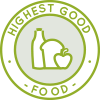 One Community is designing earth-care communities through Highest Good food that is more diverse, more nutritious, locally grown and sustainable, and part of our open source botanical garden model to support and share bio-diversity:
One Community is designing earth-care communities through Highest Good food that is more diverse, more nutritious, locally grown and sustainable, and part of our open source botanical garden model to support and share bio-diversity:
- Learn about the structures: Hoop House Hub | Aquapini & Walipini Open Source Hub
- See what we’ll be growing: Gardens & Hoop Houses | Large-scale Structures | Food Forest | TA
This week, the core team completed the Earthbag Tools, Equipment, and Material/Supplies lists for the ethical raising of goats, chickens, and rabbits. Subsequently, he completed the Tools, Equipment, and Materials/Supplies list for the Tropical Atrium. Specific items included fencing pliers, T-posts, cardboard, comfrey, PEX clamps, adjustable pole loppers, a tamper, and numerous other items. The Highest Good Food initiative is a key component of One Community’s open source plans, focused on earth-care communities, and exemplifies the organization’s commitment through innovative design and implementation. Below are some of the images showcasing this work.
Jay Nair (BIM Designer) continued working on Aquapini and Walipini Planting and Harvesting lighting and HVAC design. He contacted Philips Customer Service to request suggestions for lighting fixtures and finalized the selection of the Philips GreenPower LED toplighting compact model for Walipini 1. Jay updated the document to reflect this change, recalculated the energy requirements based on the new fixture, and began incorporating videos of the lighting into the document to provide visual support. The Highest Good Food initiative is a key component of One Community’s open source plans, focused on earth-care communities, and exemplifies the organization’s commitment through innovative design and implementation. Below are some of the images showcasing this work.
Jessica Fairbanks (Administrative Assistant) focused on advancing her work on incorporating Highest Good Food into small-scale organizations, focusing on the processes for starting a food forest and a community garden. She completed her regular administrative tasks and reviewed the work of several other administrators, providing detailed feedback. She also finished the rough draft for the integration of Highest Good Food into small-scale organizations and finalized her work on implementing a community garden and starting a corporate garden, documenting the relevant resources. The Highest Good Food initiative is a key component of One Community’s open source plans, focused on on earth-care communities, and exemplifies the organization’s commitment through innovative design and implementation. Her contributions are highlighted in the collage below.
Junyi Shi (Landscape Architect) continued working on developing a design for Walipini #2 as a part of Aquapini and Walipini Planting and Harvesting project. She refined the animations, exporting and rendering them multiple times—typically three to four iterations—to review the results and resolve any discrepancies between the rendered videos and the intended presentation. The final output features an animation that observes the entire space from a human perspective. The Highest Good Food initiative is essential to One Community’s open source plans, focused on earth-care communities. Her contributions are highlighted in the collage below.
Mary Nelson (Landscape Planner) began working on her second task, contributing to the open-source Botanical Garden tutorial. She started by familiarizing herself with the project goals and reviewing the existing open-source materials to identify missing information and areas needing edits. She organized her findings in an outline format and initiated research on seed collection, germplasm collection, and the necessary permitting processes to explain how to acquire plant materials effectively. Additionally, Mary spent time learning about various data collection techniques specific to botanical gardens. The Highest Good Food initiative is essential to One Community’s open source plans, focused on earth-care communities. Her contributions are highlighted in the collage below.
Tanmay Koparde (Industrial Engineer And Team Administrator) continued working on the Menu Supply Chain and Shopping Plan, Cost Analysis, and Food Procurement and Storage Plan to streamline organizational workflows and enhance efficiency. He focused on ensuring the alignment of fonts and headlines in his food procurement case review to present a polished and professional document. He worked on finding AI-generated images that effectively represent food procurement concepts and sought precise calculations to enhance and optimize the procurement strategy for improved efficiency and cost-effectiveness. Updates were made to optimize procurement processes, improve cost efficiency, and refine supplier evaluations to align with overall strategic goals for better operational outcomes, and he also shared his details for the bio announcement. The Highest Good Food Initiative is a key component of One Community’s open source plans, focused on earth-care communities. See his work in the collage below.
Vatsal Tapiawala (Mechanical Engineer) continued working on integrating ideas from Paul Wheaton’s “Truly Passive Greenhouse” designs into the Aquapini/Walipinis structures. He worked on integrating the Revit model with SolidWorks as an intermediate step to refine the geometry and prepare it for import into ANSYS. This process aimed to ensure the model was optimized for accurate structural analysis, addressing potential compatibility issues and improving the workflow to obtain reliable results. The Highest Good Food Initiative is a key component of One Community’s open source plans, focused on earth-care communities. See his work in the collage below.
Ziyi Chen (Landscape Designer) continued working on the design of the outdoor spaces for the Aquapini/Walipinis structures and began rendering the models. The work focused on optimizing the layout of the areas south of the Aquapini structure and in front of the fruit tree zone. Ziyi also adjusted material presentations in the Enscape renderer, balancing functionality with aesthetics and emphasizing open spaces designed for human use. The Highest Good Food initiative is a key component of One Community’s open source plans, focused on earth-care communities. See her work in the collage below.
HIGHEST GOOD ENERGY PROGRESS
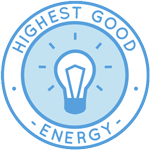 One Community is designing earth-care communities through Highest Good energy that is more sustainable, resilient, supports self-sufficiency and includes solar, wind, hydro and more:
One Community is designing earth-care communities through Highest Good energy that is more sustainable, resilient, supports self-sufficiency and includes solar, wind, hydro and more:
- Learn about the open source sustainable-energy foundations: Solar, Hydro, and Wind
- Explore our research into the most sustainable products and companies for saving water and energy: Insulation, Eco-laundry, Lightbulbs and Light Bulb Companies, Doors and Door Companies, Windows and Window Companies, Toilets, Faucets and Faucet Accessories, Urinals, and more.
This week, Muhammad Sarmad Tariq (Electrical Engineer) sent the updated version of the off-grid vs grid-tie solar PV system report to Jae, who provided feedback on the revision. Sarmad began addressing the feedback and also started drafting the methodology for calculating the profit of a grid-tie versus off-grid solar PV system. The methodology will initially be written in a Google document before being further refined for inclusion in an Excel sheet. The Highest Good Energy initiative is a key component of One Community’s open-source plans, focused on earth-care communities. See his work in the collage below.
Vatsal Hitendra Shah (Volunteer Engineering Project Manager) reviewed supplier quotes for diesel generators and tentatively finalized one supplier while beginning the search for suppliers of 2500-gallon fuel bladders. He also met with Chitra to address a GitHub code for the Highest Good Network, though it did not work on his device. During the meeting, Chitra mentioned that she would provide a list of fully functioning features, enabling Vatsal to begin drafting the corresponding user manual. The Highest Good Energy initiative is a key component of One Community’s open-source plans, focused on earth-care communities. See his work in the collage below.
HIGHEST GOOD EDUCATION PROGRESS
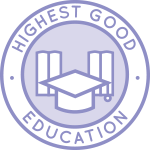 One Community is designing earth-care communities through Highest Good education that is for all ages, applicable in any environment, adaptable to individual needs, far exceeds traditional education standards, and more fun for both the teachers and the students. This component of One Community is about 95% complete with only the Open Source School Licensing and Ultimate Classroom construction and assembly details remaining to be finished. We’ll report on the final two elements to be finished as we develop them. With over 8 years of work invested in the process, the sections below are all complete until we move onto the property and continue the development and open sourcing process with teachers and students – a development process that is built directly into the structure of the education program and everything else we’re creating too:
One Community is designing earth-care communities through Highest Good education that is for all ages, applicable in any environment, adaptable to individual needs, far exceeds traditional education standards, and more fun for both the teachers and the students. This component of One Community is about 95% complete with only the Open Source School Licensing and Ultimate Classroom construction and assembly details remaining to be finished. We’ll report on the final two elements to be finished as we develop them. With over 8 years of work invested in the process, the sections below are all complete until we move onto the property and continue the development and open sourcing process with teachers and students – a development process that is built directly into the structure of the education program and everything else we’re creating too:
- Program Overview: Education Open Source Hub
- How the components work together in designing human orchestrated eco-abundance: How to use the Education for Life Program
- Lesson Plans for Life – Lesson Plans How-to
- Foundations of Outstanding Leaders, Teachers, and Communicators
- Curriculum for Life
- Teaching Strategies for Life
- Learning Tools and Toys for Life
- Evaluation and Evolution
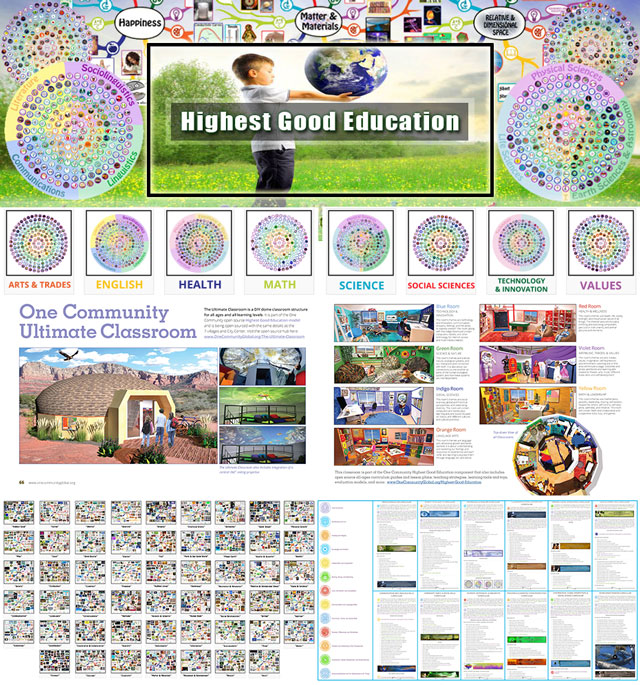
Highest Good Education: All Subjects | All Learning Levels | Any Age – Click image for the open source hub
HIGHEST GOOD SOCIETY PROGRESS
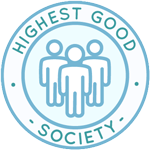 One Community is designing earth-care communities through a Highest Good society approach to living that is founded on fulfilled living, the study of meeting human needs, Community, and making a difference in the world:
One Community is designing earth-care communities through a Highest Good society approach to living that is founded on fulfilled living, the study of meeting human needs, Community, and making a difference in the world:
- Read the Highest Good society overview: Highest Good Society
- Learn about the model for fulfilled living and sharing: A Day in the Life
- Learn about the 4 economic models: RBE | For-profit | Non-profit | Entrepreneurship
- Learn about our open source community collaboration and management software: The Highest Good Network
This week, the core team completed over 56 hours managing One Community’s volunteer-work review not included above, emails, social media accounts, web development, new bug identification and bug-fix integration for the Highest Good Network software, and interviewing and getting set up new volunteer team members. They also shot and incorporated the video above that talks about earth-care communities and how earth-care communities are a foundation of the bigger picture of everything One Community is doing. The image below shows some of this work.
Anoushka Hazari (Data Analyst) continued working on code to automate and simplify the Highest Good Network software promotion process. This week, Anoushka focused on reviewing team pull requests and updating the PR review table. A blog was written, enhanced with a custom-designed collage, and corrected for a previous error to ensure accuracy. Updates were made to the HGN spreadsheet, including necessary changes and a content review in sheet 4. To analyze the distribution of pull requests reviewed by mentors and non-mentors, comparative visualizations were created using Python’s seaborn library, featuring overlapping histograms with kernel density estimates to identify contribution trends. This data analysis ultimately contributes to the efficient management and promotion of resources that support the development of earth-care communities.
A horizontal boxplot was also developed to assess individual contributions, grouped by team members, which highlighted the distribution and potential outliers in PR review counts, though its interpretation was limited due to data variability. Additionally, a bar plot was created to visualize the total PR reviews per team member, with adjustments made to improve readability and clarity. Data preprocessing involved cleaning the dataset, retaining relevant columns, converting data to numeric formats, and segmenting it into mentor and non-mentor groups. Descriptive statistics and key insights were generated to compare the review patterns and contributions between these groups. This work helps One Community’s mission of earth-care communities and reinforces our commitment to earth-care communities. The following images show her work for the week.
Chitra Siddharthan (Data Analyst And Team Administrator) continued focusing on the existing web pages of the HGN Phase II website. She worked on the weekly summary, images, and blog for team Code Crafters. She tested the functionality of PR#3035, PR#2989, and PR#3046, providing feedback and ensuring proper integration. Chitra assigned new tasks to Rishitha and Supriya, followed up with them via Slack, and maintained communication to track task progress. She also updated the Phase 2 WBS Google sheet, ensuring PRs, links, and action item statuses were accurately reflected as multiple wireframes for HGN Phase 2 were updated and converted into webpages. These efforts contribute to the development of software that will ultimately support the efficient management and coordination of earth-care communities.
Chitra tested PRs titled “Rishitha_new_team_form” and “anirudhsk_fix_inventory_type_list_space_issue” and confirmed their updates in the WBS Phase 2 sheet. She met with Vatsal over Zoom to discuss the continuation of the user manual for Phase 2 and supported Neha B with her queries on Slack. Chitra reviewed action items marked as “Done” to verify whether they had been merged or required further changes, simplifying the process of creating the user manual. She also worked on providing the details needed for her bio with One Community and studied the Phase 3 document to prepare and create action items for Phase 3. This work helps One Community’s mission of earth-care communities and reinforces our commitment to earth-care communities. The following images show her work for the week.
Feras Rehman (Data Analyst) continued working on developing One Community’s Mastodon account and strategy. He scheduled five Mastodon posts for the following week. Targeted strategies were developed and implemented, resulting in a 5x increase in post reach through optimized hashtag usage and improved post structuring. Additionally, five more Mastodon posts were scheduled on Buffer for the upcoming weeks. A weekly summary review was completed, and images were added to supplement the summary. This work helps One Community’s mission of earth-care communities and reinforces our commitment to earth-care communities. The following images show his work for the week.
Hritvik Mahajan (Data Analyst) continued working on a variety of tasks related to marketing, promotion, software development, social media strategy, and administrative activities. His contributions spanned multiple areas, including social media strategy, front-end testing, and providing feedback to the team. He worked on the social media scheduler for the HGN project, reviewed front-end pull requests, and identified bugs, communicated with team members on Slack to address changes and resolve merge conflicts. As part of the marketing and promotion efforts, he analyzed engagement on Twitter by reposting high-performing posts within relevant communities, researched effective content strategies by reviewing similar pages, and updated strategy management spreadsheets. Additionally, Hritvik provided feedback on the work of multiple admin team members for Blog #618, ensuring their contributions aligned with standards. This work helps One Community’s mission of earth-care communities and reinforces our commitment to earth-care communities. The following images show his work for the week.
Raghav Dinesh Pamuru (Product Manager) continued focusing on designing and building a Google Sheets dashboard to simplify tracking and analyzing social media engagement. He enhanced the social media engagement dashboard for One Community by adding mock data, charts, and graphs to improve functionality and user experience. He refined the layout and interface based on feedback to ensure visual elements met project requirements. Additionally, Raghav advanced the centralized Google Sheets dashboard for tracking engagement across seven platforms by integrating automated formulas, conditional formatting, pivot tables, and custom filters. These updates aimed to streamline data collection, improve accuracy, and make key metrics more accessible to team members. This work helps One Community’s mission of earth-care communities and reinforces our commitment to earth-care communities. The following images show his work for the week.
Rahul Bavanandan (Data Analyst) continued working on several key projects within the Highest Good Network software, One Community’s Reddit presence, and administration. He focused on advancing multiple initiatives, including the HGN Phase 2 Figma visualization updates based on feedback and translating designs into actionable dashboard features. For marketing and promotion, he engaged in Reddit social media strategies, participating in subreddit discussions to establish credibility and prepare for sharing content for One Community. Additionally, Rahul optimized a blog using advanced SEO techniques, consolidated administrator blogs into a final version and resolved formatting issues to ensure consistent presentation. This work helps One Community’s mission of earth-care communities and reinforces our commitment to earth-care communities. The following images show his work for the week.
Shireen Kayal (Humanitarian Program Developer & Data Manager) continued her work on branding graphics for all of One Community. This week she created new graphics for the Highest Good Energy page and the For The Highest Good of All®. She focused on several projects and developments. She designed three new infographics highlighting “Highest Good Housing,” “Highest Good Housing in Action,” and the “Eco-Village Blueprint for Sustainable Communities of the Future.” Additionally, Shireen refined the concepts of “Highest Good Economics” and “Highest Good Society,” culminating in the creation of an oversized infographic for “Highest Good Society.” She also introduced a new chart titled “The Average Person’s Life Right Now,” showcasing insights into living conditions. This work helps One Community’s mission of earth-care communities and reinforces our commitment to earth-care communities. The following images show her work for the week.
Yash Shah (Data Analyst and Team Administrator) continued his admin work and managed the social architecture component of the Highest Good Network software. He connected with Bhavya to review the new design for rescheduling alignment across all Figma designs and coordinated with Vaibhavi to add tasks and gather feedback on issues encountered last week. Updates were collected from Pallavi, new tasks were assigned to Nishita, and Yash collaborated with Khushi on document updates and progress tracking for tasks handled by volunteers. A meeting with Khushi focused on document modifications and aligning updates with the project scope. He also gathered updates from volunteers to identify missing elements for document revisions, created a blog for the Dev Dynasty team, organized the weekly folder, created a collage, and provided feedback on blogs submitted by fellow volunteers. This work helps One Community’s mission of earth-care communities and reinforces our commitment to earth-care communities. The following images show his work for the week.
ADMINISTRATION TEAM
The Administration Team’s summary, covering their work administrating and managing most of One Community’s ongoing process for designing earth-care communities was managed by Sneka Vetriappan (Data Analyst) and includes Jibin Joby (Data Analyst), Kishan Sivakumar (Administrative Assistant and Software Team Manager), Olawunmi “Ola” Ijisesan (Administrative and Management Support), Rachna Malav (Data Analyst), Ratna Meena Shivakumar (Data Analyst and Admin), Ryutaro Wongso (Economic Analyst and Team Administrator), Saumit Chinchkhandi (Administrative Assistant and Software Engineer), Shrinivas Patil (Software Engineer), Vishnu Murali (Data Analyst) and Zuqi Li (Administrative Assistant and Economic Analyst).
This week, Jibin focused on reviewing his team’s work, creating collages, and providing feedback. He collaborated with Vishnu on analyzing Aircrete visuals, seeking clarification from John regarding dataset structure and visualization methods. Kishan worked on senior admin duties, reviewing volunteer documentation and SEO pages, making necessary updates and edits. Their combined efforts contribute to One Community’s mission of creating open-source resources for earth-care communities. Ola supervised the PR review teams, ensured tasks were completed, and followed up on comments. She also maintained the HGN spreadsheet and updated the weekly report and images. Rachna handled scheduling and interviewing candidates, documenting notes, and setting up interviews for the following week. Ratna worked on Python scripts, weekly summaries, and creating blog collages. She also developed social media dashboards and combined Excel files from Meta Business Suite while planning strategies for KPI development. Ryutaro focused on producing a cost analysis template for the duplicable city center, using AI, Google Search, Excel, and Google Sheets. These administrative tasks are essential for supporting One Community’s overarching goal of empowering earth-care communities.
Saumit managed the pull request workflow, reviewing submissions and feedback, and updated his WordPress page with a team summary and collage. He also performed frontend testing for various pull requests and resolved merge conflicts with developers. Shrinivas completed blog work for both Team Moonfall and Team Reactonauts, provided feedback, and assisted with the admin feedback spreadsheet. He also researched time-use datasets and began investigating sustainable products. His exploration of sustainable products aligns with the broader goals of One Community to create earth-care communities. Sneka reviewed time log entries for accuracy, followed up on comments, and managed administrative tasks related to time log management and tutorial development. Vishnu reviewed work from Expressers and Lucky Star teams, updated Bluesky’s social media documentation, and collaborated on recreating Aircrete visuals. Zuqi organized weekly summaries for the Graphic Design and Alpha Teams, reviewed LinkedIn Analytics, and scheduled posts for the coming week. One Community’s model for designing earth-care communities includes developing and maintaining a supportive administration team like this. You can see the work for the team in the image below.
GRAPHIC DESIGN TEAM
The Graphic Design Team’s summary was managed by Zuqi Li (Administrative Assistant and Economic Analyst) and included Aurora Juang (Graphic Designer), Jaime Yao (Creative Technologist), and Junyuan Liu (Graphic Designer, UI/UX Designer), covering their work on graphic designs for earth-care communities. This week, Aurora completed her assigned volunteer tasks, including revising errors and ensuring the quality of updates. She focused on creating new bio announcements for volunteers, referencing previous tutorials to verify accurate increments and sizing for each profile and providing regular progress updates to Jae.
Aurora also addressed inaccuracies flagged by Sara in tutorial videos, revising and updating them to align with current standards, which streamlined team processes and improved the quality of resources for new volunteer profiles. Jaime finalized volunteer announcement pages for Sarmad and Purva and developed social media visuals centered on climate change under the theme “The future of our planet depends on the choices we make today.” This collaborative effort strengthens One Community’s commitment to providing accessible resources for individuals interested in contributing to earth-care communities. These visuals included concepts like “Melting Globe” paired with “The Globe in Crisis,” “Polar Divide” with “Split Arctic,” and “Animal Exodus” featuring “Fleeing the Flames” and “Lost in the Heat,” emphasizing the consequences of inaction and the importance of proactive measures to address environmental challenges.
Junyuan worked on creating social media content, collecting images, and exploring design options in software. Through an iterative process, three new social media images were completed, and initial steps were taken to search for images and brainstorm design ideas for the next image. See the Highest Good Society pages for more on how this contributes to earth-care communities. See the collage below to view some of their work.
HIGHEST GOOD NETWORK PROGRESS
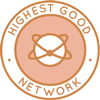 One Community is designing earth-care communities through open source Highest Good Network® software that is a web-based application for collaboration, time tracking, and objective data collection. The purpose of the Highest Good Network is to provide software for internal operations and external cooperation. It is being designed for global use in support of the different countries and communities replicating the One Community sustainable village models and related components.
One Community is designing earth-care communities through open source Highest Good Network® software that is a web-based application for collaboration, time tracking, and objective data collection. The purpose of the Highest Good Network is to provide software for internal operations and external cooperation. It is being designed for global use in support of the different countries and communities replicating the One Community sustainable village models and related components.
- Learn about our open source community collaboration and management software: The Highest Good Network
This week, the core team continued their work on testing PRs for the Highest Good Network, confirming several fixes and resolving a number of issues. The fixes included the “Ready for Review” button interaction (#2254), the addition of a projects dropdown in the bmdashboard that previously displayed a 404 Not Found page (#2931), missing tasks on the dashboard (#1178), and ensuring the timer dark mode modal displayed correctly in light mode (#2960). However, several issues remain unresolved, including fixes for the Teams Modal UI (#2831), the display of the Reports Team page on small screens (#2790), search functionality on the User Management page not properly handling spaces (#2856), and improving the speed and functionality of deleting multiple blue squares (#2774 and #1130). Additionally, there are ongoing issues with a white screen when navigating to the Volunteer Engagement Trends report (#1128 and #1181), the addition of a status column header (#2882), and discrepancies with start and end dates (#2927). In addition to resolving these technical issues, the team assigned two new tasks to volunteers and submitted a bug report to address the cropping of the “Team Member Tasks” section on the Tasks tab. For more details on how this work supports the Highest Good Society and the Highest Good Network, visit their pages. The collage below highlights some of the team’s work.
ALPHA SOFTWARE DEVELOPMENT TEAM
The Alpha Team’s summary, covering their work on the Highest Good Network software, was managed by Lin Khant Htel (Frontend Software Developer) and includes Nanguan Lin (Software Developer), Sheetal Mangate (Software Engineer), and Sujith Reddy Sudini (Full-Stack Software Developer), covering their work on graphic designs for earth-care communities. This week, Lin reviewed and approved PR #3065 after testing the codebase locally, ensuring all 14 test cases passed. In addition to continuing to expand his project knowledge, Lin managed Alpha Team’s responsibilities by reviewing weekly summaries, photos, and videos submitted by team members and overseeing task assignments and progress.
Nanguan worked on the lint fix for the reports component of the project, addressing and resolving multiple refactoring issues during the process. He completed the task and created a pull request on GitHub to merge the changes into the repository’s main branch, improving the code quality and maintainability of the reports component. These improvements will support the development and implementation of sustainable solutions for earth-care communities. Sheetal focused on testing the functionality of the weeklySummariesReport action, covering scenarios for the getWeeklySummariesReport and updateOneSummaryReport functions. She ensured that the correct objects were returned, all actions were properly dispatched, and the functionality of the weeklySummariesReport page was reviewed to provide test coverage.
Sujith continued working on Phase 3 of the Resource Management System, focusing on the front-end development for adding resources (PR #3012). He developed a form at /communityportal/resources/add to enable volunteers to request materials or equipment for activities, such as gym equipment or yoga mats. While the form’s primary functionality is complete, Sujith is refining the CSS and making styling improvements, estimating one more week to finalize the task and submit the pull request. Learn more about how the Highest Good Network will measure and assist in earth-care communities in the Highest Good Network open-source hub. The collage below shows a compilation of the work from this team.
BINARY BRIGADE SOFTWARE DEVELOPMENT TEAM
The Binary Brigade Team’s summary overseeing advancements in the Highest Good Network software was managed by Vijay Anand Pandian (Full Stack Software Engineer) and includes Aaryaneil Nimbalkar (Software Developer), Anirudh Sampath Kumar (Software Developer), Ashish Nagaraju (Software Engineer), Deepthi Kannan (Software Engineer), Geeta Matkar (Software Engineer), Samman Baidya (Software Engineer) and Sriram Seelamneni (Software Engineer). The Highest Good Network software is how we’ll be managing and objectively measuring our progress for earth-care communities through our social architecture, construction, production, and maintenance processes.
This week, Aaryaneil worked on testing the Dropbox API for the repository and configuring permissions to restrict automation usage to owner users. As part of his efforts to support earth-care communities, he also created routes for Dropbox and began integrating Sentry APIs for user addition and removal. Additionally, he worked on integrating the Sentry API into the application by creating the necessary routes for its endpoints. Anirudh tested, reviewed, and approved pull requests 2997 through 3006. He addressed a bug on the inventory types page of the BMDashboard, where the search function failed to ignore white spaces in the search column, resulting in incorrect search results. He resolved the issue and raised pull request 3046 for the bug fix.
Ashish worked on resolving bug 21 from phase 2, which involved adding a ‘Hold’ column and an ‘Update Record’ column. He collaborated with Jae to clarify the differences between the columns and modified the ‘View’ button in the ‘Update Record’ column, replacing the previous pop-up view with a new view that includes subtables, allowing users to access update records based on the specified requirements. Deepthi focused on improving the management checkbox tooltip by aligning its bounding box properly and modifying its behavior to disappear when the cursor moves away from the small “i”. Her improvements aimed to streamline interactions for earth-care communities. She also worked on existing pull requests, incorporating team feedback to ensure they functioned correctly and pushing updates to GitHub.
Geeta worked on addressing a project category issue in the profile section. Her debugging efforts spanned both the front-end and back-end code, identifying several errors that need to be resolved to fix the bug and ensure the functionality of the feature. Samman completed the navbar task after resolving a merge conflict and submitted it for review. To further support earth-care communities, he selected a new task from phase II, reviewed the BMDashboard code, and began working on the default view for the dashboard. He started developing the logic for the collapsed view using React states and necessary buttons to toggle between default and collapsed views.
Sriram worked on debugging the reset functionality for a task, identifying that the core feature was operational with the submit button and starting to implement an auto-submit feature triggered by the reset button while awaiting confirmation to proceed. His work included reviewing and resolving feedback from a previous pull request related to the 10-hour filter on the Reports page, addressing errors such as a persistent “Unexpected error” and ensuring the people count feature functioned correctly.Vijay worked on improving unit test coverage for the HGN software project. His implementation of unit tests for the userProfileActionCreator file and his development of unit tests for the ownerMessageActionCreator file are essential steps toward enhancing code quality and functionality validation for earth-care communities. See the Highest Good Society and Highest Good Network pages for more on how this relates to earth-care communities. View some of the team’s work in the collage below.
BLUE STEEL SOFTWARE DEVELOPMENT TEAM
The Blue Steel Team’s summary, presenting their work on the Highest Good Network software was managed by Nazanin Hashemian (Software Developer, Team Manager) and includes Manasa Viswanadhapalli (Software Engineer), Ramakrishna Aruva (Software Engineer), and Supriya Sudini (MERN Stack Developer). The Highest Good Network software is how we’ll be managing and objectively measuring our process for designing earth-care communities through our social architecture, construction, production, and maintenance processes.
This week, Manasa reviewed a bug document, selected an issue to work on, analyzed related pull requests, and examined the current code functionality while working to resolve the problem. Her efforts contribute to the development of software essential for managing and optimizing earth-care communities. Nazanin investigated the “Team Member Tasks” checkbox bug (Priority: Low) and determined that it was functioning correctly. Ramakrishna searched for new tasks and identified a bug where newly created teams were not displaying correctly despite being created. He requested the task to be assigned, created a branch to investigate, and determined that the frontend was not the issue, leading him to analyze the backend logic for the root cause. This effort is crucial for ensuring the smooth operation of the platform, especially as it scales to support a growing number of users collaborating on projects like the design and implementation of earth-care communities.
Supriya worked on improving the login page for the BM Dashboard by creating a CSS file named BMLogin.css. She designed containers to structure the page elements and adjusted CSS properties to center the form, giving input fields and buttons rounded corners and subtle shadows for a modern appearance. See the Highest Good Society and the Highest Good Network pages to learn more on how their work contributes to designing earth-care communities. See below to view images of their work.
CODE CRAFTERS SOFTWARE DEVELOPMENT TEAM
The Code Crafters Team, covering their work on the Highest Good Network software, was managed by Swaroop Udgaonkar (Software Engineer) and includes Denish Kalariya (Software Engineer), Dhrumil Dhimantkumar Shah (Software Engineer), Humera Naaz (MERN developer), Pavan Swaroop Lebakula (Software Engineer), Pratyush Prasanna Sahu (Software Engineer) and Summit Kaushal (Backend Software Developer). The Highest Good Network software is how we’ll manage and objectively measure our process for earth-care communities through our social architecture, construction, production, and maintenance processes.
This week, Denish focused exclusively on addressing an issue in the user profile module related to tracking the dates of submitted summaries. The existing database schema only stored the last three weekly summaries in theweeklySummaries array, discarding the oldest entry whenever a new summary was submitted. To enable tracking of all past submissions, a new field, totalSummariesSubmitted, was added to the userProfiles collection to record the dates of each submission without retaining the actual summary content. This enhancement ensures that a comprehensive record of contributions is maintained, supporting the ongoing development of earth-care communities. A new function, getTotalSummariesSubmitted, was implemented in the overviewReportHelper.js file to handle the logic for retrieving and updating this data. This function was integrated into the getVolunteerStatsData function within reportsController.js to ensure the updated data was included in the API response. All changes were developed in a new branch created from the abi-volunteer-trends branch, adhering to the requirements specified for this task.
Dhrumil worked on HGN Phase II. While progressing on the tasks, some questions arose, requiring clarification. To address these, he contacted his manager and Jae, who provided the necessary guidance and insights. After resolving the uncertainties, he resumed work on the project with a clarified understanding. This work contributes to the development of tools and resources that will ultimately support the creation and management of earth-care communities. Humera worked on implementing logic to replace badges when consecutive streaks were achieved, ensuring that only the highest streak was retained in the system. The logic involved identifying badges with matching hours and consecutive weeks, removing lower streaks, and replacing them with higher ones. Additionally, all relevant test cases from Test SpreadSheet 2 were executed to verify that the badge replacement and earned date tracking functionalities were functioning correctly. This included debugging scenarios where streaks were either broken or extended and validating the system’s ability to handle complex badge updates. This rigorous testing ensures the system accurately reflects users’ contributions to earth-care communities.
Pavan worked on a WBS page issue requiring a refresh. The latest branch was cloned after applying a fix, and the issue could not be reproduced. Efforts were focused on investigating how the fix was implemented and assessing whether it is appropriate for deployment. If the fix is deemed insufficient, an alternative solution will be developed. This work contributes to the efficient management of projects related to earth-care communities. Pratyush added additional fields to the event details and statistics page and resolved various lint issues encountered during development. He implemented an email validator, addressed a significant number of lint issues, and fixed the date of birth validation to ensure it only allows entries for individuals aged 18 and above. Work is ongoing to complete the email address validation.
Summit updated the HGN document with details of their recent work and provided an updated WIP to Humera, addressing tasks that were pending before their leave. Humera noted that she had resolved the issue, and he requested that she re-verify the document and record her findings in the badge test results. This collaborative effort is crucial for the development of software that will ultimately support the efficient management and coordination of earth-care communities. He also addressed changes requested in a pull request, creating a test video and improving the clarity of the “how to test” instructions. Additionally, he reviewed another change request and retested the feature to confirm its functionality. While the issue was not encountered during testing, he plans to repeat the test with a new user to ensure accuracy. Swaroop worked on setting up the placement of projects and people lists for mobile screens, making changes to the relevant JSX files to ensure consistency and eliminate discrepancies in the layouts. As a manager-in-training, he reviewed the team’s summaries, photos, and videos and uploaded two selected photos for each team member. See the Highest Good Society and Highest Good Network pages for more on how this relates to earth-care communities. View some of the team’s work in the collage below.
DEV DYNASTY SOFTWARE DEVELOPMENT TEAM
The Dev Dynasty Team’s summary, covering their work on the Highest Good Network software, was managed by Jatin Agrawal (Software Engineer) and includes Mrinalini Raghavendran (Software Engineer), Nikita Kolla (Full Stack Developer), Nishita Gudiniye (Software Engineer), Shreya Vithala (Software Engineer), Shraddha Shahari (Software Engineer) and Zhifan Jia (Software Engineer). The Highest Good Network software is how we’ll manage and objectively measure our process for earth-care communities through our social architecture, construction, production, and maintenance processes.
This week, Jatin completed three bugs, including merging one titled “profile_images_from_website” into the codebase. He took on two new issues, “fix task date editing crashing webpage” and “reload leaderboard and add loading symbol while exiting from another’s dashboard,” and created the respective pull requests. While working on the task date issue, he encountered an additional problem involving memory usage in web storage on the EditTaskModal.jsx page but prioritized resolving the original issue to avoid potential application breaks. These technical improvements contribute to the smooth operation of the platform, ultimately supporting the collaborative efforts required to design and build earth-care communities. Additionally, he worked on linking the HGN form with the main application and created a pull request for that task.
Mrinalini developed a frontend form for the listing and bidding document she previously helped design, referencing existing pull requests and drafted requirements while working on form elements for the “Create a Listing” form. She explored Bootstrap for styling, addressed a frontend timer feature issue related to a past pull request, and completed a basic React component with all fields outlined in her earlier mockup. This form will eventually be used to help manage the complex organization required for creating earth-care communities. Additionally, she debugged errors during local testing and improved the form’s visual design using CSS. Nikita implemented core features for the “Hours by Task” visualization on the Projects Reports page, including a bar chart to display hours contributed by tasks within a project, allowing users to select different viewing options for total and remaining hours. While the main functionalities have been added, further work remains to finalize the feature. This feature will ultimately contribute valuable data to the management and optimization of earth-care communities.
Nishita focused on the front-end implementation of the “Event Description” section, completing the initial design and planning its integration with the “Event Details” page once developed. She worked on styling for consistency and usability, wrote unit tests for the “EditTaskModal” component by identifying and implementing necessary test cases, and resolved alignment issues on the Events Participation page based on feedback from a previous pull request. This work is vital for the effective organization and execution of events within earth-care communities. Shraddha worked on resolving a bug in the latest codebase, identifying an undefined property error related to accessing the category field. She added null checks for task and project, improved fallback logic to handle undefined data, and ensured runtime errors were avoided. Discussions with Jae provided guidance during debugging and issue resolution. Shreya resolved merge conflicts in PR #2895, adjusted the design of the HGN Questionnaire dashboard for better usability, and created a new branch to expand unit tests, which are currently performing well as additional cases are being added. These software improvements will ultimately benefit the management and coordination of earth-care communities.
Zhifan summarized the previous week’s tasks, prepared a demo video and pull request description, and diagnosed an issue with badges not appearing on the summary page. This investigation revealed that badge information was being filtered out after being sent to the frontend. See the Highest Good Society and Highest Good Network pages for more on how this relates to earth-care communities. View some of the team’s work in the collage below.
EXPRESSERS SOFTWARE DEVELOPMENT TEAM
The Expressers Team’s summary, covering their work on the Highest Good Network software, was managed by Strallia Chao (Software Engineer) includes Jinda Zhang (Software Engineer/Machine Learning Engineer) and Shreya Laheri (Software Developer). This week, Jinda focused on familiarizing themselves with the project by reviewing onboarding developer documents, unit testing guides, and the codebases to understand the project’s structure, workflow, coding standards, and best practices. This groundwork is essential for contributing to the development of software that supports earth-care communities. Shreya submitted a pull request titled “Added Activity Agenda Page for Community Portal” for review and began work on the activity attendance page, which is halfway completed. She also made updates to the HGN Questionnaire design based on feedback from Jae and plans to collaborate with Shreya V on further changes before finalizing the design.
Strallia worked on debugging issues, assisting a team member in resolving commit problems caused by the Husky pre-commit command on their Windows system. This work supports the development of software essential for managing and coordinating activities within earth-care communities. She also collaborated with another team member to track progress on a backend task for retrieving the total number of summaries submitted to the Total Org Summary page and assigned a new task to update the backend controller for populating a new database field. In addition, Strallia reviewed the frontend codebase for the Total Org Summary page, prepared to integrate charts into the parent component, and updated the getBlueSquareStats function in the backend to retrieve data for the corresponding chart. See the Highest Good Society and Highest Good Network pages for more on how this relates to creating earth-care communities. See the collage below to view the team’s work.
LUCKY STAR SOFTWARE DEVELOPMENT TEAM
The Lucky Star Team’s summary of the Highest Good Network software, was managed by Anne Zhang (Software Engineer) and includes contributions from Chetan Sunku (Software Engineer), Koushica Bosadi Ulaganathan (Software Engineer), Nikhitha Kalinga (Software Engineer), Neha Bogireddy (Software Engineer), Samarth Bhadane (Software Engineer), T R Samarth Urs (Data Analyst), Shefali Mittal (Volunteer Software Engineer) and Vaibhavi Madhav Deshpande (Software Engineer).
This week, Chetan continued investigating the root cause of a bug related to the “Interact with Task ‘Ready for Review’” permission not functioning as intended, where the button remains disabled despite the permission being enabled. Koushica resolved a UI issue caused by changes to table-related tags by creating a dedicated class and modifying selectors to isolate the styles, and she worked on improving the consistency of the dark mode implementation across the platform by addressing visual inconsistencies in various components. These technical improvements are crucial for the smooth operation of the platform, ultimately supporting the collaborative efforts towards building earth-care communities. Neha focused on the timer popout feature, determining that the timer would open in a separate window after attempts to keep it always on top proved ineffective, and she reviewed and communicated findings about a format issue in the BM dashboard.
Nikhitha refined functionality related to the Set Final Day permission access, updating logic to handle edge cases and streamlining checks to enhance efficiency while ensuring compatibility with the existing codebase. This contributes to the broader goal of creating efficient and user-friendly tools for managing earth-care communities. Samarth B worked on resolving linting issues, addressing merge conflicts, and updating tasks to align with code standards, ensuring consistency and quality in the project. Samarth managed a PR review team, evaluated the quality and quantity of their reviews, provided feedback, summarized their work in a blog post, and ensured bios were requested from eligible contributors. Shefali added functionality to the auto-poster for Twitter/X, implemented cron job scheduling for timed actions, and worked on both front-end and back-end updates based on feedback from Jae. These contributions to the software infrastructure will ultimately support the development and dissemination of information about earth-care communities.
Vaibhavi resolved a version compatibility issue and started developing a frontend feature to create an Event Rescheduling button, adding a ReschedulePage component and addressing access errors while pushing code. Anne wrote developer notes for bugs requiring future development, created a PR to fix sorting mechanisms in the member column filter, tested and worked on an issue related to the manager account dropdown menu, clarified prerequisites with Vijeth, and managed the Lucky Star team’s reviews and pictures of the week. See the Highest Good Society and Highest Good Network pages for more on how this relates to creating earth-care communities. See the collage below to view the team’s work.
MOONFALL SOFTWARE DEVELOPMENT TEAM
The Moonfall Team’s summary, covering their work on the Highest Good Network software was managed by Newell Newell (Manager), and includes Bhavya Prakash (Software Engineer), Calvin Liu (PR Team), Nikhil Giri (Software Engineer), Shashank Kumar (Software Engineer), Swathi Dharma Sankaran (Software Engineer) and Yili Sun (Software Engineer). This week, Bhavya organized designs using a flow chart and started with dashboard and feedback designs. She prepared notes to clarify aspects with Yash and setted aside user flow designs for further review. The Figma file was structured to align with the flow chart, with notes added to describe each design. This contributes to the efficient design of user interfaces for earth-care communities.
Calvin worked on the Quick Setup Tool and removed the “Save Changes” button to enable immediate database updates when confirming or deleting a Quick Setup Title. He improved input validation and addressed errors in the initial submission to ensure proper database transactions. This streamlined workflow ensures data integrity and supports the efficient development of tools for earth-care communities. Newell resolved issues with caching technologies and addressed missing website assets. He created a mockup for an email template editor and researched Single Sign-On using Google Workspace. He set up a demo WordPress application with SAML-based SSO. Nikhil began work on the “Which Tool or Equipment to Update” feature by creating new components and route and retrieved project and equipment lists. He setted up a form under a dedicated branch. These technical advancements will ultimately benefit the development of earth-care communities by improving the functionality and user experience of online resources.
Shashank raised pull requests and resolved GitHub issues. He synchronized main and development branches, and provided technical support to Jae to address challenges and enhance efficiency. Swathi fixed a React component issue causing ‘NaN’ to display in suggestion categories and revised the code to correctly parse indices and category names. She integrated a validation check to prevent future occurrences. Yili addressed issues with “Edit Task” permissions for managers and analyzed the logic. She began changes to enable direct task editing for users assigned the Manager role. See the Highest Good Society and Highest Good Network pages for more on how this relates to earth-care communities. Below is a collage for the team’s work.
REACTONAUTS SOFTWARE DEVELOPMENT TEAM
Reactonauts’ Team’s summary, covering their work on the Highest Good Network software, was managed by Vijeth Venkatesha (Software Engineer) and includes Gmon Kuzhiyanikkal (Software Engineer), Haoyue Wen (Software Engineer), Jinxiong You (Software Engineer), Khushi Jain (PR Team I-N), Mohan Gadde (Software Engineer), Nikhil Pittala (Software Engineer), Pallavi Thorat (PR Team O-Sh), Peterson Rodrigues (Full-Stack MERN Stack Developer), Saniya Farheen (Software Engineer), Sharadha Shivakumar (Software Engineer) and Xiyan Li.
This week, Gmon worked on fixing tasks related to hiding members’ tasks with the teams toggle and added bell notifications for deadline completion. He identified an existing pull request (PR) that could be marked complete and finished adding active/inactive numbers by teams on the team page. He created a new branch named Gmon-Active-NonActive-team (PR #2850). These software improvements will ultimately support the efficient management of earth-care communities. Haoyue implemented the FAQ function and improved Title Code functionality. She resolved merge conflicts and worked on team code and FAQ management, search, and history features. Jinxiong addressed bugs in HGN Apps and included fixing a poorly designed reset time button pop-up window. Khushi focused on enabling users to send feedback forms via text or email and set up a feedback modal with preference options. She reviewed PRs related to category column updates and the Event Popularity Analytics page. This ongoing work on the Highest Good Network software is vital to One Community’s mission of creating earth-care communities.
Mohan refined the Admin UI and improved box alignment and resolving issues with the “Hours Logged This Week” box. Nikhil completed nine pull request reviews and fixed a badges icon bug obstructed by the save changes button. He verified functionality without affecting other features. These technical improvements contribute to the efficient management and development of the platform, ultimately supporting the creation of thriving earth-care communities. Pallavi enhanced the Register page by adding dynamic tabs for Description, FAQs, Comments, and Participants, with CSS updates for consistency and collaboration on phase 3 tasks. Peterson resolved a Dashboard page bug preventing volunteer users without tasks from viewing the Current Week Timelog tab. Saniya monitored a pull request requiring additional approvals before submission. Sharadha developed the front-end for resource usage overview and identified rendering issues in the route.js file. She collaborated on Task 124 for viewing activities on the Weekly Summaries Reports page. Her contributions are vital to the development of efficient resource management tools for earth-care communities.
Vijeth managed team operations and hosted meetings. He addressed queries and investigated app slowdown issues. Xiyan developed a Bitly URL shortener feature and integrated API communication, URL history tracking, and error handling with TypeScript typing. See the Highest Good Society and Highest Good Network pages for more on how this relates to earth-care communities. Below is a collage for the team’s work.
SKYE SOFTWARE DEVELOPMENT TEAM
Skye Team’s summary, covering their work on the Highest Good Network was managed by Rishabh Rao (Administrator) and Luis Arevalo (Software Engineer) and the team includes Abi Liu (Software Developer), Koba Kvantrishvili (Software Developer), Laura Cohen (Software Engineer), Sai Preetham (Full Stack Developer), Snehal Dilip Patare (Software Engineer) and Yao Wang (Software Engineer). The Highest Good Network software is how we’ll manage and objectively measure our process for earth-care communities through our social architecture, construction, production, and maintenance processes, working on building earth-care communities.
This week, Abi identified and resolved a bug caused by Moment.js that resulted in incorrect start and end dates, where an extra month was being added. The issue involved the handling of date calculations, and adjustments were made to ensure the dates remained within the intended range. Efforts were also focused on investigating why custom date ranges were not behaving as expected, including analyzing data manipulation logic and testing various scenarios to identify potential causes. The work involved reviewing related code and experimenting with different configurations to narrow down the source of the issue, as well as working on building earth-care communities.
Koba worked on creating login and registration pages for a listing and bidding platform, routing the pages through updates to the routes.js file, and implementing custom routes to prevent the navbar from appearing on the login page. Both pages send API requests to the backend for testing on localhost, and include instructions for testing in a pull request. Laura focused on integrating the permissions context provider into the Permission List and Basic Information Tab components to fix a bug where user permissions did not update correctly on the front end after manual removal. She adjusted component logic to ensure permission changes were accurately reflected, working on building earth-care communities.
Yao worked on the Reddit auto poster, developing the API calling body and troubleshooting authentication issues, including a persistent 401 error. Efforts included testing different authentication methods, reviewing API documentation, and modifying request parameters, alongside debugging issues with backend requests, adjusting error handling, and refining request formatting. Snehal addressed changes in pull request PR2862 to resolve duplicate ID issues and reviewed performance-related feedback, finding no system issues. She also worked on PR2801, removing an unused variable and creating a new pull request (PR3074), while addressing tasks involving the Facebook API in JavaScript, and working on building earth-care communities.
Sai Preetham implemented conditional rendering for the WarningModal in Warning.jsx, ensuring it displayed only for users with appropriate permissions or roles, and introduced fallback values for roles and permissions to address missing or null props. He implemented features for toggling warnings, managing warning tracker actions, and resolving tracking management errors and bugs. Additionally, Sai Preetham enhanced test coverage to address edge cases, resolved failing tests, completed the feature set for tracking management, and handled weekly summary and Dropbox-related tasks working on building earth-care communities.
Luis refactored the email template to handle issuing two warnings and issuing two warnings with a blue square. After incorporating feedback from Jae, he completed the updates to ensure a warning is issued, and an email is sent when both actions are triggered. Following further refinement, Luis and Jae agreed to disable the “both” button until the user has at least two warnings. Luis also created a new route and function call, which resulted in some duplicated code, and plans to refactor it into a single function for posting a new warning. See the Highest Good Society and the Highest Good Network pages to learn more about how their work contributes to earth-care communities. See below for the work done by the group.
SOFTWARE PR REVIEW TEAM A-H
The PR Review Team’s summary for team members’ names starting with A-H and covering their work on the Highest Good Network software was managed by Saumit Chinchkhandi (Administrative Assistant and Software Engineer). The Highest Good Network software is a foundation of what we’ll be using to measure our results of building earth-care communities. This week’s active members of this team were: Abdelmounaim Lallouache (Software Developer), Anjali Maddila (Software Engineer), Carl Bebli (Software Engineer), Carlos Gomez (Full-Stack Software Developer), Eve Ye (Volunteer Software Engineer Intern), Ghouse Shahe Meera Ziddi Mohammad (Software Engineer Intern), and Honglin Chen (Software Engineer). They reviewed all the Highest Good Network PRs (Pull Requests) shared in this week’s update. Learn more about how the Highest Good Network measures and supports building earth-care communities by exploring the Highest Good Network open-source hub. The collage below shows a compilation of the work from this team.
SOFTWARE PR REVIEW TEAM I-N
The PR Review Team’s summaries for team members’ names starting with I-N and covering their work on the Highest Good Network software was managed by Anoushka Hazari (Data Analyst). The Highest Good Network software is a foundation of what we’ll be using to measure our results for earth-care communities. This week’s active members of this team were: Ikechukwu Gbogboade (Frontend Software Developer), Kurtis Ivey (Full Stack Developer), Meenashi Jeyanthinatha Subrmanian (Full Stack Developer), Nahiyan Ahmed (Full Stack Software Developer) and Nathan Hoffman (Software Engineer). They reviewed all the Highest Good Network PRs (Pull Requests) shared in this week’s update. Learn more about how the Highest Good Network will measure and assist in earth-care communities in the Highest Good Network open source hub. The collage below shows a compilation of the work from this team.
SOFTWARE PR REVIEW TEAM O-Z
The PR Review Team’s summary for team members’ names starting with O-Z and covering their work on the Highest Good Network software was managed by Olawunmi “Ola” Ijisesan (Administrative and Management Support) and Samarth Urs (Administrative Assistant and Data Analyst). The Highest Good Network software forms the foundation for measuring our results in earth-care communities’ practices. This week’s active members of this team were Sabitha Nazareth (Software Engineer), Sai Girish Pabbathi (Software Engineer), Sharan Sai Marpadaga (Software Developer), Shengwei “Peter” Peng (Software Engineer), Srikanth Pusthem (Full Stack Developer), Vinay Vallabineni (software Engineer), Vivek Sharma (Software Developer) and Yiyun Tan (Software Engineer). They reviewed all the Highest Good Network PRs (Pull Requests) shared in this week’s update. Learn more about how the Highest Good Network measures and supports earth-care communities’ practices by exploring the Highest Good Network open-source hub. The collage below shows a compilation of the work from this team.
AND WE PRODUCED THIS WEEKLY UPDATES BLOG – CLICK HERE TO SUBSCRIBE
FOLLOW ONE COMMUNITY’S PROGRESS (click icons for our pages)
INVESTOR PAGES
GET INVOLVED
One Community Welcomes Muhideen Mustapha to the Software Development Team!
Posted on January 24, 2025 by One Community Hs
One Community welcomes Muhideen Mustapha to the Software Development Team as our newest Volunteer/Consultant!
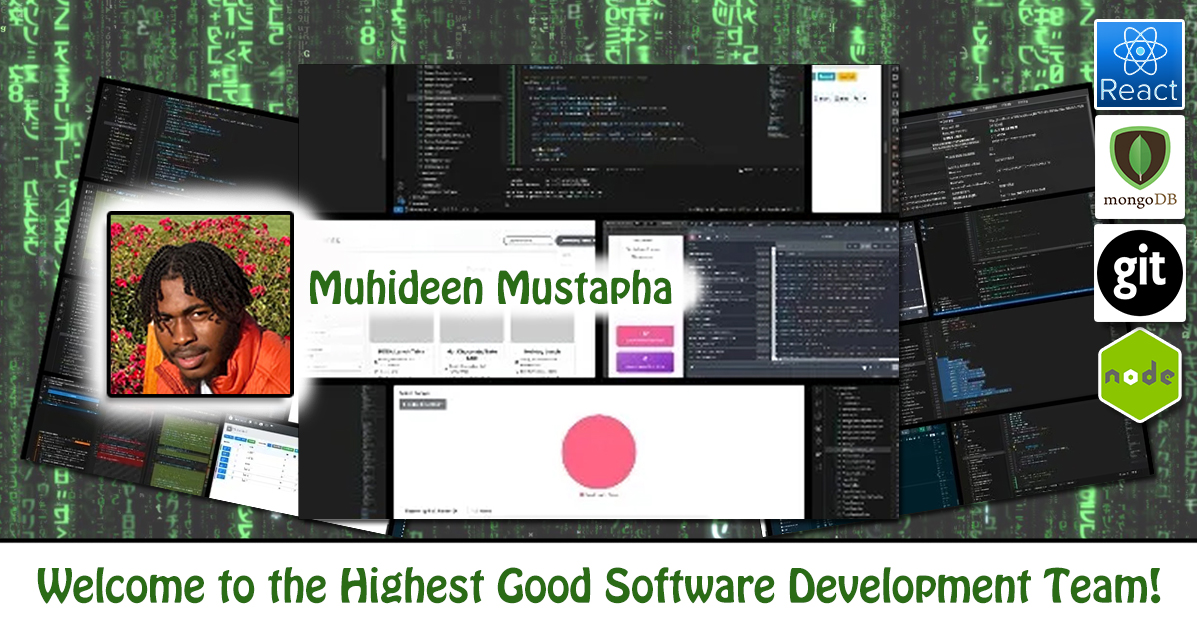
Muhideen is a recent computer science graduate from Lincoln University with a background in software engineering, systems engineering, and machine learning. Passionate about simplifying processes and driving positive change, Muhideen has contributed as a Full Stack Developer on the One Community team, assisting in the development and testing of numerous features across different phases of the Highest Good Network software project ranging from badges to user management functionalities.
WELCOME TO THE TEAM MUHIDEEN!
FOLLOW ONE COMMUNITY’S PROGRESS (click icons for our pages)
INVESTOR PAGES
GET INVOLVED
One Community Welcomes Vishnu Murali to the Administration Team!
Posted on January 22, 2025 by One Community Hs
One Community welcomes Vishnu Murali to the Administration Team as our newest Volunteer/Consultant!
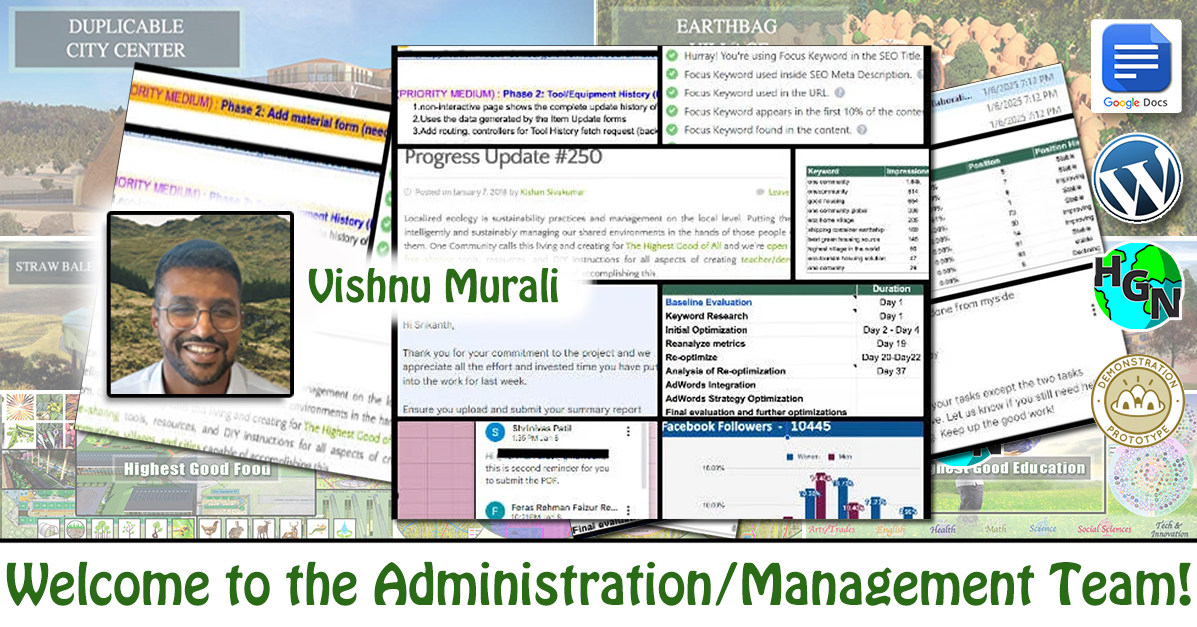
Vishnu is highly skilled in data modeling, advanced analytics, and creating intuitive dashboards that empower stakeholders with actionable insights. He excels in optimizing data pipelines, enhancing query performance, and implementing robust ETL workflows to support scalable solutions. With expertise in Power BI DAX, SQL, and machine learning frameworks like TensorFlow, Vishnu delivers data-driven strategies that improve decision-making processes. His strong communication skills, coupled with a deep technical foundation, enable him to bridge the gap between technical teams and business stakeholders effectively. As a member of the One Community team, he is committed to resource optimization and sustainability, ensuring that projects not only achieve business objectives but also contribute positively to environmental and economic outcomes.
WELCOME TO THE TEAM VISHNU!
FOLLOW ONE COMMUNITY’S PROGRESS (click icons for our pages)
INVESTOR PAGES
GET INVOLVED
Thanks for Your Contributions to Our Engineering Team Preston Thompson!
Posted on January 22, 2025 by One Community Hs
One Community thanks Preston Thompson for his contributions as a Volunteer/Consultant on the Engineering Team!
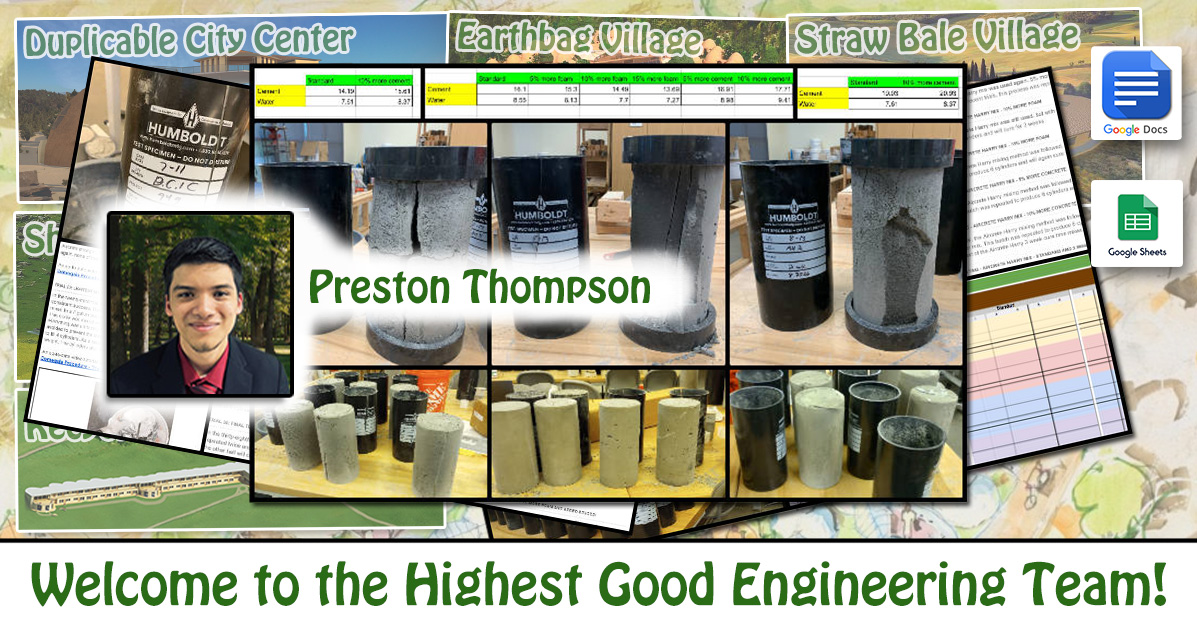
Preston is an undergraduate civil engineering student with a growing passion for designing and constructing infrastructure such as bridges, roads, industrial buildings, and railroads. He has gained hands-on experience through activities like participating in a bridge competition and the 2024 PSWS competition. His work with concrete canoes sparked an interest in concrete mixtures, driving him to explore innovative materials and their applications. Over the years, Preston has honed his skills in tools such as Excel, MicroStation, AutoCAD, Revit, and Navisworks. As a volunteer with One Community, he contributed to testing the compressive strength of various Aircrete mixtures and played a key role in compiling a comprehensive report summarizing the data and findings.
WELCOME TO THE TEAM PRESTON!
FOLLOW ONE COMMUNITY’S PROGRESS (click icons for our pages)
INVESTOR PAGES
GET INVOLVED
One Community Welcomes Yan Zu to the Architecture Team!
Posted on January 22, 2025 by One Community Hs
One Community welcomes Yan Zu to the Architecture Team as our newest Volunteer/Consultant!
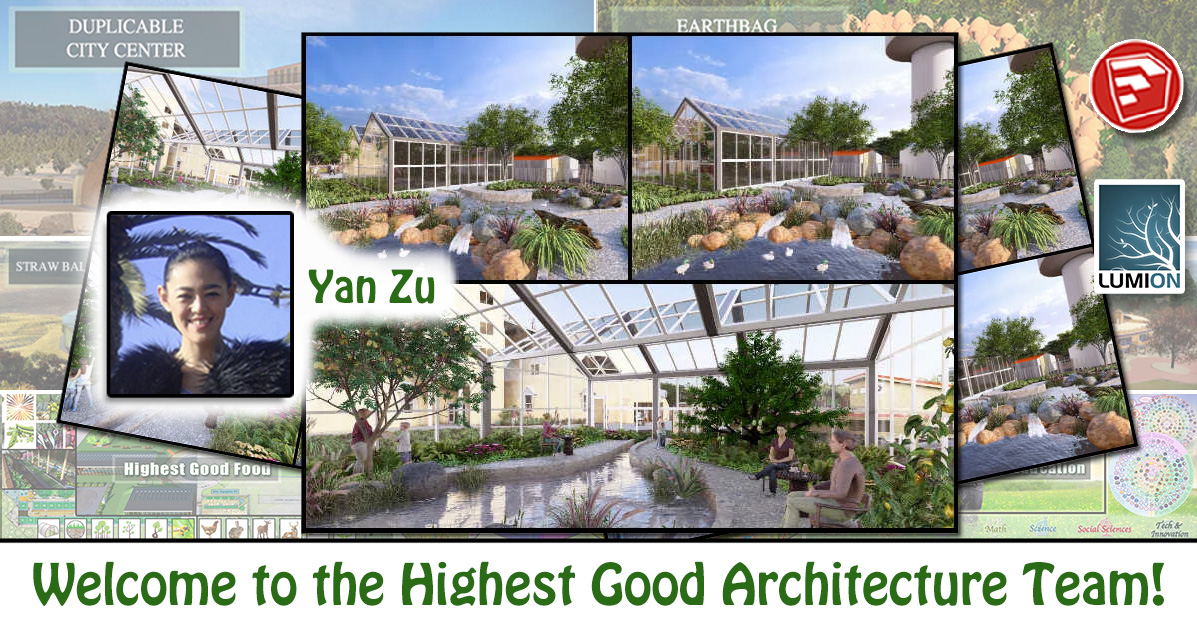
With over 5 years of experience in architectural design, Yan has worked on diverse projects ranging from private residences to public buildings. She excels in fast-paced environments and complex projects, consistently delivering efficient and effective solutions to challenging design problems. Committed to sustainability, Yan integrates environmental responsibility into her work, creating designs that are both innovative and eco-friendly. As part of the Architecture Team at One Community, she has showcased her expertise by producing high-quality visual renderings of the Duplicable City Center using Lumion, bringing visionary concepts to life with precision and creativity.
WELCOME TO THE TEAM YAN!
FOLLOW ONE COMMUNITY’S PROGRESS (click icons for our pages)
INVESTOR PAGES
GET INVOLVED
One Community Welcomes Yurembam Nimika Devi to the Architecture Team!
Posted on January 21, 2025 by One Community Hs
One Community welcomes Yurembam Nimika Devi to the Architecture Team as our newest Volunteer/Consultant!
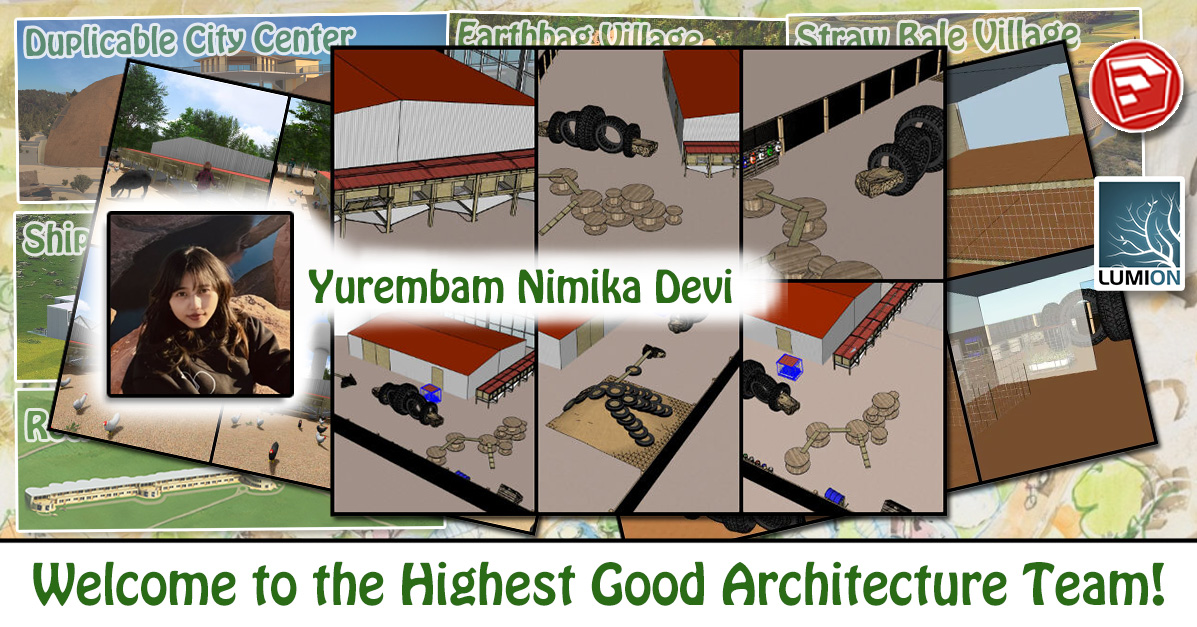
Yurembam brings over two years of experience in architectural design and construction across diverse project types. Her design philosophy emphasizes innovation, efficiency, and attention to detail, ensuring that each space meets and exceeds user needs. Approaching every project with the understanding that architecture is about crafting environments that inspire and improve lives, she combines technical expertise with a thoughtful design approach to create spaces that harmonize with their surroundings and enhance human interaction. In her work on the Duplicable City Center development, Yurembam has focused on rendering an HD-quality model integrating activities into the design to enhance functionality and realism. She has also given particular attention to the vegetation areas, incorporating diverse plant types in alignment with the master plan to create a cohesive and sustainable design. Through her contributions, she continues to exemplify her commitment to thoughtful, impactful, and innovative architectural solutions.
WELCOME TO THE TEAM NIMIKA!
FOLLOW ONE COMMUNITY’S PROGRESS (click icons for our pages)
INVESTOR PAGES
GET INVOLVED
Sustainable Change for the Whole Planet – One Community Weekly Progress Update #618
Posted on January 20, 2025 by One Community Hs
At One Community, we are open sourcing sustainable change for the whole planet to create a world that works for everyone. Our all-volunteer team is building a self-replicating model that integrates sustainable approaches to food, energy, housing, education, economics, and social architecture. By open sourcing and free sharing the entire process, we aim to foster a global collaboration of teacher/demonstration hubs, all for “The Highest Good of All.” Through these efforts, we are evolving sustainability, regenerating our planet, and inspiring fulfilled living for people everywhere.
- Here’s our project overview
- Here’s our world-change methodology
- Here’s how this becomes self-replicating
- Here’s how we are open source and free-sharing all the do-it-yourself designs
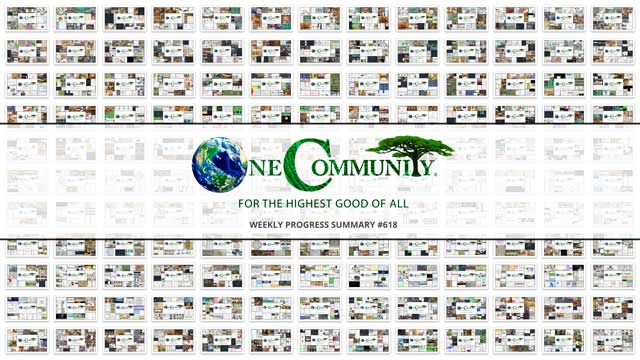
OUR MAIN OPEN SOURCE HUBS
Click on each icon to be taken to the corresponding Highest Good hub page.
One Community’s physical location will forward this movement as the first of many self-replicating teacher/demonstration communities, villages, and cities to be built around the world. This is the January 20th, 2025 edition (#618) of our weekly progress update detailing our team’s development and accomplishments:
Sustainable Change for the Whole Planet
One Community Progress Update #618
DONATE | COLLABORATE | HELP WITH LARGE-SCALE FUNDING
CLICK HERE IF YOU’D LIKE TO RECEIVE AN EMAIL EACH WEEK WHEN WE RELEASE A NEW UPDATE
YOU CAN ALSO JOIN US THROUGH SOCIAL MEDIA
ONE COMMUNITY WEEKLY UPDATE DETAILS
HIGHEST GOOD HOUSING PROGRESS
 One Community is open sourcing sustainable change for the whole planet through Highest Good housing that is artistic and beautiful, more affordable, more space efficient, lasts longer, DIY buildable, and constructed with healthy and sustainable materials:
One Community is open sourcing sustainable change for the whole planet through Highest Good housing that is artistic and beautiful, more affordable, more space efficient, lasts longer, DIY buildable, and constructed with healthy and sustainable materials:
- Learn about: Our Upcoming Crowdfunding Campaign
- Learn about the different village models: 7 Sustainable Village Models
- Visit the open source portals for the first two: Earthbag Village OS Hub | Straw Bale Village OS Hub
This week, Adefola (Fola) Madehin (Electrical Design Specialist) continued his work with Earthbag Village electrical designs. Fola completed the socket and panel layout for the Earthbag Village project, placing receptacles in the bedrooms, bathroom, and living room, with the distribution panel installed in the living room on the first floor. Air-conditioning sockets were connected directly to the panel, each with an individual breaker, and the ring circuits were connected in a loop, also with separate breakers. The Earthbag Village is the first of 7 to be built as the housing component of One Community’s open source model for sustainable change for the whole planet. See some of his work in the collage below.
Adil Zulfiquar (Engineer) continued working on the Vermiculture Toilet engineering designs. The report on operating conditions and schedules for vermiculture composting was formalized. Feedback was integrated, content was reorganized, and pictorial representations were added to highlight key facts, effects, and measures for ensuring smooth operation during both winter and summer. The report included a breakdown of actions to streamline operations and enhance efficiency, providing guidance for maintaining optimal conditions. The Earthbag Village is the first of 7 to be built as the housing component of One Community’s open source model for sustainable change for the whole planet. See below for some of the pictures related to work.
Akshit Sethi (Architectural Designer) continued working on updating the Earthbag Village SketchUp and AutoCAD layouts. Updates were made to the SketchUp model of the domes to align with the design document specifications. Tasks included refining iterations of the egress windows for the domes in the outer cluster to ensure compliance with code requirements. The CAD models for the domes in the outer cluster were also revisited, with previous designs revised to accurately reflect updated design standards. The work focused on improving precision and consistency across design elements while addressing project requirements. The Earthbag village is the first of 7 villages to be built as part of One Community’s open source model for sustainable change for the whole planet. See his work in the collage below.
Anil Karathra (Mechanical Engineer) continued advancing the engineering and design of the Vermiculture Toilet for the Earthbag Village project. Documentation was created to outline the application of temperature control methods to the existing eco toilet design. Participation in the weekly team meeting involved assigning tasks to team members and continuing research on temperature control methods for the current design. The research focused on solar heating and cooling solutions for the vermiculture chamber, and updates to the eco toilet layout were initiated using the latest CAD files. A weekly summary was prepared, and screenshots of the past week’s work were uploaded to Dropbox for team review and archival. This commitment to sustainable change for the whole planet drives the development of innovative, eco-friendly solutions that balance environmental responsibility with high standards of functionality. See below for pictures related to this work.
Charles Gooley (Web Designer) continued working on the Aircrete Engineering and Research: Compression Testing, Mix Ratios, R-value, and More page. This week, Charles worked on aircrete engineering and research tasks, including compression testing, mix ratios, and R-value analysis. He logged into the One Community YouTube channel and uploaded multiple videos, noting that some of the videos contained black borders and may require replacement. He also addressed comments on the page by updating sections with revised text and image. Aircrete is an alternative being explored for the Earthbag Village, a foundational part of One Community’s open-source model for sustainable change for the whole planet. Take a look at some of the work in the images below.
Faeq Abu Alia (Architectural Engineer) continued his work on the Earthbag Village 4-dome home renders. He worked on the modeling of a 4-dome home using SketchUp and Lumion, focusing on both interior and exterior aspects of the design. The exterior portion of the model was completed in SketchUp, and progress continued on the interior design to maintain consistency with the overall concept. A walkthrough video for Room 1 was rendered to document the current stage of development. The Earthbag Village represents a fundamental element of One Community’s open-source approach, dedicated to the mission of open-sourcing sustainable change for the whole planet. View examples of this work in the pictures provided below.
Karthik Pillai (Mechanical Engineer) continued helping finish the Vermiculture Toilet engineering and helping with the Earthbag Village 4-dome home roof plan. Karthik worked on advancing the vermiculture design project by incorporating new framing specifications provided by Jae. He performed finite element analysis (FEA) on the updated structure and began drafting a detailed report to document the analysis and findings. For the four-dome cluster roof design, he conducted iterations using a revised live load of 60 psf, testing various dimensions for the main joist spanning approximately 20 feet. The iterative process involved evaluating structural performance under the updated parameters. Screenshots of the calculations and FEA analysis were uploaded to the team’s Dropbox folder for accessibility and collaboration. The Earthbag Village is the first of 7 to be built as the housing component of One Community’s open source model for sustainable change for the whole planet. See the work in the collage below.
Loza Ayehutsega (Civil Engineer/Assistant Civil Engineer) completed another week working on the Earth Dam risk assessment and dam break hazard assessment. Risk and hazard assessment is an integral part of sustainable change for the whole planet. Loza reviewed the report, organizing its contents by removing redundant titles and repetitive sections. Work continued on the final section of the dam emergency action report, focusing on the types of incidents that can occur in the context of dams and the corresponding emergency actions necessary to protect lives, property, and the environment. This approach to sustainable change for the whole planet supports the development of innovative solutions that are both environmentally friendly and effective. See below for pictures related to this work.
Michaela Silva (Architect) continued working on the interior details for the Earthbag Village 4-dome home design. Michaela analyzed the beam sizes for the roof deck and determined that accommodating an 18-inch beam would require raising the loft window by 6 inches to position it above the top of the roof deck. Consequently, the loft floor would need to be raised by approximately 4 inches to maintain a sill height of less than 44 inches, ensuring compliance with egress requirements. This adjustment would also necessitate adding a stair in the closets and incorporating a bag into each dome to maintain compliance with loft area and ceiling height standards. The Earthbag Village is the first of 7 villages to be built as part of One Community’s open source model for sustainable change for the whole planet. See her work in the collage below.
Sai Subhash Teja Deevi (Civil Engineer) started working with the Earthbag Village electrical designs. Teja completed orientation and focused on familiarizing himself with the website while reviewing sections of the Earthbag Village related to the Net-zero Bathroom, Communal Shower, Vermiculture Toilet, and Tropical Atrium. He also examined the corresponding designs for these components in the Earthbag Village Master Folder. Additionally, he began reviewing website content on sustainable processing options for non-recyclables at both small and large scales and started reading about paper recycling and reuse. The Earthbag Village is the first of 7 to be built as the housing component of One Community’s open source model for sustainable change for the whole planet. See the work in the collage below.
Yi-Ju Lien (Environmental Engineer) continued her work on the Open Source DIY Dam Design for Water Retention, Pond and Lake Creation, etc. content and Earthbag Village LEED points related to stormwater retention. Yi-Ju finalized the DIY earth dam document, concentrating on the “Risk Communication and Emergency Preparedness” section. She introduced the concept of risk communication and outlined the Emergency Action Plan (EAP) and its response process for effective safety management. Yi-Ju reviewed the entire document, adding safety concern icons where needed and ensuring the content on the website was accurate and up to date. Additionally, she worked on the rainwater harvesting system content, presenting various filtration techniques; this relates to sustainable change for the whole planet. See some of the work done in the collage below.
DUPLICABLE CITY CENTER PROGRESS
 One Community is open sourcing sustainable change for the whole planet through a Duplicable and Sustainable City Center that is LEED Platinum certified/Sustainable, can feed 200 people at a time, provide laundry for over 300 people, is beautiful, spacious, and saves resources, money, and space:
One Community is open sourcing sustainable change for the whole planet through a Duplicable and Sustainable City Center that is LEED Platinum certified/Sustainable, can feed 200 people at a time, provide laundry for over 300 people, is beautiful, spacious, and saves resources, money, and space:
- Learn about this building and it’s function: Duplicable City Center Open Source Hub
This week, Apoorv Pandey (Mechanical Engineer) continued working on the DIY dormer window design for the second floor of the Duplicable City Center. He analyzed previous design concepts for the second floor and reviewed the completed first-floor design to guide his approach. His research focused on industry-standard practices for dormer window design to integrate proven principles into the project. He also continues to design the dormer window body to comply with egress guidelines and is converting older Autodesk Inventor files into a format compatible with SolidWorks to facilitate design iteration. Within One Community’s open-source framework, the Duplicable City Center plays a central role in open-sourcing sustainable change for the whole planet. The images below showcase some of this work.
Arnob Mutsuddi (Mechanical Engineer) continued working on Duplicable City Center structural engineering model and details. His work continued on the hub connector design for row 7-1, with progress made on the design of six side struts and the alignment of angles. A team meeting was held to discuss an additional task related to the measurement of dimensions. Efforts also focused on aligning the side struts with the middle ring. Additionally, the dimensions for the entire dome frame were generated and uploaded in PDF format. The Duplicable City Center is a foundational part of One Community’s open-source model, which excels in the mission of open-sourcing sustainable change for the whole planet. This approach is integral to their mission of open-sourcing sustainable change for the whole planet through innovative and scalable solutions. See some of this work in the pictures below.
Chris Blair (GIS Technician/Horticulturist) continued working with GIS data as part of One Community’s Permaculture Design that includes the location of the Duplicable City Center. He worked with GIS data for the Permaculture Design project. He compared results from QGIS and ArcGIS Pro, added side-by-side graphics to illustrate differences, and expanded his Google document with additional content. He also revised the Water Harvesting and Watershed Maps. Within One Community’s open-source framework, the Duplicable City Center plays a central role in open-sourcing sustainable change for the whole planet. The images below showcase some of this work.
Jason Bao (Architectural Designer) continued working on producing renders for the Duplicable City Center library. The updated file received from Jae was merged with the current model and uploaded for team access. Light source models were selected and added to the second floor to align with the lighting tests. Three main spotlights were modeled and incorporated into the SketchUp file, with adjustments made to light choices and placements based on Jae’s feedback. Textures were added and modified in the Lumion file, and ideas were developed for potential scenarios to showcase the second-floor space usage. Human figures were added to represent general usage scenarios, and lighting was configured in the Lumion file. Camera angles and render settings were tested, and lighting test renders for the second-floor space were produced and uploaded to Dropbox for review. The Duplicable City Center is a foundational part of One Community’s open-source model, which excels in open-sourcing sustainable change for the whole planet. This approach is integral to their mission of open-sourcing sustainable change for the whole planet through innovative and scalable solutions. See some of this work in the pictures below.
Mohammed Maaz Siddiqui (Architect) continued working on the cupola renders for the Duplicable City Center project. This week, Mohammed worked on developing the workout session scene for the sun deck area of the duplicable city center, focusing on presenting the space for its intended use. He also created a wedding scene on the deck to demonstrate the space’s versatility and suitability for different functions. Within One Community’s open-source framework, the Duplicable City Center plays a central role in the mission of open-sourcing sustainable change for the whole planet. The images below showcase some of this work.
Nimika Devi (Architect) continued her contributions to the landscape design and development of the Duplicable City Center‘s urban farm. Her work focused on importing a SketchUp file into Lumion, but the process was repeatedly interrupted by crashes and errors. Attempts to fix the software were unsuccessful. Clearing RAM and updating the graphics card did not resolve the issue. Multiple methods were tried to import the file, but none were successful. Converting the SketchUp file into a Lumion-compatible format took 24 hours, but the file still did not open in Lumion. Within One Community’s open-source framework, the Duplicable City Center plays a central role in the mission of open-sourcing sustainable change for the whole planet. The images below showcase some of this work.
Rachan Rao (Project Manager) continued working with Vatsal to assist him with the cost analysis for Off-Grid energy implementation in the HGE project. He collaborated with the Duplicable City Center team to gather updates and track progress on their current action tasks. He also coordinated with Arnob to address an additional task related to dome dimensioning, which could assist other engineers working on the same structure. Additionally, Rachan created a new spreadsheet for the hub-connector assembly, improving its clarity and providing a more accessible way to understand the hub-connector sub-assembly design and how to implement a DIY design. Within One Community’s open-source framework, the Duplicable City Center plays a central role in the mission of open-sourcing sustainable change for the whole planet. The images below showcase some of this work.
Rudrani “Sravya” Mukkamala (Mechanical Engineer) continued researching the structural components of a hydraulic elevator, focusing on the framework, guide rails, and load-bearing elements. The focus was reviewing the design plan and organizing tasks based on completed and pending components. The assembly of the elevator car began, with design adjustments made to various parts during the process. As work progressed, it became clear that changes to the guide rollers were needed to accommodate modifications to the elevator door design. These adjustments were made to ensure alignment and compatibility with the updated door specifications. Additionally, any inconsistencies identified during assembly were addressed, and further refinements were made. The week concluded with the assembly nearing completion, and the remaining tasks outlined for the next phase. Within One Community’s open-source framework, the Duplicable City Center plays a central role in the mission of open-sourcing sustainable change for the whole planet. The images below showcase some of this work.
Sanket Basannavar (Mechanical Engineer) continued working on the Duplicable City Center spa cover as part of the City Center Natural Pool and Eco-spa Designs. He completed a new design of the spa pool, including the assembly of the spa cover, to enable better analysis of heat flux changes and study heat or energy loss associated with the designed cover. Additionally, a pulley system was developed to assist with the opening of the spa cover panels. Within One Community’s open-source framework, the Duplicable City Center plays a central role in open-sourcing sustainable change for the whole planet. The images below showcase some of this work.
HIGHEST GOOD FOOD PROGRESS
 One Community is open sourcing sustainable change for the whole planet through Highest Good food that is more diverse, more nutritious, locally grown and sustainable, and part of our open source botanical garden model to support and share bio-diversity:
One Community is open sourcing sustainable change for the whole planet through Highest Good food that is more diverse, more nutritious, locally grown and sustainable, and part of our open source botanical garden model to support and share bio-diversity:
- Learn about the structures: Hoop House Hub | Aquapini & Walipini Open Source Hub
- See what we’ll be growing: Gardens & Hoop Houses | Large-scale Structures | Food Forest | TA
This week, the core team continued to expand the Earthbag Tools, Equipment, and Material/Supplies by adding shared items identified from the goat, chicken, and rabbit projects. These items, including the wire clips, clip bender tool, octopost steel posts, octopost steel cover caps, spirit level, and small sledge hammer are utilized across multiple projects within One Community. Items specific to individual projects were excluded from the master list. The Highest Good Food initiative is a key component of One Community’s open source plans, focused on sustainable change for the whole planet, and exemplifies the organization’s commitment through innovative design and implementation. Below are some of the images showcasing this work.
Jay Nair (BIM Designer) continued working on Aquapini and Walipini Planting and Harvesting lighting and HVAC design. He reached out to companies to explore alternative lighting fixtures suitable for meeting the specific requirements of Walipini 1. In addition to researching lighting options, Jay made corrections to the project document to enhance its accuracy and alignment with standards. Jay also started learning about integrating sprinkler systems into the design, focusing on how to incorporate them effectively into the overall plan for Walipini 1. The Highest Good Food initiative is a key component of One Community’s open source plans, focused on sustainable change for the whole planet, and exemplifies the organization’s commitment through innovative design and implementation. Below are some of the images showcasing this work.
Jessica Fairbanks (Administrative Assistant) focused on advancing her work on incorporating Highest Good Food into small-scale organizations, focusing on the processes for starting a food forest and a community garden. She also edited and added the resources used in the project to the resources list. Additionally, Jessica scheduled and completed an interview with a potential new employee and completed her weekly administrative tasks. The Highest Good Food initiative is a key component of One Community’s open source plans, focused on sustainable change for the whole planet, and exemplifies the organization’s commitment through innovative design and implementation. Her contributions are highlighted in the collage below.
Junyi Shi (Landscape Architect) continued working on developing a design for Walipini #2 as a part of Aquapini and Walipini Planting and Harvesting project. Further she made edits to the perspectives in the video animation, focusing on the viewpoints and pathways observed after entering the garden, as well as adjustments to environmental factors such as sunlight. The work highlights the distribution of fruit trees and the diversity of design themes within the garden. The Highest Good Food initiative is essential to One Community’s open source plans, focused on sustainable change for the whole planet. Her contributions are highlighted in the collage below.
Mary Nelson (Landscape Planner) worked on the general Soil Amendment strategy task focusing on large-scale vegetable gardens. She researched the property’s geology and soil composition to develop a plan for preparing it for gardening. The plan included steps such as pH correction, adding organic material, and solarization, among other measures. Mary also familiarized herself with the region’s climate and identified any native fruits and vegetables. She then researched which vegetables and fruit trees are best suited to the climate, ensuring the strategy’s accuracy. Finally, Mary uploaded the completed strategy to the existing soil amendment document. The Highest Good Food initiative is essential to One Community’s open source plans, focused on sustainable change for the whole planet. Her contributions are highlighted in the collage below.
Silin Wang (Landscape Designer) continued rendering work for Aquapini and Walipini Planting and Harvesting #2: Tropical Moist House. She refined the planting design for the terraced planting pools. To enhance the representation of a humid tropical greenhouse, adjustments were made to the lighting and mist effects, moss and weathering details were added to material surfaces, and lush vines and weeds were incorporated. The updates were presented through complete renderings and detailed images. The Highest Good Food initiative is essential to One Community’s open source plans, focused on sustainable change for the whole planet. Her contributions are highlighted in the collage below.
Tanmay Koparde (Industrial Engineer And Team Administrator) continued working on the Menu Supply Chain and Shopping Plan, Cost Analysis, and Food Procurement and Storage Plan to streamline organizational workflows and enhance efficiency. His case was reviewed by Jae, and he is began implementing the necessary changes. Additionally, he reviewed existing plans and added sections on waste management, water management, transportation, shipping, inventory management, and evaluation to align with project objectives, focusing on Mariposa, California. The Highest Good Food Initiative is a key component of One Community’s open source plans, focused on sustainable change for the whole planet. See his work in the collage below.
Vatsal Tapiawala (Mechanical Engineer) continued working on integrating ideas from Paul Wheaton’s “Truly Passive Greenhouse” designs into the Aquapini/Walipinis structures. He worked on running structural analysis for Walipini 1 using ANSYS and explored an alternate plan in case the Revit model could not be integrated with the software. He addressed suggestions for the report on the earthen roof and prepared a detailed cost analysis and return on investment report. The Highest Good Food Initiative is a key component of One Community’s open source plans, focused on sustainable change for the whole planet. See his work in the collage below.
Ziyi Chen (Landscape Designer) continued working on the design of the outdoor spaces for the Aquapini/Walipinis structures and began rendering the models. She focused on optimizing the layout of the outdoor areas south of the Zen structure, adjusting material presentations in the Enscape renderer, and maintaining a balance between functionality and aesthetics, with a focus on consistency across the design. The Highest Good Food initiative is a key component of One Community’s open source plans, focused on sustainable change for the whole planet. See her work in the collage below.
HIGHEST GOOD ENERGY PROGRESS
 One Community is open sourcing sustainable change for the whole planet through Highest Good energy that is more sustainable, resilient, supports self-sufficiency and includes solar, wind, hydro and more:
One Community is open sourcing sustainable change for the whole planet through Highest Good energy that is more sustainable, resilient, supports self-sufficiency and includes solar, wind, hydro and more:
- Learn about the open source sustainable-energy foundations: Solar, Hydro, and Wind
- Explore our research into the most sustainable products and companies for saving water and energy: Insulation, Eco-laundry, Lightbulbs and Light Bulb Companies, Doors and Door Companies, Windows and Window Companies, Toilets, Faucets and Faucet Accessories, Urinals, and more.
This week, Muhammad Sarmad Tariq (Electrical Engineer) reviewed available literature on IEEE Xplore to explore methods for calculating the profit of grid-tie versus off-grid solar microgrid systems. This included creating a methodology to calculate savings for each system, energy costs for deficient units, investment costs, and battery replacement costs. In addition, a literature search was completed on IEEE Xplore to explore existing methods for calculating the profit of grid-tie and off-grid solar PV systems. The Highest Good Energy initiative is a key component of One Community’s open-source plans, focused on sustainable change for the whole planet. See his work in the collage below.
HIGHEST GOOD EDUCATION PROGRESS
 One Community is open sourcing sustainable change for the whole planet through Highest Good education that is for all ages, applicable in any environment, adaptable to individual needs, far exceeds traditional education standards, and more fun for both the teachers and the students. This component of One Community is about 95% complete with only the Open Source School Licensing and Ultimate Classroom construction and assembly details remaining to be finished. We’ll report on the final two elements to be finished as we develop them. With over 8 years of work invested in the process, the sections below are all complete until we move onto the property and continue the development and open sourcing process with teachers and students – a development process that is built directly into the structure of the education program and everything else we’re creating too:
One Community is open sourcing sustainable change for the whole planet through Highest Good education that is for all ages, applicable in any environment, adaptable to individual needs, far exceeds traditional education standards, and more fun for both the teachers and the students. This component of One Community is about 95% complete with only the Open Source School Licensing and Ultimate Classroom construction and assembly details remaining to be finished. We’ll report on the final two elements to be finished as we develop them. With over 8 years of work invested in the process, the sections below are all complete until we move onto the property and continue the development and open sourcing process with teachers and students – a development process that is built directly into the structure of the education program and everything else we’re creating too:
- Program Overview: Education Open Source Hub
- How the components work together in designing human orchestrated eco-abundance: How to use the Education for Life Program
- Lesson Plans for Life – Lesson Plans How-to
- Foundations of Outstanding Leaders, Teachers, and Communicators
- Curriculum for Life
- Teaching Strategies for Life
- Learning Tools and Toys for Life
- Evaluation and Evolution
This week, the core team completed the first draft of the rest of the content needed for the open-source Highest Good Education Program School Licensing and Accreditation content. The One Community model of combining forward-thinking education with sustainably built classrooms like this is an excellent example of sustainable change for the whole planet. The pictures below show some of what is coming.
Brian Mwoyowatidi (Graduate Structural Engineer) continued helping with the footer, foundation, and flooring engineering details for The Ultimate Classroom part of the Highest Good Education component. He worked on final edits to the Ultimate Classroom Footer, Foundation, and Flooring Design Report in preparation for publication. He focused on formatting headers, adjusting spacing, and refining formulae throughout the document and also revised some of the technical content to make it more accessible and understandable to the general public. The report is now approximately 90% complete and ready for publication on the One Community website. The One Community model of combining forward-thinking education with sustainably built classrooms like this is an excellent example of sustainable change for the whole planet. See the collage below for his work.
HIGHEST GOOD SOCIETY PROGRESS
 One Community is open sourcing sustainable change for the whole planet through a Highest Good society approach to living that is founded on fulfilled living, the study of meeting human needs, Community, and making a difference in the world:
One Community is open sourcing sustainable change for the whole planet through a Highest Good society approach to living that is founded on fulfilled living, the study of meeting human needs, Community, and making a difference in the world:
- Read the Highest Good society overview: Highest Good Society
- Learn about the model for fulfilled living and sharing: A Day in the Life
- Learn about the 4 economic models: RBE | For-profit | Non-profit | Entrepreneurship
- Learn about our open source community collaboration and management software: The Highest Good Network
This week, the core team completed over 47 hours managing One Community’s volunteer-work review not included above, emails, social media accounts, web development, new bug identification and bug-fix integration for the Highest Good Network software, and interviewing and getting set up new volunteer team members. They also shot and incorporated the video above that talks about sustainable change for the whole planet and how sustainable change for the whole planet is a foundation of the bigger picture of everything One Community is doing. The image below shows some of this work.
Anoushka Hazari (Data Analyst) continued working on code to automate and simplify the Highest Good Network software promotion process. She focused on reviewing pull requests, updating the PR review table, and refining the HGN spreadsheet, including making necessary changes and reviewing entries in sheet 4. A blog post was written, accompanied by a designed collage, and a previous error in the blog was corrected to improve accuracy. Exploratory data analysis was performed to generate graphs for integration into Figma. To address this, the graphs were refined while revisiting a Loom video shared by Jae to ensure alignment with specific expectations. Challenges arose while working on a time plot due to a messy date column in the dataset, which included inconsistent formats, invalid entries, and missing values. These issues were resolved by cleaning and standardizing the date column, enabling the creation of consistent intervals for plotting. Simultaneously, work on a copy of the HGN PR review sheet involved fixing the disorganized date column to enable time series analysis, with bar graphs as an alternative if this effort proved unsuccessful. Additionally, a dataset was cleaned and explored by removing empty rows, filtering for relevant columns, and ensuring numeric consistency in the “PR reviewed” column. Summary statistics and the top 10 contributors by PR reviewed were identified, followed by the creation of a histogram, a bar chart, and a boxplot to provide clear visual summaries of the data. This work helps One Community’s mission of sustainable change for the whole planet and reinforces our commitment to sustainable change for the whole planet. The following images show her work for the week.
Durgeshwari Naikwade (Data Analyst) continued working on projects involving Google Analytics and LinkedIn Analytics. She created a video walkthrough outlining the LinkedIn process and updated the main analytics document by removing irrelevant content, including Jae’s video and comments, and adding her tutorial videos and step-by-step instructions to establish it as the standard reference for the team. Durgeshwari trained Zuqi on the LinkedIn analytics process to ensure she could manage LinkedIn accounts independently and modified the LinkedIn analytics spreadsheet to include a one-page overview for Jae to track Xuchi’s progress. She also prepared a document detailing the LinkedIn analytics process and its management for future handovers. Durgeshwari assisted with final interviews and tracked the number of completed interviews for inclusion in her resume. She also provided final feedback to the Google Analytics team, explaining the reassignment of the team to other tasks. And she drafted two documents, covering the LinkedIn process and analytics process, for Jae’s feedback. Sustainable change for the whole planet is the driving force behind One Community. Every action, every innovation, every contribution moves us closer to a future where sustainable change for the whole planet is a reality. The following images show her work for the week.
Feras Rehman (Data Analyst) continued working on developing One Community’s Mastodon account and strategy. He reviewed errors identified for Sneka, Jessica, Shrinivas, Ratna, and Samarth and provided feedback. Five Mastodon posts were scheduled on Buffer for the next week. Targeted Mastodon strategies were developed and implemented, resulting in a fivefold increase in post reach through optimized hashtag usage and improved post structuring. This work helps One Community’s mission of sustainable change for the whole planet and reinforces our commitment to sustainable change for the whole planet. The following images show his work for the week.
Hritvik Mahajan (Data Analyst) continued focusing on multiple tasks related to marketing, promotion, software development, social media strategy, and administrative activities. He managed Twitter postings for different communities, analyzed post engagement, and explored effective content strategies by observing similar pages. He continued working on the design of the social media scheduler using Figma and provided feedback on multiple documents related to Phase 1 bug fixes and Phase 3 social architecture. Hritvik also engaged in discussions on Slack and reviewed pull requests on the development site. Additionally, he revisited high-engagement posts from the previous month to test their performance and updated the strategy management Google Sheets with new posts for the upcoming weeks. Finally, Hritvik provided feedback on the work of several admin team members for Blog #617. Sustainable change for the whole planet is our mission. One Community is dedicated to building a future where sustainable change for the whole planet is a reality for all. The following images show his work for the week.
Raghav Dinesh Pamuru (Product Manager) continued focusing on designing and building a Google Sheets dashboard to simplify tracking and analyzing social media engagement. He added new mock data and visualization features, including charts and graphs, to the updated social media engagement dashboard for One Community. He focused on improving the functionality and layout of the dashboard to enhance user experience and provide clearer insights. He also incorporated feedback to refine the interface and ensure the visual elements aligned with project requirements. The final stage of dashboard integration with other data analysts is ready to be done. This work helps One Community’s mission of sustainable change for the whole planet and reinforces our commitment to sustainable change for the whole planet. The following images show his work for the week.
Rahul Bavanandan (Data Analyst) continued working on several key projects within the Highest Good Network software, One Community’s Reddit presence, and administration. He worked on the HGN Phase 2 Evolution project, focusing on translating the Figma designs for the Phase 2 dashboard and incorporating feedback provided by Jae. Additionally, he updated the blog on the Defining Our Avatar page, which included confirming the version number and optimizing the content using the RankMath Tutorial for advanced SEO integration. His efforts also included completing the Weekly Content Administrator role by consolidating administrators’ blogs into the main blog, creating a PDF, and addressing areas that required justification. This work supports One Community’s mission of sustainable change for the whole planet and strengthens our unwavering commitment to sustainable change for the whole planet. The following images show his work for the week.
Shireen Kayal (Humanitarian Program Developer & Data Manager) continued her work on branding graphics for all of One Community. This week, she created new graphics for both the Highest Good Energy page and the For The Highest Good of All® page. She focused on enhancing visual materials, researching, and accomplishing several key tasks. Shireen updated the “Building a Sustainable Civilization” image and incorporated the relevant URL, improved the “Highest Good Economics” image by correcting text issues, and increased the font size of the pie chart while maintaining its design, uploading two versions with different backgrounds for selection. Additionally, she explored a platform for creating 3D pie charts with manipulation and animation features, capturing a screenshot due to the lack of a save option and suggesting using shorter labels for better visual appeal. Shireen also researched the Highest Good Housing page, summarized key points into bullet points, and created five infographics in various color schemes for review. Lastly, Shireen developed a new “Highest Good Society” image, creating three versions after incorporating the new provided text that didn’t fit within the designated boxes, and reorganized the “Building Methods for Sustainable Living through Highest Good Housing” section while awaiting feedback before finalizing everything. By embracing this work, we contribute to One Community’s goal of sustainable change for the whole planet while reaffirming our dedication to sustainable change for the whole planet. The following images show her work for the week.
Yash Shah (Data Analyst and Team Administrator) continued his admin work and managed the social architecture component of the Highest Good Network software. He collaborated closely with software developers to assess the progress of assigned tasks and ensure alignment with project goals. He reviewed Khushi’s completed feedback form task and continued coordinating with her on refining project documentation for improved clarity and usability. As part of his role in Phase 3 development, Yash provided valuable insights, assigned responsibilities, and ensured that volunteers were equipped with the resources needed to meet their objectives effectively. Additionally, he authored a blog for Dev Dynasty, organized the weekly folder, created a collage, and provided constructive feedback on blogs written by fellow volunteers. This initiative furthers One Community’s vision of sustainable change for the whole planet and underscores our ongoing efforts toward sustainable change for the whole planet. The following images show his work for the week.
ADMINISTRATION TEAM
The Administration Team’s summary, covering their work administrating and managing most of One Community’s ongoing process for open sourcing sustainable change for the whole planet was managed by Sneka Vetriappan (Data Analyst) and includes Jibin Joby (Data Analyst), Kishan Sivakumar (Administrative Assistant and Software Team Manager), Olawunmi “Ola” Ijisesan (Administrative and Management Support), Rachna Malav (Data Analyst), Ratna Meena Shivakumar (Data Analyst and Admin), Rishabh Rao (Administrator), Ryutaro Wongso (Economic Analyst and Team Administrator), Saumit Chinchkhandi (Administrative Assistant and Software Engineer), Shrinivas Patil (Software Engineer), Vishnu Murali (Data Analyst) and Zuqi Li (Administrative Assistant and Economic Analyst).
This week, Jibin reviewed his team’s work, created collages, updated an assigned page, and collaborated with Vishnu on visualizations for the Aircrete documentation, while also contributing insights in the Google Analytics meeting. Kishan focused on senior admin duties, reviewing volunteer documents, optimizing SEO pages, and initiating new tasks. Both their efforts play an important role in driving One Community’s mission of sustainable change for the whole planet, showcasing their commitment to making a global impact. Ola reviewed manager and PR team work, monitored the Highest Good Network spreadsheets, and prepared the admin workspace. Rachna worked on missing Rank Math sections affecting SEO tasks. Ratna created Python scripts, AI music, collages, social media posts, and started planning strategies for KPIs and dashboards. Rishabh worked on administrative tasks for team Skye, created a social media engagement dashboard, and analyzed SEO keywords. Ryutaro began administrator training, researched construction cost analysis, and drafted a sample analysis for the Wind Infrastructure project. Together, these efforts collectively contribute to the shared goal of fostering sustainable change for the whole planet.
Saumit managed pull requests for volunteers, added team summaries and collages, performed extensive frontend testing, and resolved development issues via Slack. Shrinivas completed work on blogs, managed teams, reviewed feedback spreadsheets, tested pull requests across devices, and began researching quotes for a time-use dataset. Sneka ensured accuracy in time log entries, provided constructive feedback, developed tutorials, and managed timelog and content review processes. Vishnu contributed to Google Analytics reporting, updated Bluesky restrictions, researched its app capabilities, and worked on aircrete documentation. Zuqi organized summaries for the Graphic Design and Alpha Teams, and reviewed LinkedIn Analytics documentation. One Community’s model for open sourcing sustainable change for the whole planet includes developing and maintaining a supportive administration team like this. You can see the work for the team in the image below.
GRAPHIC DESIGN TEAM
The Graphic Design Team’s summary was managed by Zuqi Li (Administrative Assistant and Economic Analyst) and included Anusha Tariq (Graphic Designer), Aurora Juang (Graphic Designer), Jaime Yao (Creative Technologist), and Junyuan Liu (Graphic Designer, UI/UX Designer), covering their work on graphic designs for sustainable change for the whole planet. This week, Anusha focused on an assigned announcement post and bio pictures, editing the announcement images and optimizing them for SEO. While formatting the images to meet project specifications, an issue caused the data to become unsaved, leading to file corruption and the need to recreate the images from scratch.
Aurora completed her assigned list of volunteer tasks, corrected identified mistakes, and began working on new bio announcements. She reviewed previous tutorials to ensure proper increments and sizing for each volunteer and provided progress updates to Jae. Additionally, Aurora revised tutorial videos flagged as incorrect, updating them for accuracy and consistency to improve the quality of team resources. Her contributions directly support the team’s mission of driving sustainable change for the whole planet. Jaime completed volunteer announcement pages for Preston, Yan, Nimika, Jason, Sheetal, and Nanguan, and developed wildfire-themed visual concepts under the theme “The future of our planet depends on the choices we make today.” These included designs such as “Divided Forest,” “The Line of Contrast,” “Before and After,” “Flames of Time,” and “Line of Defense,” focusing on addressing environmental challenges through impactful storytelling.
Junyuan created three new social media images by collecting resources and iterating on design options, while also beginning research for the “Most Sustainable” Image Creation task. Additionally, Junyuan prepared content for two volunteer bios, updated the website, and brainstormed ideas for future image creation tasks. See the Highest Good Society pages for more on how this contributes to the sustainable change for the whole planet. See the collage below to view some of their work.
HIGHEST GOOD NETWORK PROGRESS
 One Community is open sourcing sustainable change for the whole planet through open source Highest Good Network® software that is a web-based application for collaboration, time tracking, and objective data collection. The purpose of the Highest Good Network is to provide software for internal operations and external cooperation. It is being designed for global use in support of the different countries and communities replicating the One Community sustainable village models and related components.
One Community is open sourcing sustainable change for the whole planet through open source Highest Good Network® software that is a web-based application for collaboration, time tracking, and objective data collection. The purpose of the Highest Good Network is to provide software for internal operations and external cooperation. It is being designed for global use in support of the different countries and communities replicating the One Community sustainable village models and related components.
- Learn about our open source community collaboration and management software: The Highest Good Network
This week, the core team continued their work on the Highest Good Network PRs testing, confirming the fixed PRs and resolving several issues, confirming fixes for multiple pull requests, including the tab preview name for the Profile page on the Dev branch, the cropped “Ready for Review” dropdown (#2848), the un-assignment of team members from tasks (#2305), and the leaderboard refresh button (#2938). Unresolved issues included incorrect popup messages when deleting a task, for which a video and detailed information were provided, as well as ongoing issues with fixing the Teams UI (#2736) and addressing the “Add team member” modal being misaligned in dark mode when usernames are too long (#2831). Additionally, they created a bug report for the unresolved issue in PR2703 related to errors caused by extra spaces in front of a link. New tasks were assigned to 6 volunteers. See the Highest Good Society and Highest Good Network pages for more on how this relates to sustainable change for the whole planet. The collage below shows some of their work.
ALPHA SOFTWARE DEVELOPMENT TEAM
The Alpha Team’s summary, covering their work on the Highest Good Network software, was managed by Lin Khant Htel (Frontend Software Developer) and includes Nanguan Lin (Software Developer), Rupa Rajesh Bhatia (Software Engineer), Sheetal Mangate (Software Engineer), and Sujith Reddy Sudini (Full-Stack Software Developer), covering their work on graphic designs for the sustainable change for the whole planet. This week, Lin reviewed and approved PR #3026, tested the codebase locally with all seven test cases passing, and continued to expand understanding of the project. Lin also managed Alpha Team responsibilities, including task assignments and oversight, and reviewed weekly summaries, photos, and videos submitted by team members.
Nanguan addressed lint fixes for the Reports section and resolved several refactoring bugs. After encountering an issue with the import component, Nanguan reverted the changes and implemented an alternative approach to temporarily disable the lint error. These adjustments align with broader efforts toward sustainable change for the whole planet. Rupa refined the multi-step form project by redesigning the user interface for modern adaptability and utilizing component-based design to create cohesive visuals. She enhanced interactivity with dynamic controls such as sliders, custom input fields, and toggle switches, managed through modular state handlers. Rupa implemented asynchronous routing for smooth transitions between form steps, introduced adaptive logic for form responses, and added real-time data verification. Additionally, she developed custom modules for digital signatures and user preferences, analyzed workflows with Sujith, Sheetal, and Nanguan, and reviewed Lin’s project to provide recommendations for technical and operational improvements. This work aligns seamlessly with the broader vision of driving sustainable change for the whole planet.
Sujith worked on front-end development for the resource management dashboard, creating a branch, developing necessary components, and implementing functionality. While troubleshooting a 404 error page issue encountered during application testing, Sujith ensured progress on the dashboard remained on track. Sheetal completed test scenarios for the getWeeklySummaries function, covering cases for successful updates with status 200 and error handling for API request failures. She also finalized PR #3057 for the weeklySummaries action and addressed comments on PR #2893, ensuring all review changes were handled. Learn more about how the Highest Good Network will measure and assist in sustainable change for the whole planet in the Highest Good Network open-source hub. The collage below shows a compilation of the work from this team.
BINARY BRIGADE SOFTWARE DEVELOPMENT TEAM
The Binary Brigade Team’s summary overseeing advancements in the Highest Good Network software was managed by Vijay Anand Pandian (Full Stack Software Engineer) and includes Aaryaneil Nimbalkar (Software Developer), Anirudh Sampath Kumar (Software Developer), Ashish Nagaraju (Software Engineer), Deepthi Kannan (Software Engineer), Geeta Matkar (Software Engineer), Samman Baidya (Software Engineer) and Sriram Seelamneni (Software Engineer). The Highest Good Network software is how we’ll be managing and objectively measuring our process for sustainable change for the whole planet through our social architecture, construction, production, and maintenance processes.
This week, Aaryaneil worked on testing the Dropbox API for the repository and configuring permissions to restrict automation usage to owner users. He also created routes for Dropbox and began integrating Sentry APIs for user addition and removal. Additionally, he worked on integrating the Sentry API into the application by creating the necessary routes for its endpoints. Anirudh tested, reviewed, and approved multiple pull requests, including PRs 2997 through 3006. He also addressed a bug in the inventory types page of the bmdashboard, where the search function did not properly ignore white spaces in the search column, causing incorrect results when extra spaces were included in the search box. Thirdly, he resolved the issue and raised PR 3046 for the bug fix, helping to ensure sustainable change for the whole planet.
Ashish worked on resolving bug 21 from phase 2, which involved adding a ‘Hold’ column and an ‘Update Record’ column. He collaborated with Jae to clarify the differences between the columns and modified the ‘View’ button in the ‘Update Record’ column, replacing the previous pop-up view with a new view that includes subtables, allowing users to access update records based on the specified requirements. Deepthi focused on a new bug in improving the user experience of the management checkbox tooltip by adjusting its bounding box to align with the actual image and modifying its behavior to disappear when the cursor moves away from the small “i,” making it non-interactive. She also worked on enhancements to the weekly summaries page incorporating feedback from team members to improve its visual presentation and usability, playing a part in sustainable change for the whole planet.
Geeta worked on addressing a project category issue in the profile section. She focused on debugging both the front-end and back-end code, identifying several errors that need to be resolved to fix the bug and ensure the functionality of the feature, all contributing to sustainable change for the whole planet. Samman reattempted the task of creating a new navbar for phase III after clarifying uncertainties during discussions with Jae. Using the phase II reference, he started programming based on prior code and focused on refining the navigation links and routing them properly within the navbar menu. Sriram worked on implementing the 10+ hour filter functionality on the Reports page by adding the necessary buttons and integrating the filter into the page’s functionality. He also began developing the “Clear Filters” feature and made progress toward refining it further. Additionally, Sriram reviewed feedback on previous pull requests and selected two new tasks from the bugs document for future work, all aimed at supporting sustainable change for the whole planet.
Vijay focused on enhancing unit test coverage for the HGN software project. He completed the implementation of unit tests for the wbsActionCreator file and continued working on unit tests for the userProjectsActionCreator and userProfileActionCreator files, contributing to improved code reliability and maintainability, key elements in fostering sustainable change for the whole planet. See the Highest Good Society and Highest Good Network pages for more on how this relates to sustainable change for the whole planet. View some of the team’s work in the collage below.
BLUE STEEL SOFTWARE DEVELOPMENT TEAM
The Blue Steel Team’s summary, presenting their work on the Highest Good Network software was managed by Nazanin Hashemian (Software Developer, Team Manager) and includes Manasa Viswanadhapalli (Software Engineer), Ramakrishna Aruva (Software Engineer), and Supriya Sudini (MERN Stack Developer). The Highest Good Network software is how we’ll be managing and objectively measuring our process for open sourcing sustainable change for the whole planet through our social architecture, construction, production, and maintenance processes.
This week, Manasa spent time reviewing the bug document, gathering task requirements, and analyzing code to better understand its implementation and align with the task requirements. Her work contributes to creating solutions that support sustainable change for the whole planet. Nazanin created a new branch named nazanin-fix-welcome-menu to resolve an issue with the overlapping of the WELCOME dropdown menu and the “Select from Categories” element. The problem was traced to a z-index: 100 on the parent .navbar, which caused the dropdown to appear behind the <select> element. Adjusting the z-index of the dropdown itself did not fix the issue. The solution was to remove or adjust the z-index: 100 on the .navbar to ensure the dropdown appeared in front of the <select> element. The code was updated accordingly, and the changes were committed with the message, “Fix overlapping of the WELCOME dropdown menu and ‘Select from Categories’”. This adjustment aligns with our overarching goal of creating seamless user experiences that contribute to sustainable change for the whole planet. A personal access token was configured for GitHub authentication due to the removal of password-based authentication, and after some difficulties the token was entered correctly, allowing the changes in the nazanin-fix-welcome-menu branch to be pushed to the remote repository.
Ramakrishna worked on adding functionality to display the count of tasks completed by a user in the taskbar alongside a report icon. He developed the required logic, ensuring that both the report icon and task count were conditionally rendered based on user permissions. After testing the implementation in his local environment, he submitted a pull request for review. Additionally, he reviewed project documentation and selected a new task for contribution. This effort aligns with the broader vision of creating systems that contribute to sustainable change for the whole planet. Supriya created a constant named SetSelectedProjectId, an action called selectProjectId, and a reducer named SelectedProjectIdReducer, which were integrated into the combined reducers in the index.js file. She modified the projectselectform code to capture the clicked project ID and set up a method to transfer this project ID to the header file for further use. See the Highest Good Society and the Highest Good Network pages to learn more on how their work contributes to open sourcing sustainable change for the whole planet. See below to view images of their work.
CODE CRAFTERS SOFTWARE DEVELOPMENT TEAM
The Code Crafters Team, covering their work on the Highest Good Network software, was managed by Chitra Siddharthan (Data Analyst and Team Administrator) and includes Ashrita Cherlapally (Software Engineer), Denish Kalariya (Software Engineer), Dhrumil Shah (Software Engineer), Humera Naaz (MERN developer), Muhideen Mustapha (Software Engineer), Pavan Swaroop Lebakula (Software Engineer), Pratyush Prasanna Sahu (Software Engineer) and Swaroop Udgaonkar (Software Engineer). The Highest Good Network software is how we’ll manage and objectively measure our process for sustainable change for the whole planet through our social architecture, construction, production, and maintenance processes.
This week, Ashrita worked on implementing the functionality to display a top 10 list of users assigned a similar badge when hovering over a pie chart. She also addressed the removal of duplicate user IDs in the backend code and developed a feature to display user names based on their IDs in the frontend interface. In doing so, her contributions align with the broader goal of fostering systems that support sustainable change for the whole planet. Denish worked on the backend development of the Dashboard, focusing on enhancing its functionality and addressing specific limitations in the existing system. He updated the API to calculate and return the total number of summaries submitted within a specified time range, along with a comparison percentage when requested. To resolve the issue of the userProfiles collection only storing the last three summaries in the weeklySummaries array, he updated the database schema to include a new field for recording the date of each summary submission.
This change ensures that historical submission data can be tracked without storing the actual summary content, maintaining user privacy while enabling accurate reporting. He also updated the backend models and logic to align with the new schema, meeting all acceptance criteria and ensuring the integration of these enhancements into the existing codebase. Dhrumil resolved the bug “199 Fix People Report ‘Projects With Completed Hours’ not being correct.” While submitting the related pull request, errors were encountered and addressed. Additionally, preparations are in progress to start work on a new bug, shifting focus to the next task in the workflow. This aligns with the overarching goal of promoting sustainable change for the whole planet, ensuring every improvement contributes to a larger purpose.
Muhideen progressed on tasks to display a categorical view of users assigned to all badges, with a focus on debugging the backend code that was populating the list of users with duplicate accounts on each endpoint call. Efforts were also directed toward finalizing the frontend to display the list of users accurately, accounting for variations in the user lists associated with different badges. This work aligns with the broader objective of creating systems that support sustainable change for the whole planet. Humera refined the logic for determining consecutive streaks of maximum hours in a dataset, ensuring accurate traversal and calculation even in scenarios with non-contiguous patterns by revisiting the iteration approach and addressing potential edge cases. She introduced an array-based structure for managing the badgeCollection, which streamlined access to badge data and resolved issues where values were being returned as undefined during testing. To further enhance functionality, she investigated discrepancies in badge name comparisons, identifying and resolving type mismatches and format inconsistencies. Her contributions exemplify a forward-thinking approach to problem-solving, aligning with principles that drive sustainable change for the whole planet.
Pavan worked on addressing the WBSTask delete issue, where a white page was displayed after deletion, but a refresh would restore the page. A fix was applied and tested, confirming it resolved the problem; however, after updating the branch, the issue no longer occurred even without the changes. Efforts are ongoing to investigate the root cause and confirm whether the problem is fully resolved, with work continuing on this task throughout the week. This aligns with the broader principles of sustainable change for the whole planet, emphasizing the importance of creating lasting and impactful solutions. Pratyush identified and resolved a fault on the error handling page related to the “How did you hear about us” field by switching from checkboxes to a radio button format and adding an “others” field. He created his first pull request on the HighestGoodNetwork repository. He redesigned the attendance no-show page for the community portal, incorporating pie charts to display attendance statistics for multiple events.
Swaroop made changes to the backend files and monitored discrepancies between the existing repository and previously merged files. He continued working on the frontend directory to adjust the placement of teams and people lists. In his role as manager-in-training, he reviewed his team’s summaries, photos, and videos and assumed responsibility for uploading the two best photos of all team members, a task previously handled by Summit. See the Highest Good Society and Highest Good Network pages for more on how this relates to sustainable change for the whole planet. View some of the team’s work in the collage below.
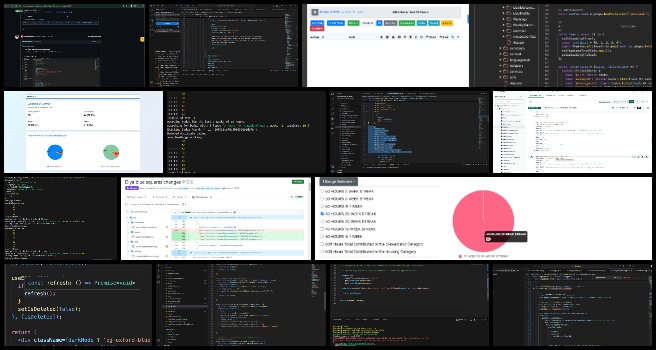
DEV DYNASTY SOFTWARE DEVELOPMENT TEAM
The Dev Dynasty Team’s summary, covering their work on the Highest Good Network software, was managed by Nishita Gudiniye (Software Engineer) and includes Mrinalini Raghavendran (Software Engineer), Nikita Kolla (Full Stack Developer), Shreya Vithala (Software Engineer), Shraddha Shahari (Software Engineer) and Zhifan Jia (Software Engineer). The Highest Good Network software is how we’ll manage and objectively measure our process for sustainable change for the whole planet through our social architecture, construction, production, and maintenance processes.
Mrinalini worked on resolving critical issues with the leaderboard handler and initiated development for the “Create New Listing” task. Her tasks involved integrating functions from the timeOffRequestAction.js file, debugging state changes with React hooks, and implementing dispatch calls for real-time updates. She also submitted a pull request (#3041) for the frontend changes and collaborated with Jae for task approval. These contributions reflect her commitment to fostering efficient systems that align with the broader vision of sustainable change for the whole planet. Nikita completed the optimization and refinement of the code, focusing on improving user experience and addressing previous bugs. She made final adjustments to enhance overall functionality and ensure smoother interface performance. She also began working on adding the “Hours by Task” visualization to the Projects Reports page to provide clearer insights and improve reporting capabilities for users.
Nishita implemented the front-end for the landing page of the Event Popularity Analytics project, adding modules for event cards, no-show tracking metrics, and drop-off metrics while ensuring alignment with Figma mockups. She integrated URL mapping for proper page access and created a pull request for review upon completion. This project aligns with broader goals of innovation and progress, contributing meaningfully to the pursuit of sustainable change for the whole planet. Shraddha addressed a bug in the latest codebase, tracing the issue to an undefined property error in the category field. While some errors were resolved, others remain under investigation, with guidance from Jae. Shreya enhanced unit tests for the permissionsmanagement.test.js file, removed duplicate files, added new test cases, and addressed merge conflicts and npm check errors related to multiple pull requests. After encountering conflicts during a rebase attempt on PR #3044, she reverted the changes on GitHub and plans to start afresh on a new branch. Her efforts contribute to a broader vision of progress, aligning with principles of sustainable change for the whole planet.
Zhifan focused on improving a previous task based on feedback, specifically isolating the pause user functionality in both frontend and backend to enhance security. He clarified logic details with Jae and prepared the task for testing. See the Highest Good Society and Highest Good Network pages for more on how this relates to sustainable change for the whole planet. View some of the team’s work in the collage below.
EXPRESSERS SOFTWARE DEVELOPMENT TEAM
The Expressers Team’s summary, covering their work on the Highest Good Network software, was managed by Strallia Chao (Software Engineer) includes Reina Takahara (Software Developer) and Shreya Laheri (Software Developer). This week, Reina resolved merge conflicts for issues 2978 and 2911, addressed linting and testing errors, and implemented adjustments based on feedback. She created a pull request for task 3035 to add a new team member to the project and completed the associated work. Shreya collaborated with another developer to review feedback from Jae on the HGN Questionnaire Dashboard, documented required changes, updated the design, and continued work on other pages for Phase 3. Their collective efforts align with the broader vision of fostering sustainable change for the whole planet.
Strallia hosted a team meeting, documented three new bugs related to permissions management, and reviewed backend pull request 1185, which focused on sending emails to users with anniversaries displayed on the Total Org Summary page. She identified issues with image attachments and email recipient changes, requested adjustments, and tested and approved the pull request. This work reflects the team’s overarching goal of driving improvements that align with their commitment to sustainable change for the whole planet. For frontend pull request 3007, she updated the description for changes to four components on the Total Org Summary page, resolved a data error in the Work Distribution component, and prepared the pull request for merging. Strallia also assisted a team member in resolving errors potentially caused by committing code changes from a forked repository. See the Highest Good Society and Highest Good Network pages for more on how this relates to sustainable change for the whole planet. See the collage below to view the team’s work.
LUCKY STAR SOFTWARE DEVELOPMENT TEAM
The Lucky Star Team’s summary of the Highest Good Network software, was managed by Anne Zhang (Software Engineer) and includes contributions from Chetan Sunku (Software Engineer), Koushica Bosadi Ulaganathan (Software Engineer), Nikhitha Kalinga (Software Engineer), Neha Bogireddy (Software Engineer), Samarth Bhadane (Software Engineer), T R Samarth Urs (Data Analyst), Shefali Mittal (Volunteer Software Engineer) and Vaibhavi Madhav Deshpande (Software Engineer). This week, Chetan focused on investigating a bug related to the “Interact with Task ‘Ready for Review’” permission, identifying that the button remained disabled despite correct permissions being enabled. Koushica implemented a confirmation modal for tasks in the “ready to review” stage, resolved formatting issues with page titles, fixed a scheduling modal bug, and addressed a timer functionality issue related to duplicate time logging. These enhancements align with our broader vision of driving sustainable change for the whole planet, showcasing our commitment to efficiency and innovation in every task.
Neha worked on a timer pop-out feature, resolving most of the implementation but continuing to refine alignment and researching ways to keep the window on top. She also reviewed an issue with the “Members working on site today” table format and followed up on a previously completed task. Her contributions align with the broader objective of driving sustainable change for the whole planet. Nikhitha focused on creating a button to manage permission access for setting a final day, consolidating and testing context-sensitive permission checks. Samarth B resolved linting issues, addressed merge conflicts in pull requests, and updated code to align with standards while collaborating with the team for smooth integration.
Samarth managed a PR review team, evaluated their contributions, provided feedback, and summarized their work in a blog post, including a collage of reviewed images and outreach for bios. This collective effort contributes to the overarching goal of fostering sustainable change for the whole planet. Shefali worked on an auto-poster for Twitter/X, completing scheduling functionality, adding confirmation messages, and sharing a demo video for feedback. Vaibhavi addressed npm version compatibility errors, resolved issues related to the Mongoose database, and continued progress on HGN phase 3 frontend development. Anne wrote developer notes for future bug fixes, created a pull request to improve column filter sorting, worked on resolving a dropdown menu issue for manager accounts, clarified prerequisites, and managed reviews and photos for the Lucky Star team.See the Highest Good Society and Highest Good Network pages for more on how this relates to sustainable change for the whole planet. See the collage below to view the team’s work.
MOONFALL SOFTWARE DEVELOPMENT TEAM
The Moonfall Team’s summary, covering their work on the Highest Good Network software was managed by Newell Newell (Manager), and includes Bhavya Prakash (Software Engineer), Calvin Liu (PR Team), Nikhil Giri (Software Engineer), Saurabh Shetty (Software Engineer), Shashank Kumar (Software Engineer), Swathi Dharma Sankaran (Software Engineer) and Yili Sun (Software Engineer). This week, Bhavya refined calendar conflict displays and updated time slot designs with warning text based on feedback, while exploring color schemes for availability blocking and continuing work on Figma designs. These updates are an integral part of our broader vision for sustainable change for the whole planet.
Calvin resolved merge conflicts in the CheckTypes component and addressed dark mode styling, search functionality, sorting, and table rendering. He optimized state management and refined data-fetching processes. He ensured compatibility across features, and submitted the updated code for review. This work aligns with the broader vision of creating systems that contribute to sustainable change for the whole planet. Newell reduced WordPress dashboard load times and resolved plugin-related login issues. He optimized image uploads and addressed caching and asset problems. He worked on a mockup for an email template editor. Nikhil reviewed multiple pull requests and verified test cases, UI updates, and functionality across various features, including scheduling, filters, search, and report navigation. Saurabh implemented real-time task progress updates in the Team Member Tasks section and updated both backend and frontend components. Shashank submitted a pull request for fixes verified across browsers and screen sizes, while addressing a profile page spacing issue. These enhancements collectively contribute to advancing sustainable change for the whole planet, reinforcing One Community’s overarching mission.
Swathi updated the Members page to dynamically display project names using props and sessionStorage and improved table layout, and handled API errors in fetch functionality. He submitted her changes for review. Yili worked on permission handling tasks and fixed visibility issues for the “Hide Delete Task” option. He prepared solutions for a bug affecting Managers’ ability to edit tasks. See the Highest Good Society and Highest Good Network pages for more on how this relates to sustainable change for the whole planet. Below is a collage for the team’s work.
REACTONAUTS SOFTWARE DEVELOPMENT TEAM
Reactonauts’ Team’s summary, covering their work on the Highest Good Network software, was managed by Vijeth Venkatesha (Software Engineer) and includes Gmon Kuzhiyanikkal (Software Engineer), Jinxiong You (Software Engineer), Khushi Jain (PR Team I-N), Mohan Gadde (Software Engineer), Nikhil Pittala (Software Engineer), Pallavi Thorat (PR Team O-Sh), Rishitha Mamidala (Software Engineer), Saniya Farheen (Software Engineer) and Sharadha Shivakumar (Software Engineer).
This week, Gmon began working on a new task to hide member tasks with the team toggle and added bell notifications for task deadline completion. He identified an existing PR and marked complete. He finished implementing active/inactive team numbers on the team page and created PR 2850, which is awaiting review. These updates reflect a commitment to fostering seamless collaboration, aligning with the broader vision of achieving sustainable change for the whole planet. Jinxiong resolved layout bugs in the HGN Apps and focused on issues with the reset time button pop-up window. Khushi worked on “Send Feedback Form by Text or Email UI” and enabled users to set notification preferences. She implementing feedback modals with options for opting out and saved preferences. Also, She resolved lint and npm test errors and reviewed PRs related to the Community Calendar, Add Task Modal testing, and WBS action creators. Her contributions align seamlessly with One Community’s mission to foster sustainable change for the whole planet.
Mohan refined the layout in the Admin Reports section to ensure alignment and addressed issues with the “Hours Logged This Week” box. Nikhil reviewed nine PRs and contributed to notifications on the badges icon. He collaborated with the team on identified issues. These efforts contribute to the overarching goal of achieving sustainable change for the whole planet. Pallavi integrated a calendar into the Registration page for event date selection and updated availability counts. She implemented state management using React, while reviewing and aligning with earlier phase developments. Rishitha initiated Phase 2 of the “Create New Team” feature and implementing input fields, dropdowns, pill functionality for team members and tasks. These enhancements contribute to creating streamlined processes that align with our broader mission of sustainable change for the whole planet. Saniya reviewed her PR and tested fixes for a bug. She prepared to address a new issue. Sharadha completed PR 3048 for event registration by type and location and enhanced UI design using React and CSS. She began addressing final reporting tasks.
Vijeth managed team operations and hosted meetings. He addressed technical queries, and investigated app performance issues related to API inefficiencies. Additionally, he reviewed teammates’ work and resolving a dark mode toggle bug. See the Highest Good Society and Highest Good Network pages for more on how this relates to sustainable change for the whole planet. Below is a collage for the team’s work.
SKYE SOFTWARE DEVELOPMENT TEAM
Skye Team’s summary, covering their work on the Highest Good Network was managed by Rishabh Rao (Administrator) and Luis Arevalo (Software Engineer) and the team includes Abi Liu, Koba Kvantrishvili (Software Developer), Laura Cohen (Software Engineer), Sai Preetham (Full Stack Developer), Snehal Dilip Patare (Software Engineer) and Yao Wang (Software Engineer). The Highest Good Network software is how we’ll manage and objectively measure our process for sustainable change for the whole planet through our social architecture, construction, production, and maintenance processes.
This week, Abi worked on the volunteer trends line chart query, focusing on refining its functionality to ensure accurate data representation. He resolved issues with the query for both monthly and weekly aggregations, enabling it to return results that appear valid. Despite this progress, some bugs persist when querying by a custom date range, and he continues to debug these issues to improve the query’s reliability. These efforts play a vital role in advancing sustainable change for the whole planet by ensuring data-driven insights guide impactful decisions. Laura worked on resolving a bug where removing permission from a user does not update the permissions displayed on the user profile. She attempted fixes by updating the logic in the PermissionListItem and PermissionList components, which manage the removal process, and focused on identifying the issue preventing the state from properly reflecting changes on sustainable change for the whole planet.
Snehal worked on the HGNRest backend for the Facebook auto-poster feature. She made modifications to fetch data and images from the weekly editor for posting on the Facebook page feed. Additionally, she updated the system to retrieve the Facebook access code using the app_id and app_secret from the developer portal. Her contributions align with our broader vision of sustainable change for the whole planet, as these updates enhance communication and outreach efforts. Koba worked on identifying and resolving a bug causing Jae’s account to be assigned blue squares. The issue remains unresolved, as testing the application and the assignBlueSquareForTimeNotMet method against various test cases did not reveal any problems. Without access to the specific faulty data from the production database and an understanding of how this data is processed within the application, the root cause remains unclear. Additionally, Koba addressed another issue raised by Jae related to color changes and minor frontend adjustments to the dashboard. These changes were implemented and merged into the codebase through frontend PR3037, working on sustainable change for the whole planet.
Sai Preetham worked on implementing role-based access control to hide the “Pause” and “Set Final Day” buttons on the Volunteer Dashboard and Profile Page, ensuring these buttons are visible only to Admin and Owner roles. The implementation involved integrating a permission check using hasPermission(‘manageUserStatus’) to enhance role-based functionality and system security. He is in the process of verifying that the manageUserStatus permission is properly configured and assigned within the permission management logic. During testing, some bugs were identified, and he is actively working on resolving these issues while maintaining the intended functionality for authorized users. Additional tasks included working on the weekly summary and Dropbox images for the week. By enhancing these systems, his work contributes to building a more efficient platform that supports sustainable change for the whole planet. Yao created an app on Reddit and obtained the secret and client ID, but has not yet found a method to dynamically retrieve the token. The backend code was optimized, and the frontend UI was designed similarly to a LinkedIn post. An input field was added to the send email page, which will later be transferred to the auto poster front end once completed. During development, there were issues related to the token, and solutions are being explored for sustainable change for the whole planet.
Luis revised the email templates for issuing warnings and incorporated feedback from Jae on issuing a blue square. He refactored the modal to integrate it into the existing component, avoiding duplication by not creating a new modal. Additionally, he followed up with Jae regarding the process for sending the email when clicking the button and is awaiting further feedback. See the Highest Good Society and the Highest Good Network pages to learn more about how their work contributes to sustainable change for the whole planet. See below for the work done by the group.
SOFTWARE PR REVIEW TEAM A-H
The PR Review Team’s summary for team members’ names starting with A-H and covering their work on the Highest Good Network software was managed by Saumit Chinchkhandi (Administrative Assistant and Software Engineer). The Highest Good Network software is a foundation of what we’ll be using to measure our results of sustainable change for the whole planet. This week’s active members of this team were: Abdelmounaim Lallouache (Software Developer), Carl Bebli (Software Engineer), Carlos Gomez (Full-Stack Software Developer), and Honglin Chen (Software Engineer). They reviewed all the Highest Good Network PRs (Pull Requests) shared in this week’s update. Learn more about how the Highest Good Network measures and supports sustainable change for the whole planet by exploring the Highest Good Network open-source hub. The collage below shows a compilation of the work from this team.
SOFTWARE PR REVIEW TEAM I-N
The PR Review Team’s summaries for team members’ names starting with I-N and covering their work on the Highest Good Network software was managed by Anoushka Hazari (Data Analyst). The Highest Good Network software is a foundation of what we’ll be using to measure our results for sustainable change for the whole planet. This week’s active members of this team were: Jinda Zhang (Software Engineer/Machine Learning Engineer), Kurtis Ivey (Full Stack Developer), Nahiyan Ahmed (Full Stack Software Developer) and Nathan Hoffman (Software Engineer). They reviewed all the Highest Good Network PRs (Pull Requests) shared in this week’s update. Learn more about how the Highest Good Network will measure and assist in sustainable change for the whole planet in the Highest Good Network open source hub. The collage below shows a compilation of the work from this team.
SOFTWARE PR REVIEW TEAM O-Z
The PR Review Team’s summary for team members’ names starting with O-Z and covering their work on the Highest Good Network software was managed by Olawunmi “Ola” Ijisesan (Administrative and Management Support) and Samarth Urs (Administrative Assistant and Data Analyst). The Highest Good Network software forms the foundation for measuring our results in sustainable change for the whole planet practices. This week’s active members of this team were Sabitha Nazareth (Software Engineer), Sai Girish Pabbathi (Software Engineer), Shengwei “Peter” Peng (Software Engineer), Srikanth Pusthem (Full Stack Developer), Vivek Sharma (Software Developer) and Xiyan Li (Software Engineer Intern). They reviewed all the Highest Good Network PRs (Pull Requests) shared in this week’s update. Learn more about how the Highest Good Network measures and supports sustainable change for the whole planet practices by exploring the Highest Good Network open-source hub. The collage below shows a compilation of the work from this team.
AND WE PRODUCED THIS WEEKLY UPDATES BLOG – CLICK HERE TO SUBSCRIBE
FOLLOW ONE COMMUNITY’S PROGRESS (click icons for our pages)
INVESTOR PAGES
GET INVOLVED
One Community Welcomes Jason Bao to the Architecture Team!
Posted on January 19, 2025 by One Community Hs
One Community welcomes Jason Bao to the Architecture Team as our newest Volunteer/Consultant!
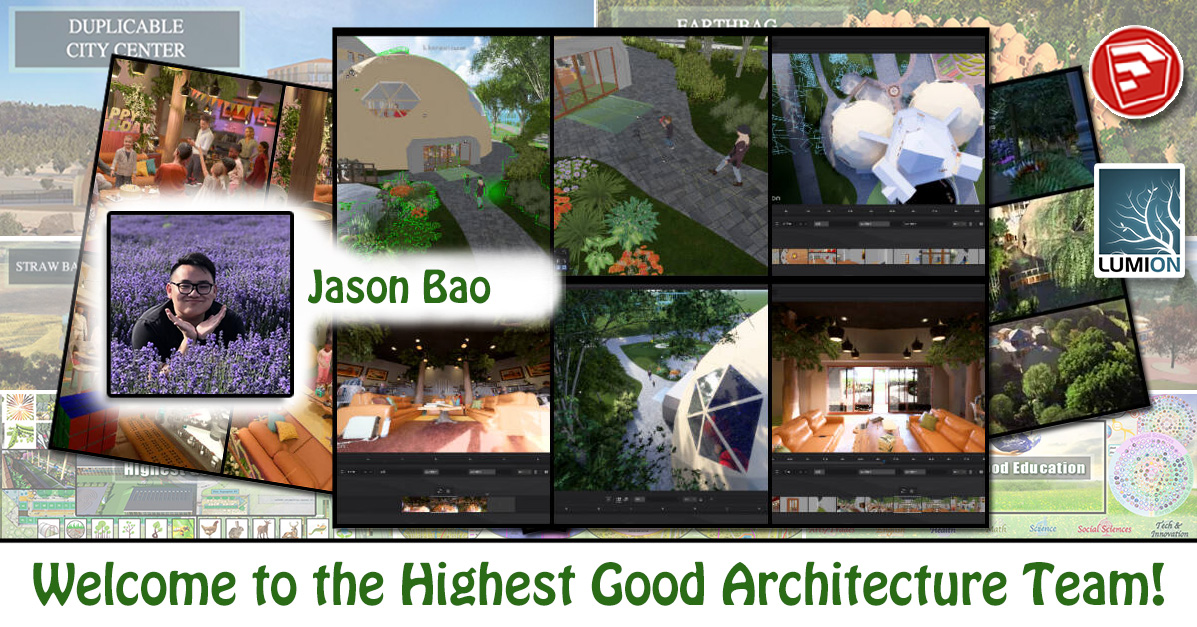
Jason has experience across a diverse range of design fields, including interior design, product design, and experience design. He is passionate about creating functional, user-centered spaces and designs that balance aesthetics with sustainability and community needs. His professional work includes contributions to large-scale architectural visualizations, digital product designs, and interdisciplinary collaborations. As a member of the One Community team, Jason has contributed extensively to the design and visualization of the Duplicable City Center’s Social Dome space. His work has centered on creating a series of detailed scenes that illustrate the library’s multi-functional design, showcasing its potential as a hub for community engagement and interaction.
WELCOME TO THE TEAM JASON!
FOLLOW ONE COMMUNITY’S PROGRESS (click icons for our pages)
INVESTOR PAGES
GET INVOLVED
One Community Welcomes Sheetal Mangate to the Software Development Team!
Posted on January 19, 2025 by One Community Hs
One Community welcomes Sheetal Mangate to the Software Development Team as our newest Volunteer/Consultant!
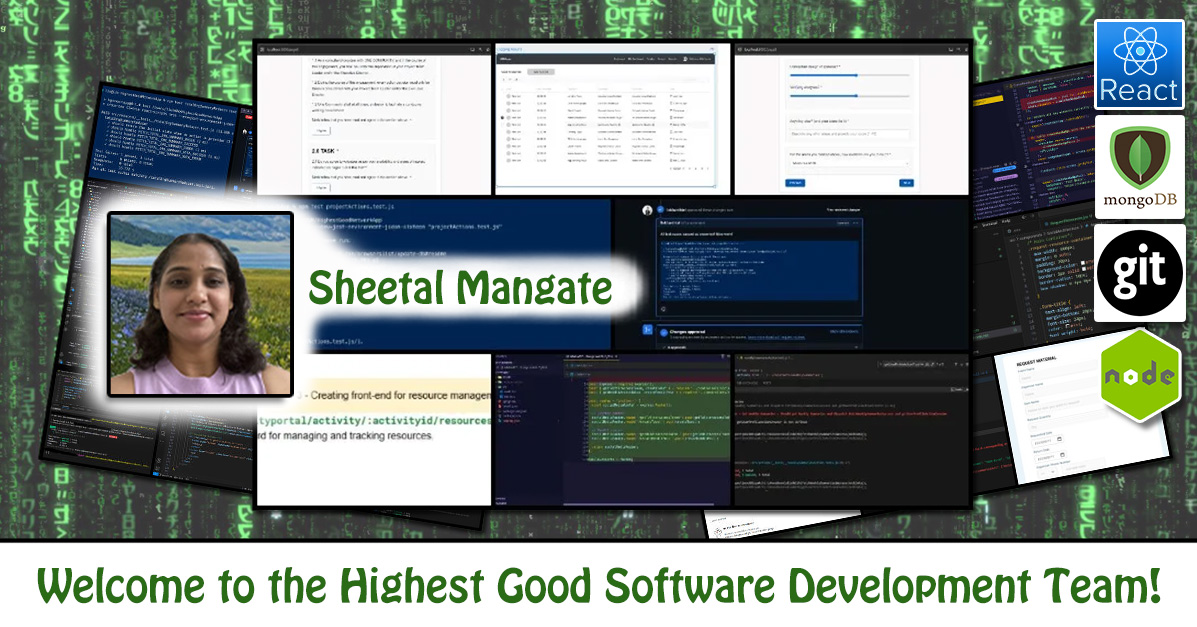
Sheetal is an adaptive Software Engineer with over 8 years of experience in full-stack development. She recently graduated from UCI’s Full Stack Coding Bootcamp. Her career includes a diverse range of projects, demonstrating a solid foundation in software development and problem-solving, troubleshooting and code optimization. She is proficient in Java, React, Spring Boot, Nodejs, JavaScript, GraphQL, MongoDB and AWS. Sheetal has a proven track record of delivering comprehensive end-to-end solutions including designing, developing, testing, and deploying scalable applications. As a member of One Community, she is working on writing test cases to achieve quality assurance of Highest Good Network software and conducting thorough pull request reviews.
WELCOME TO THE TEAM SHEETAL!
FOLLOW ONE COMMUNITY’S PROGRESS (click icons for our pages)
INVESTOR PAGES
GET INVOLVED
One Community Welcomes Nanguan Lin to the Software Development Team!
Posted on January 18, 2025 by One Community Hs
One Community welcomes Nanguan Lin to the Software Development Team as our newest Volunteer/Consultant!
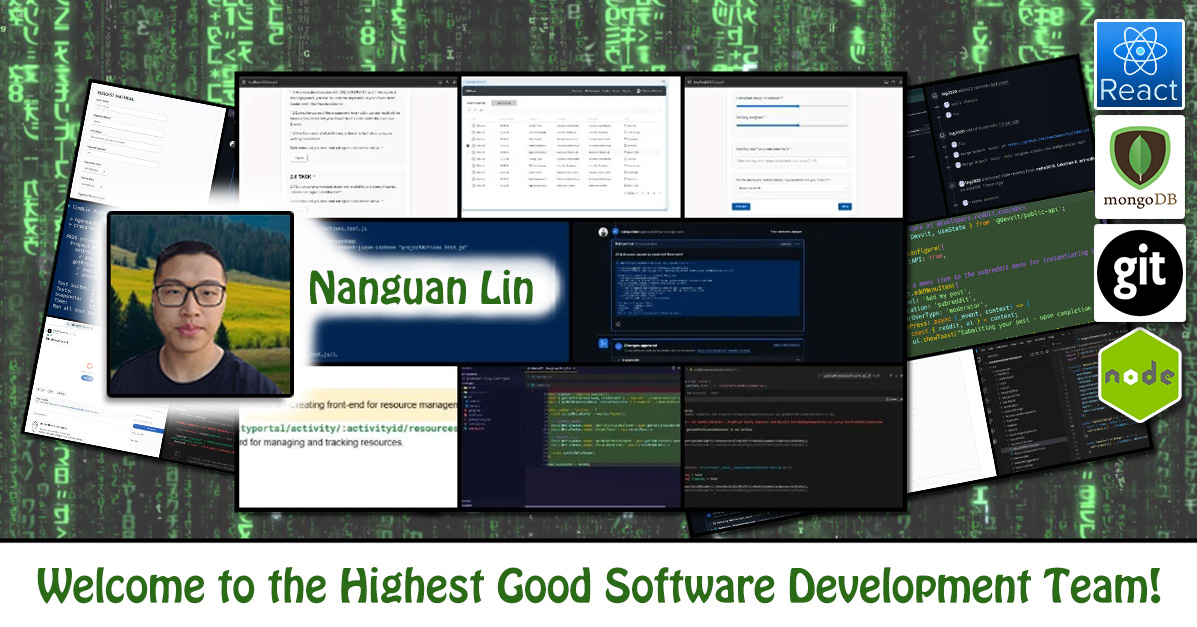
Nanguan is a master’s student in Computer Engineering at the University of Illinois Urbana-Champaign and has over 4 years of software development experience across various fields. He has demonstrated his expertise in web application development, both frontend and backend. As a member of the One Community software team, Nanguan continues to contribute to the development of the Highest Good Network app by improving code sustainability and readability through refactoring front-end code and writing unit tests.
WELCOME TO THE TEAM NANGUAN!
FOLLOW ONE COMMUNITY’S PROGRESS (click icons for our pages)
 One Community
One Community